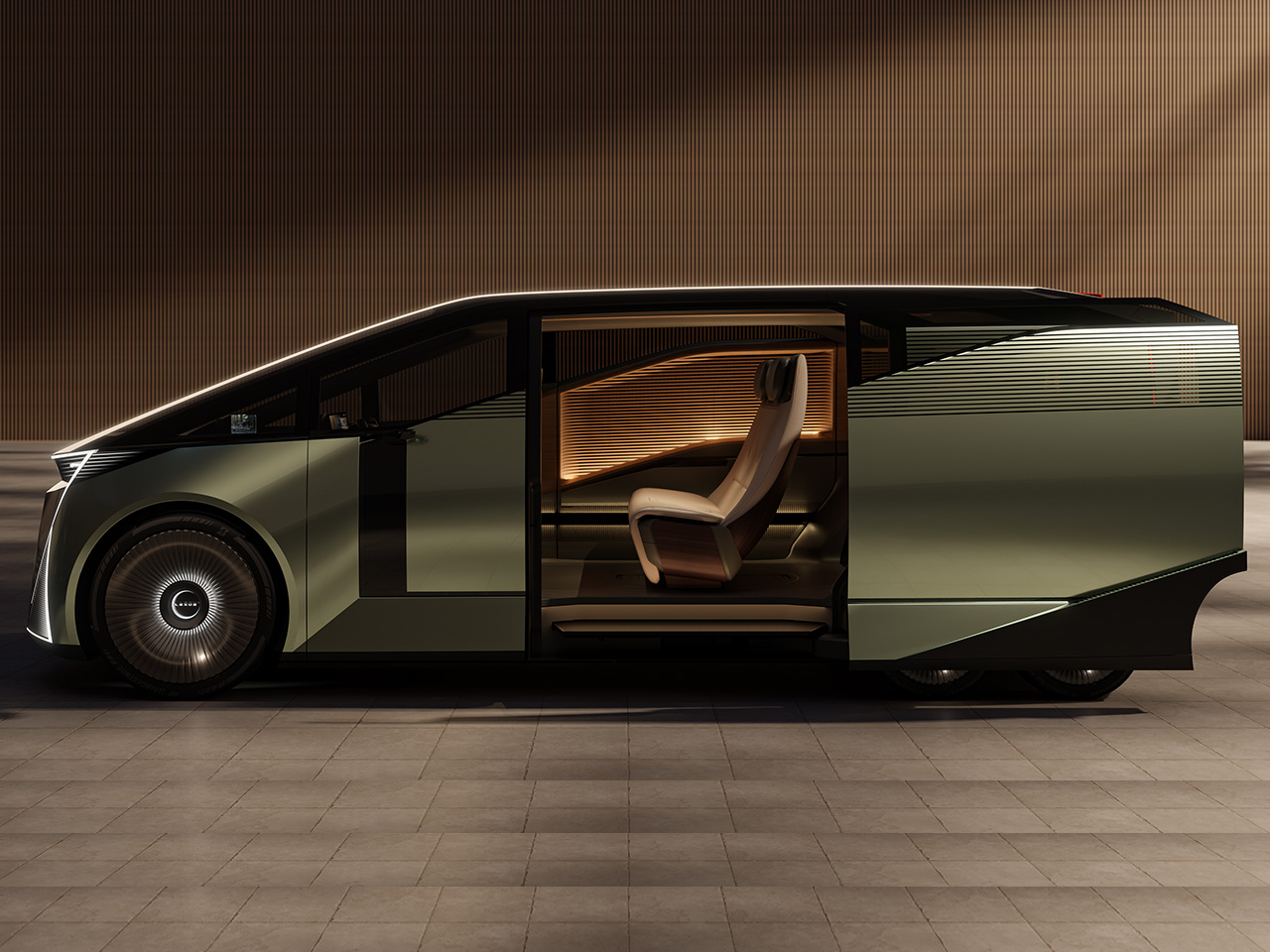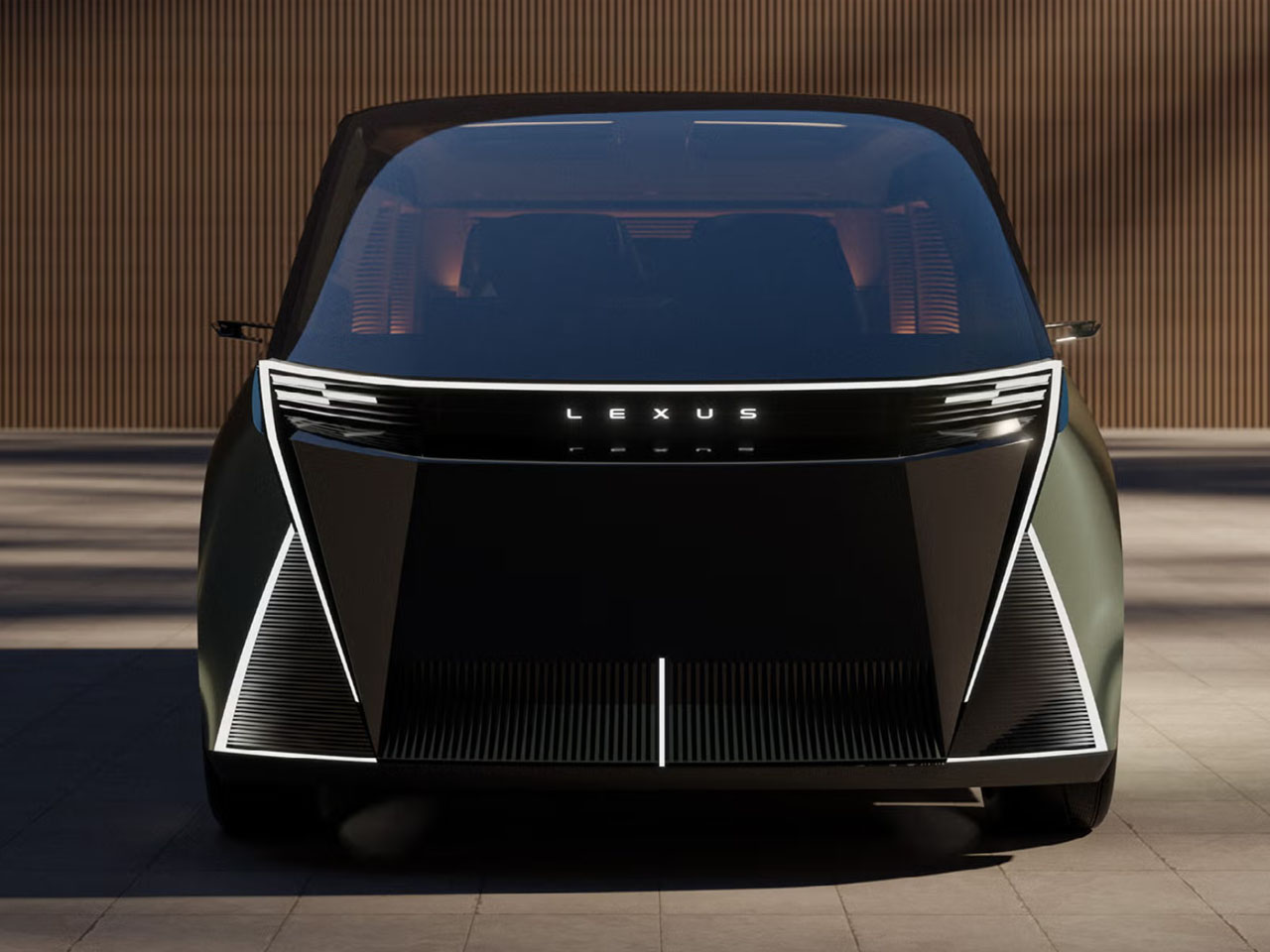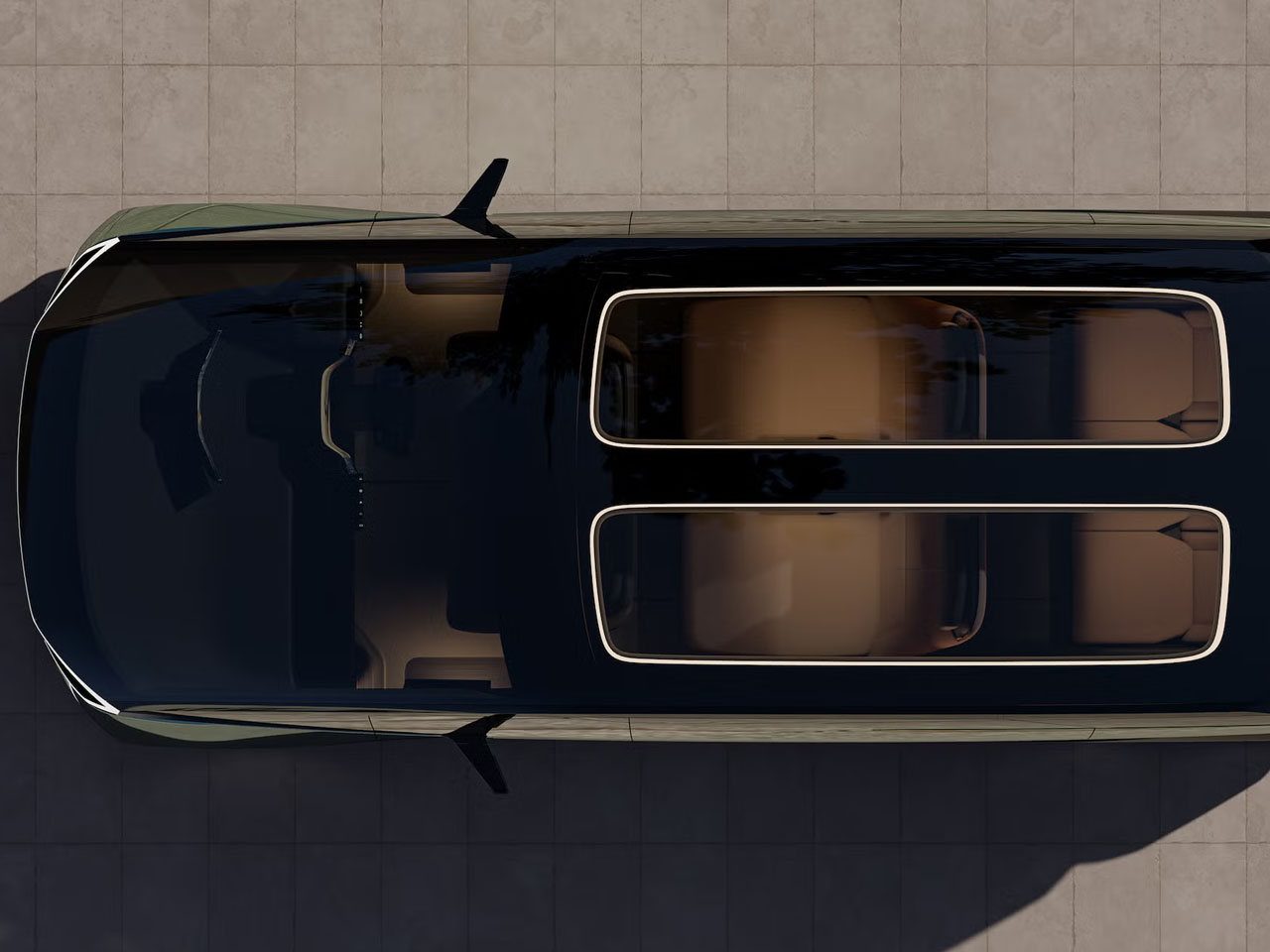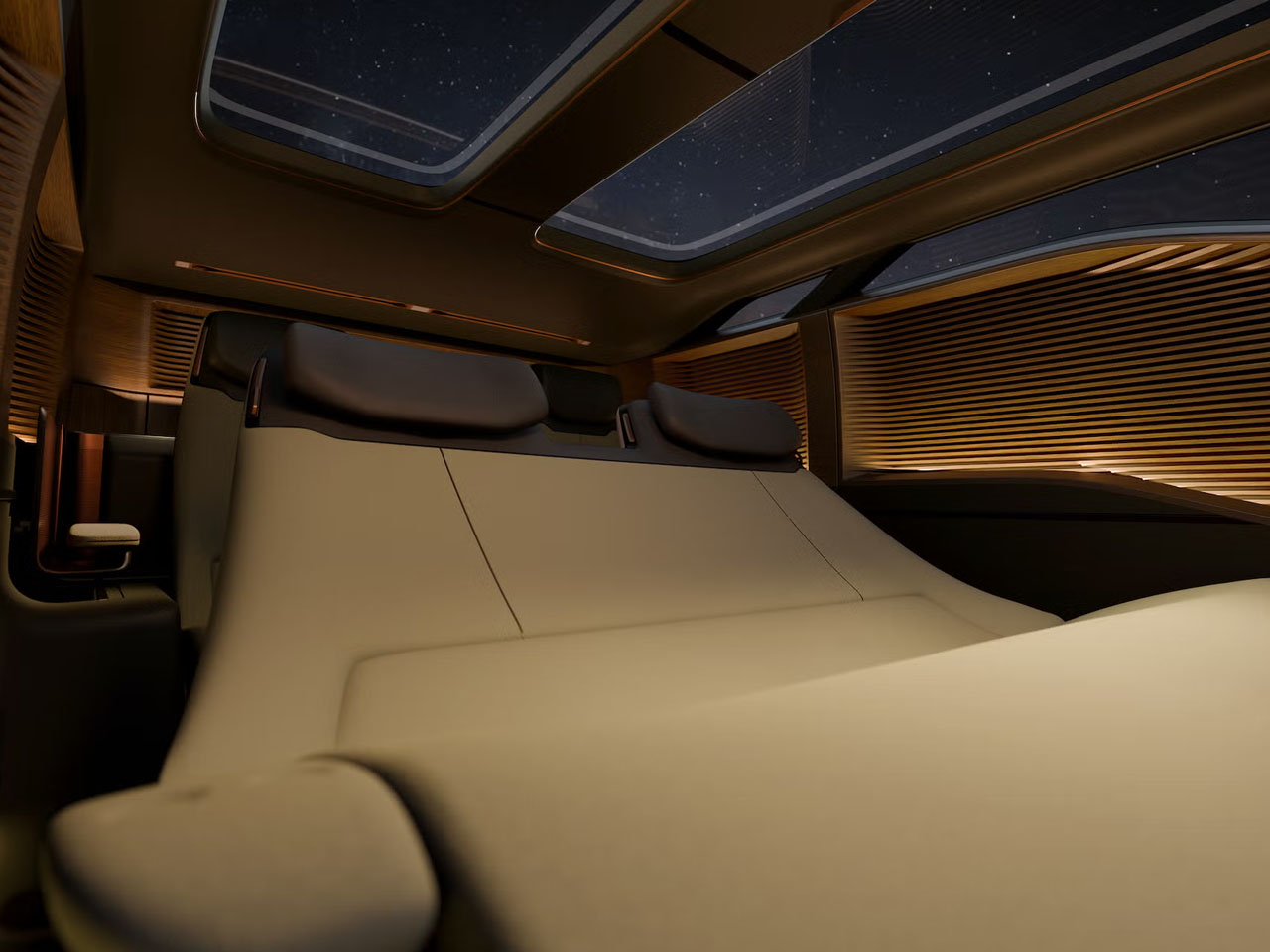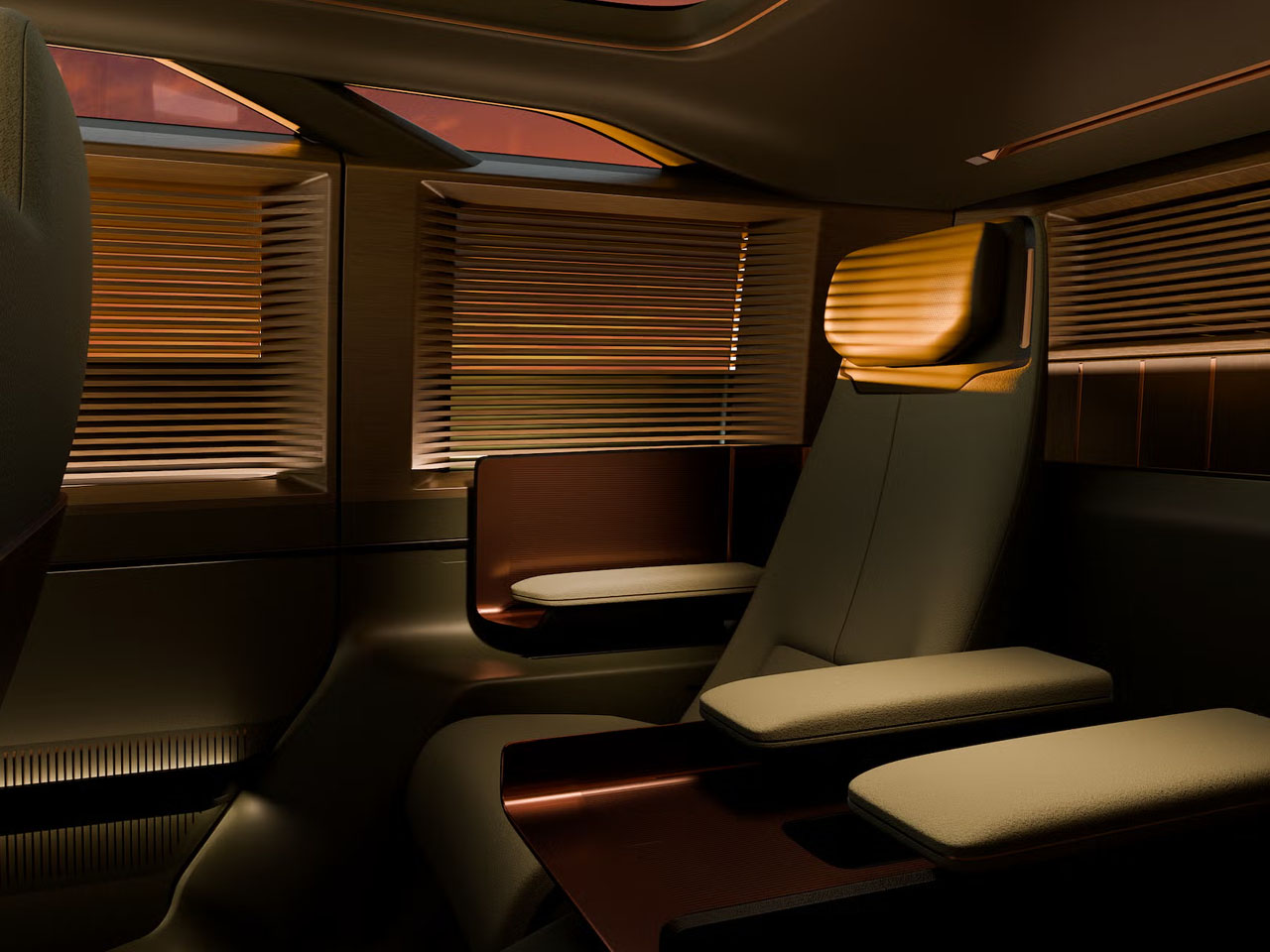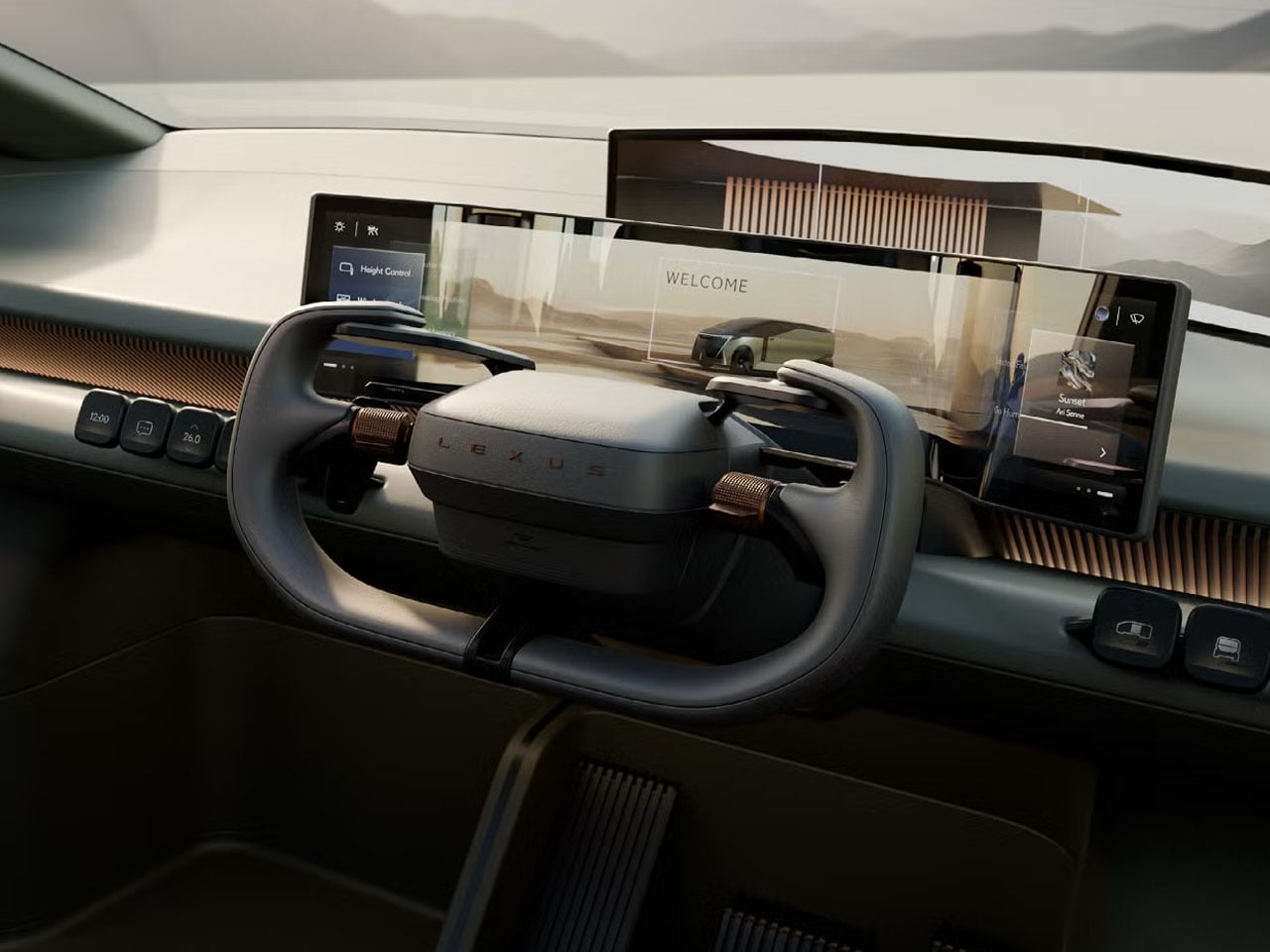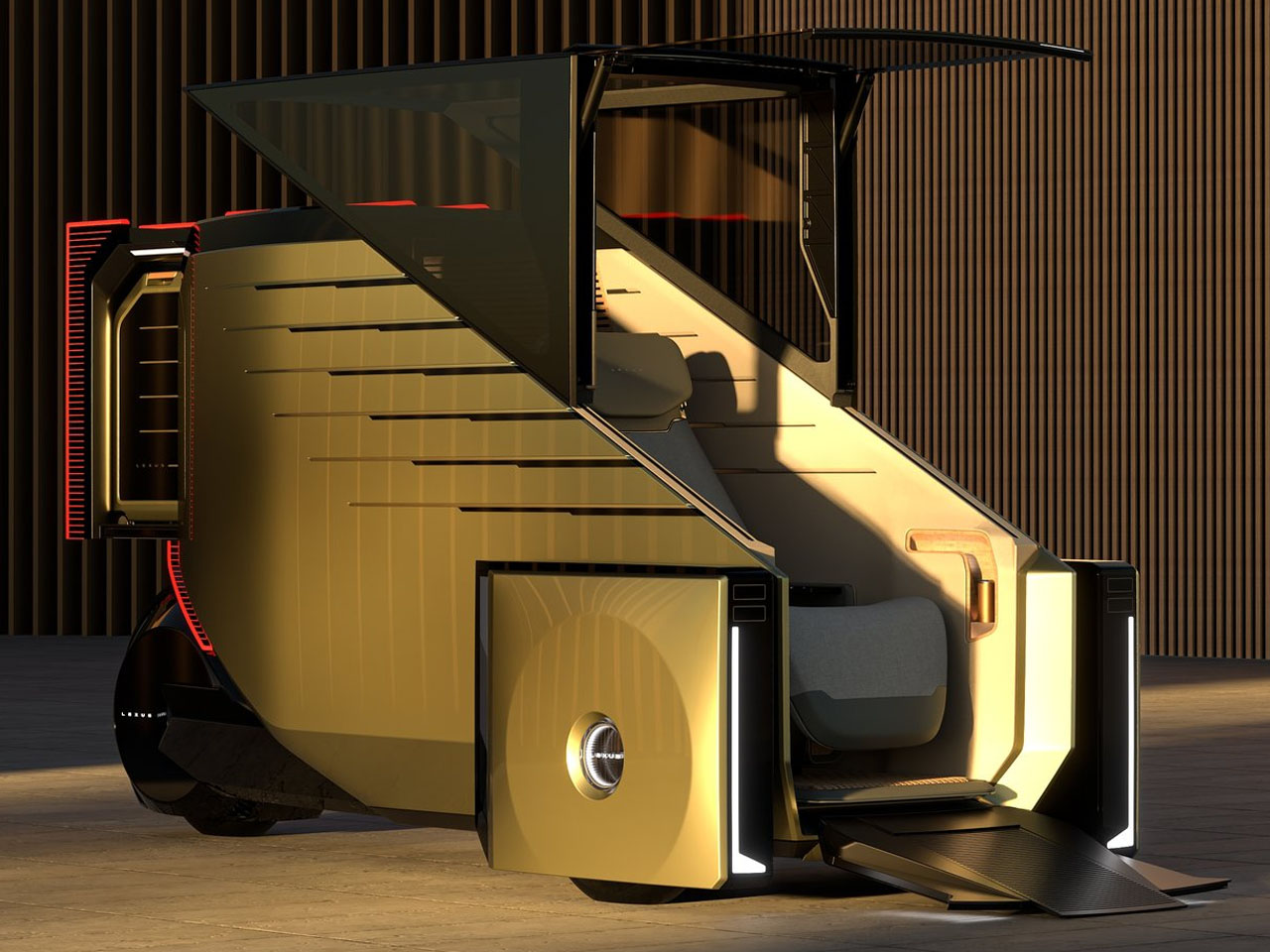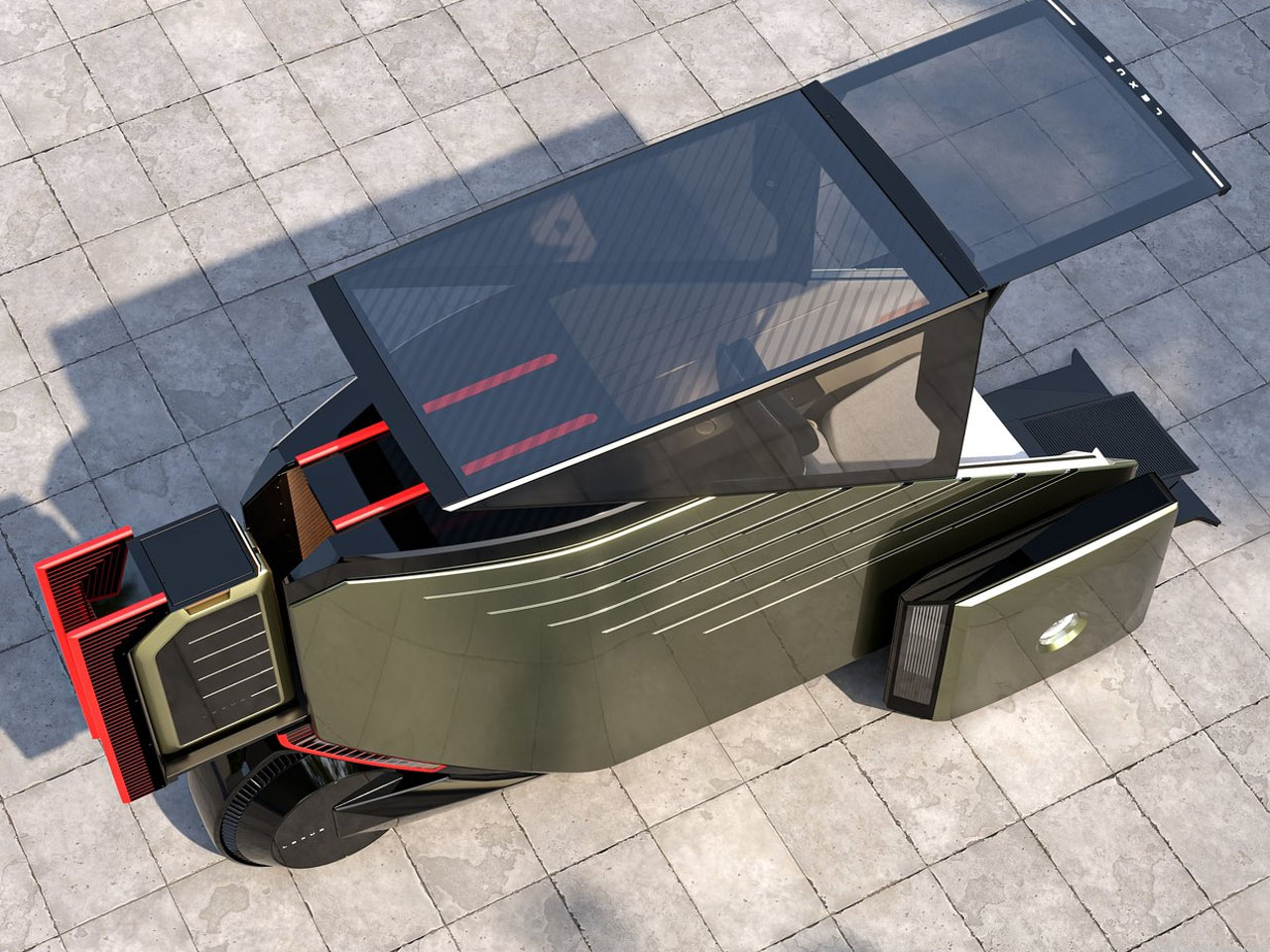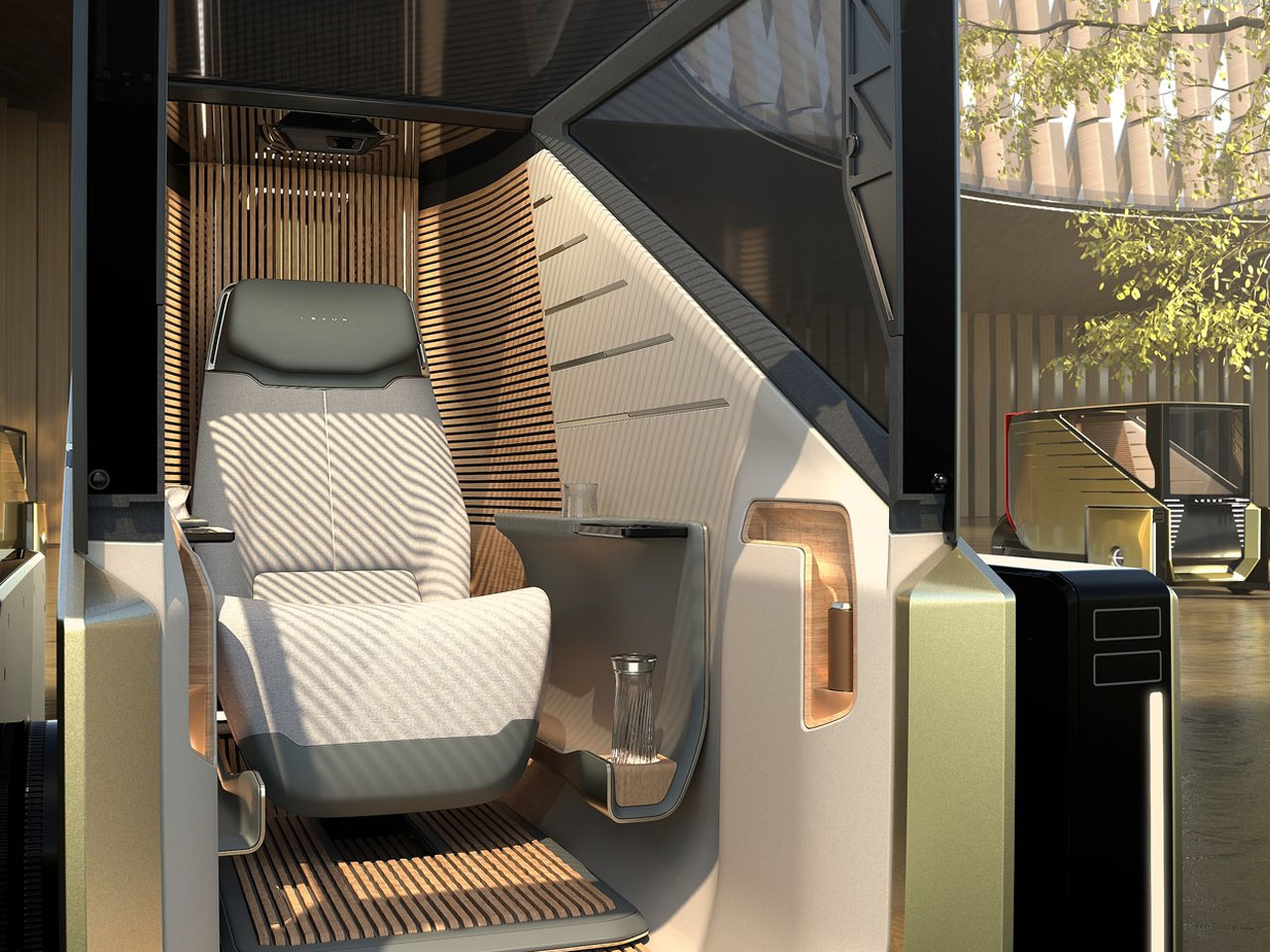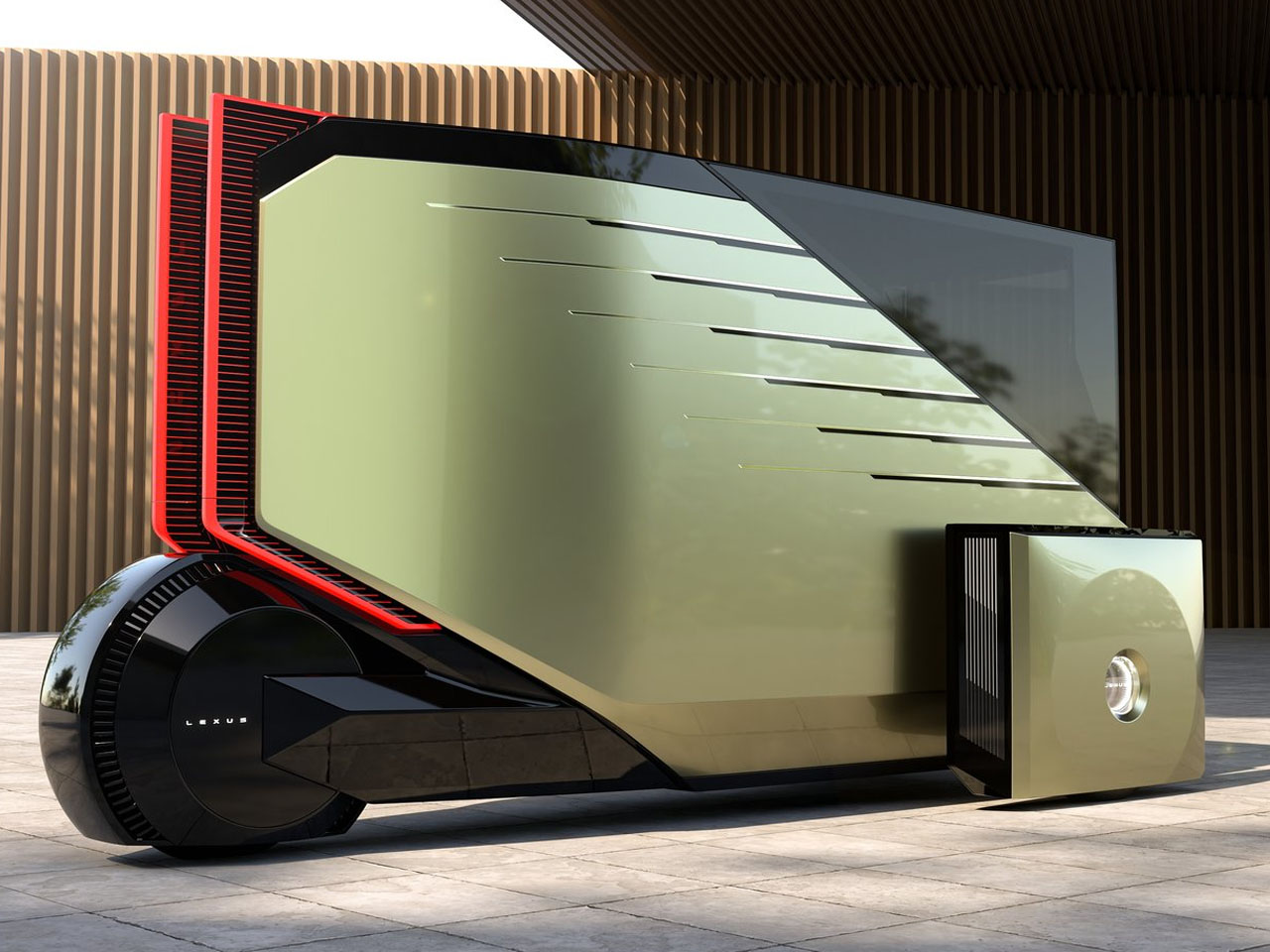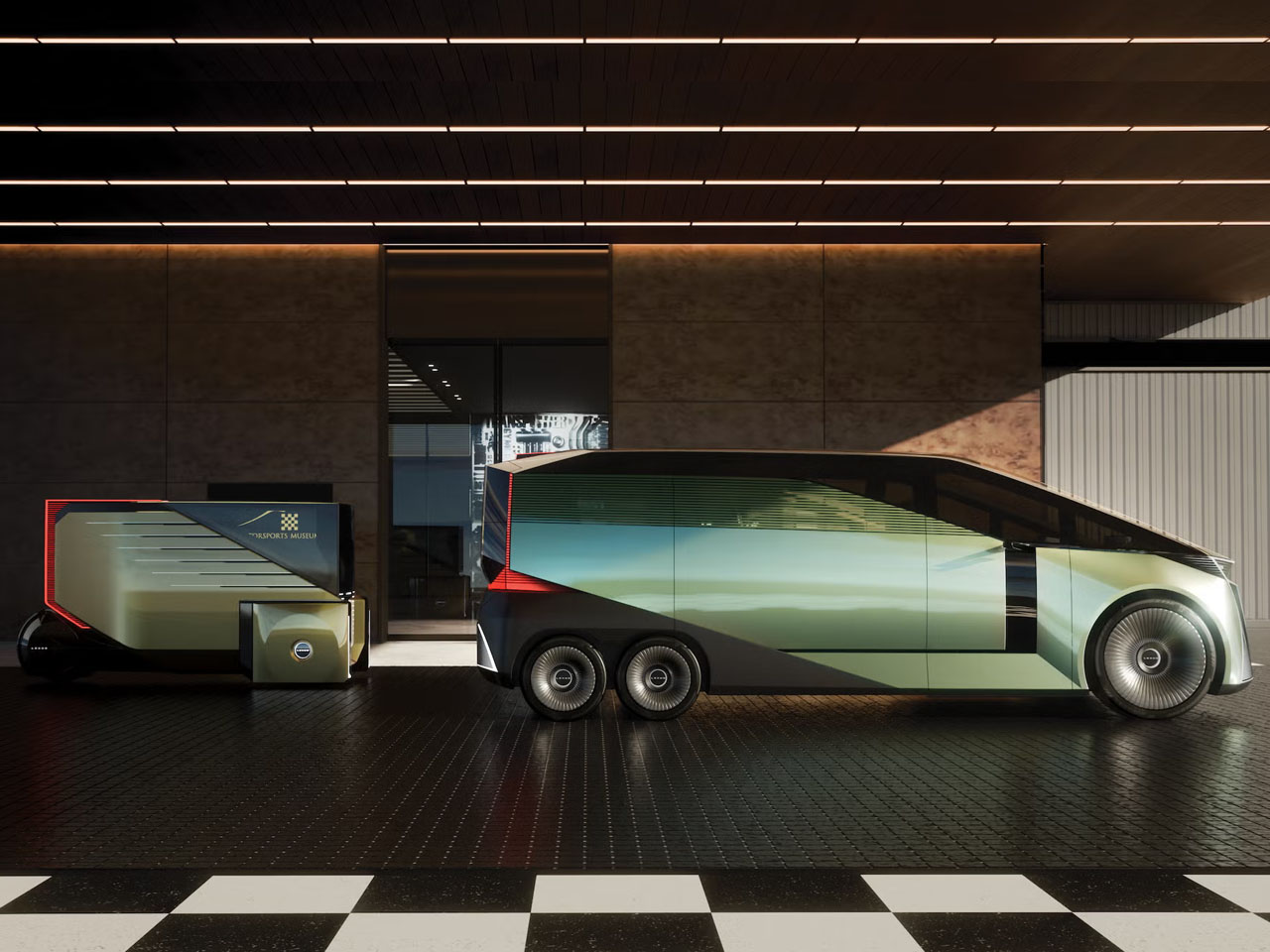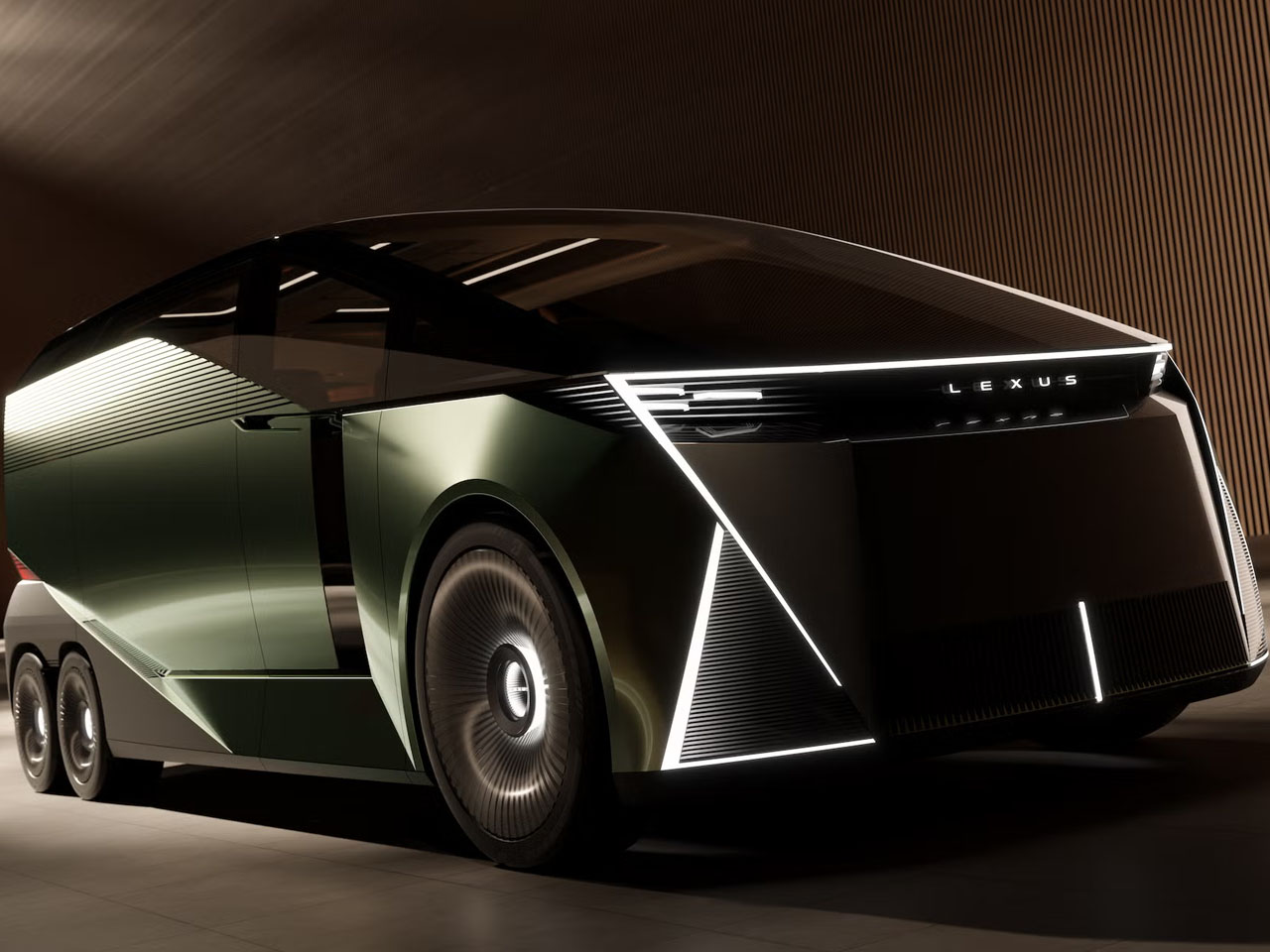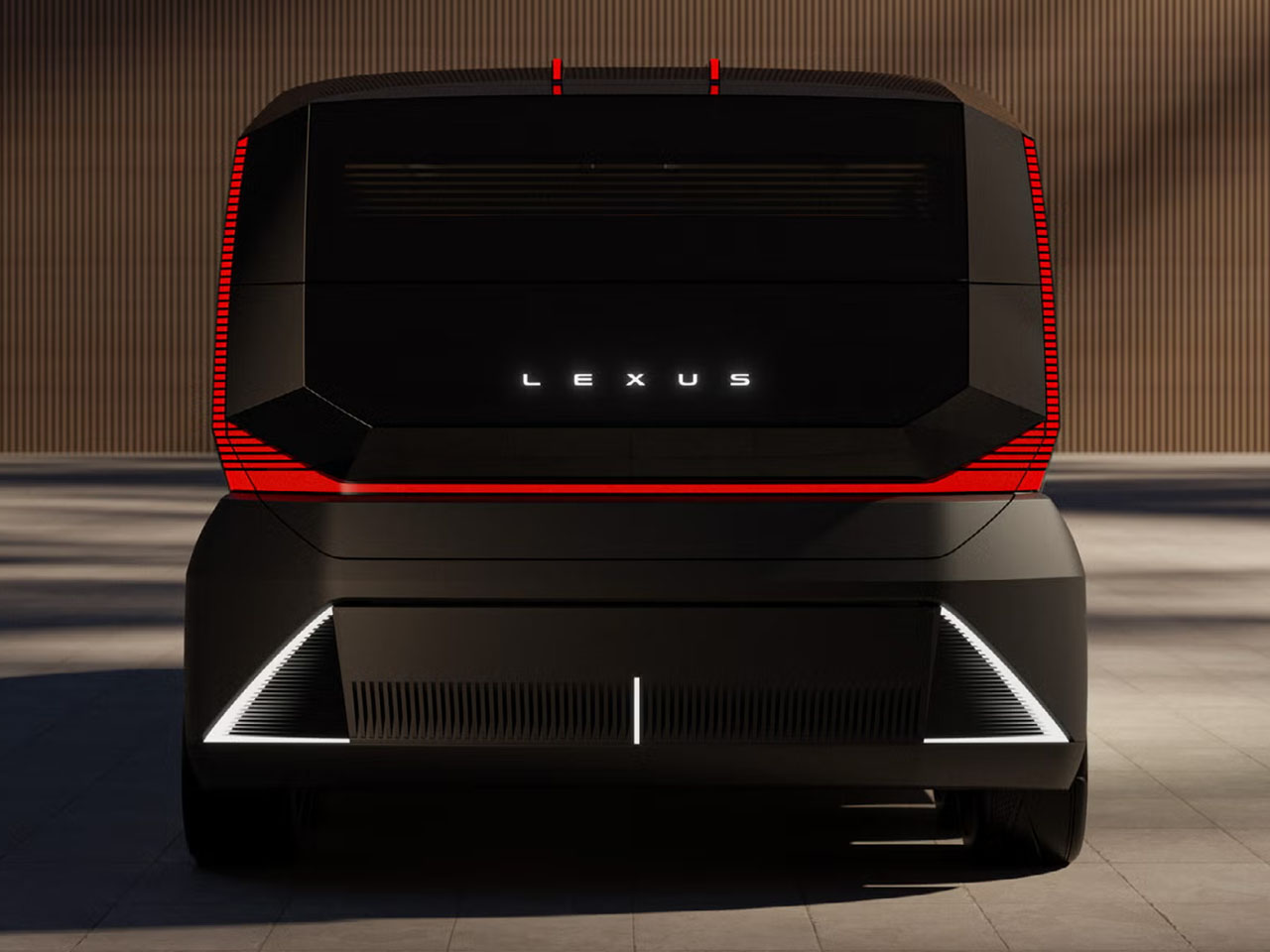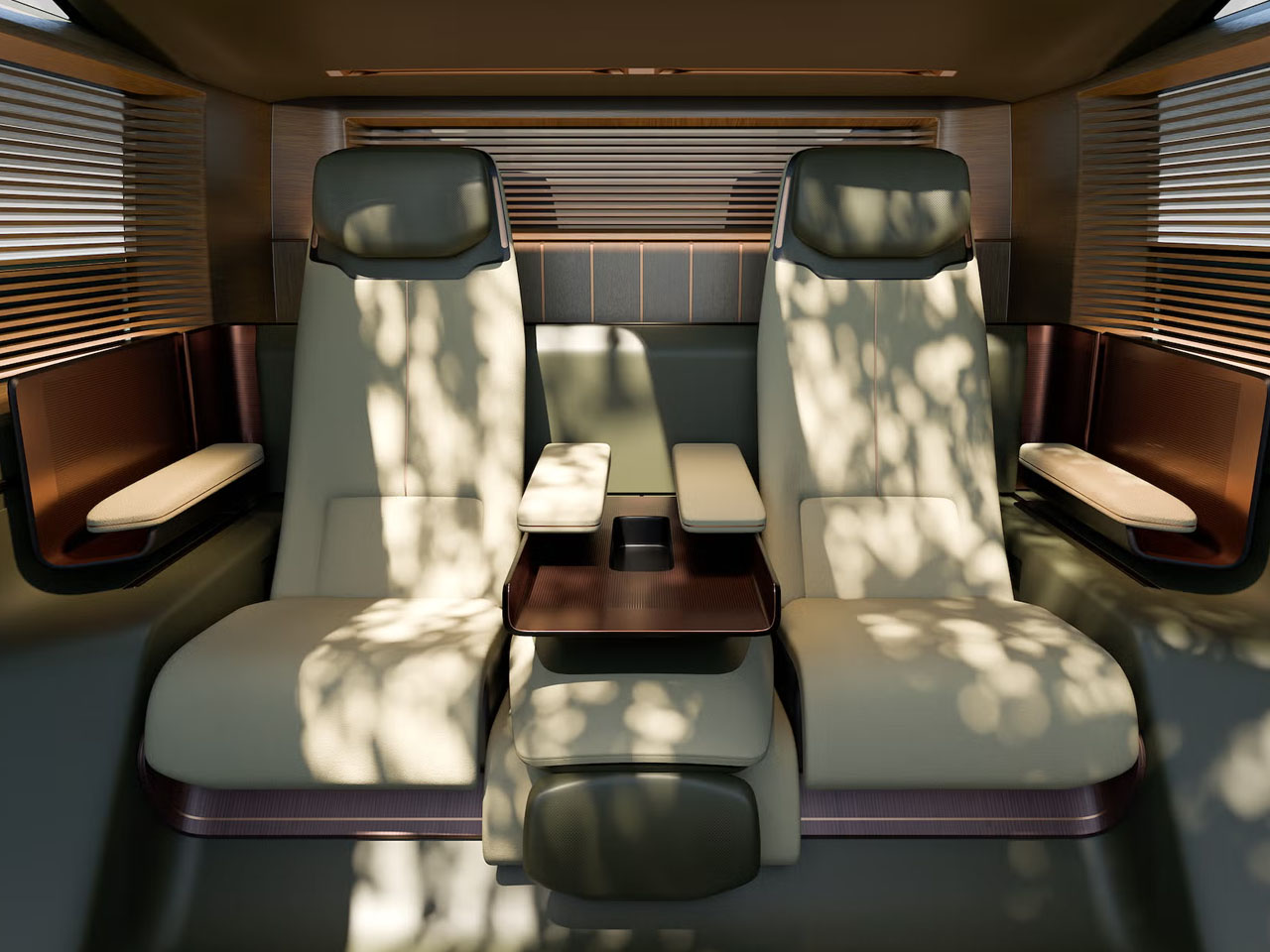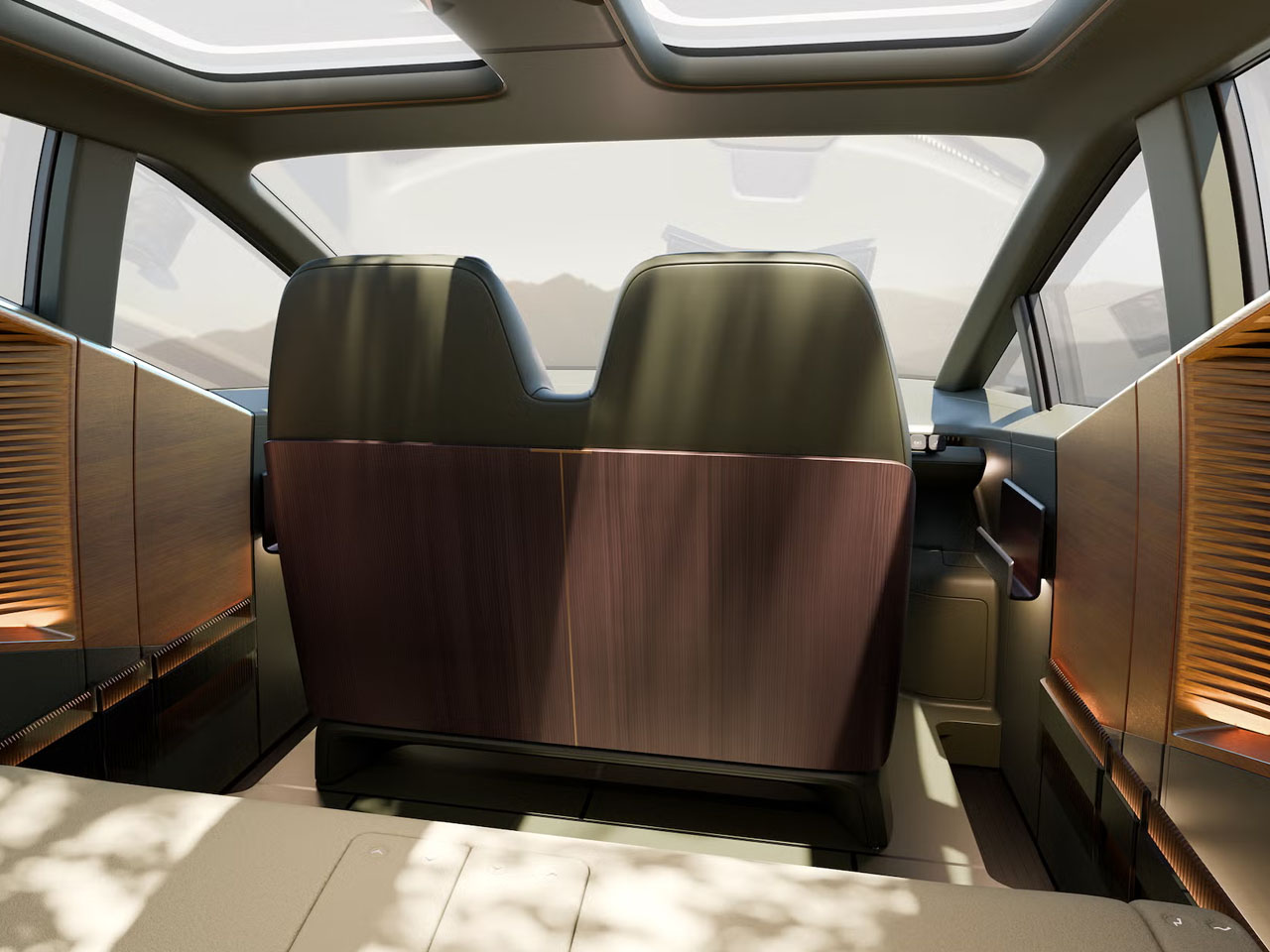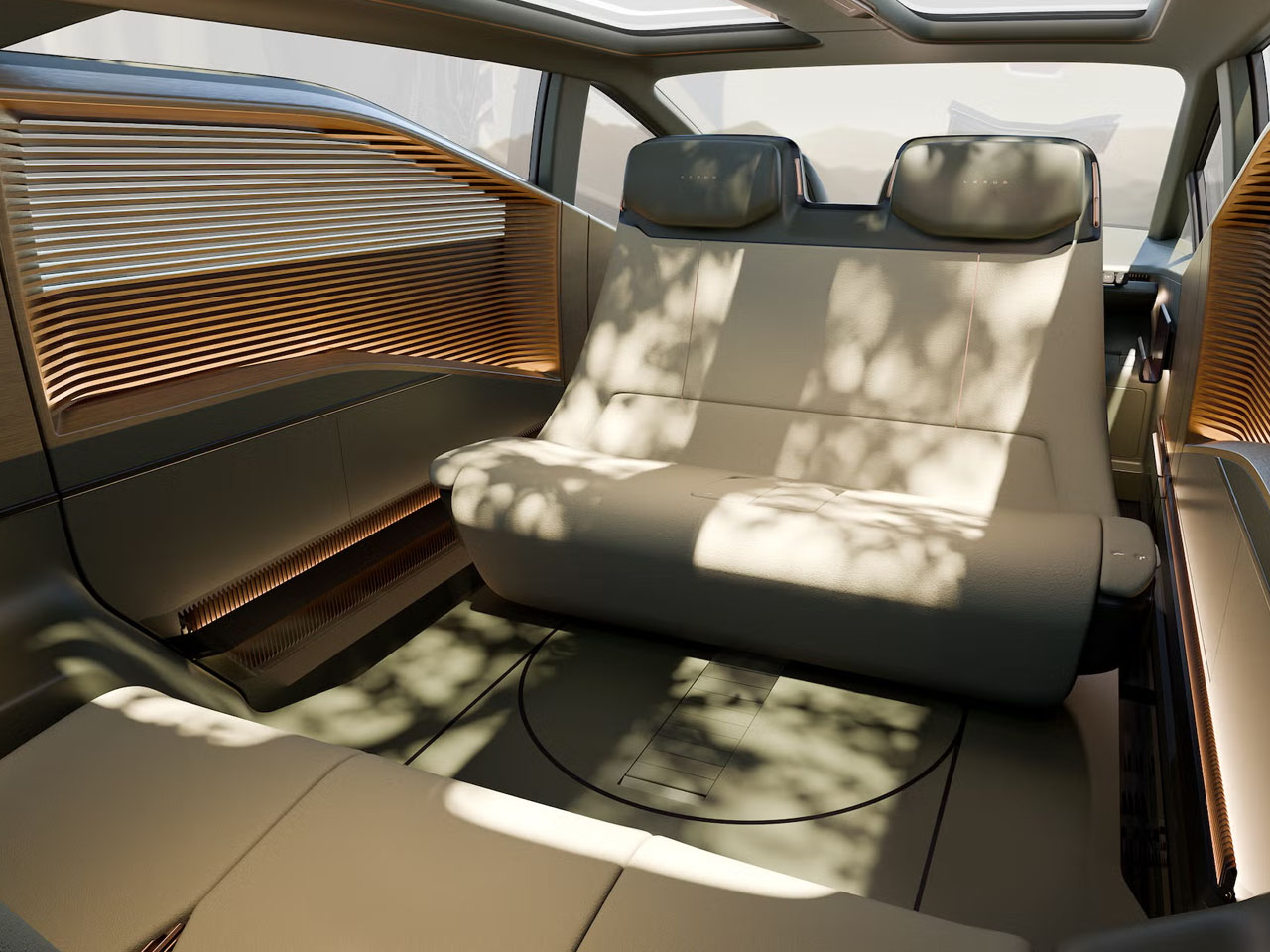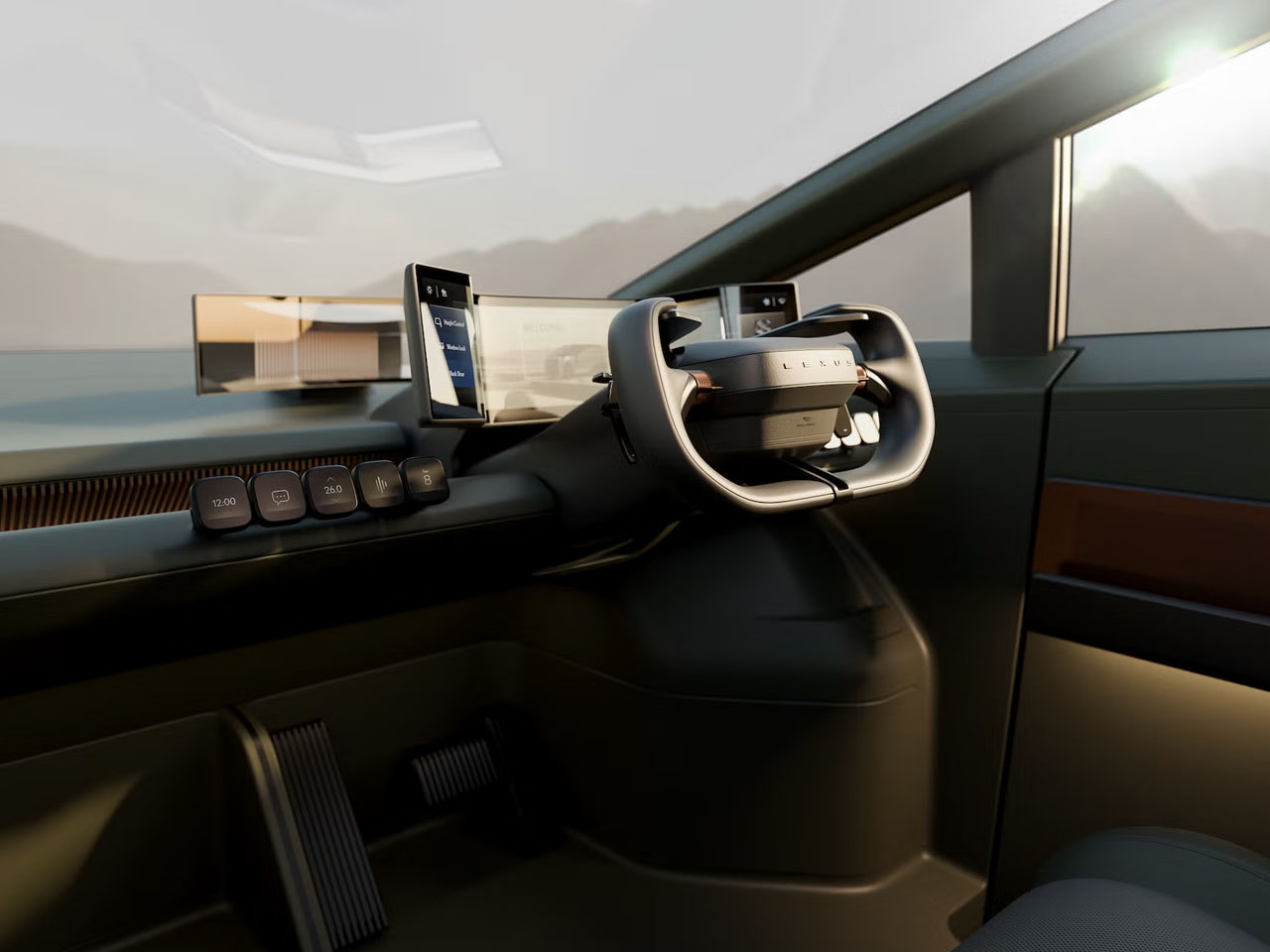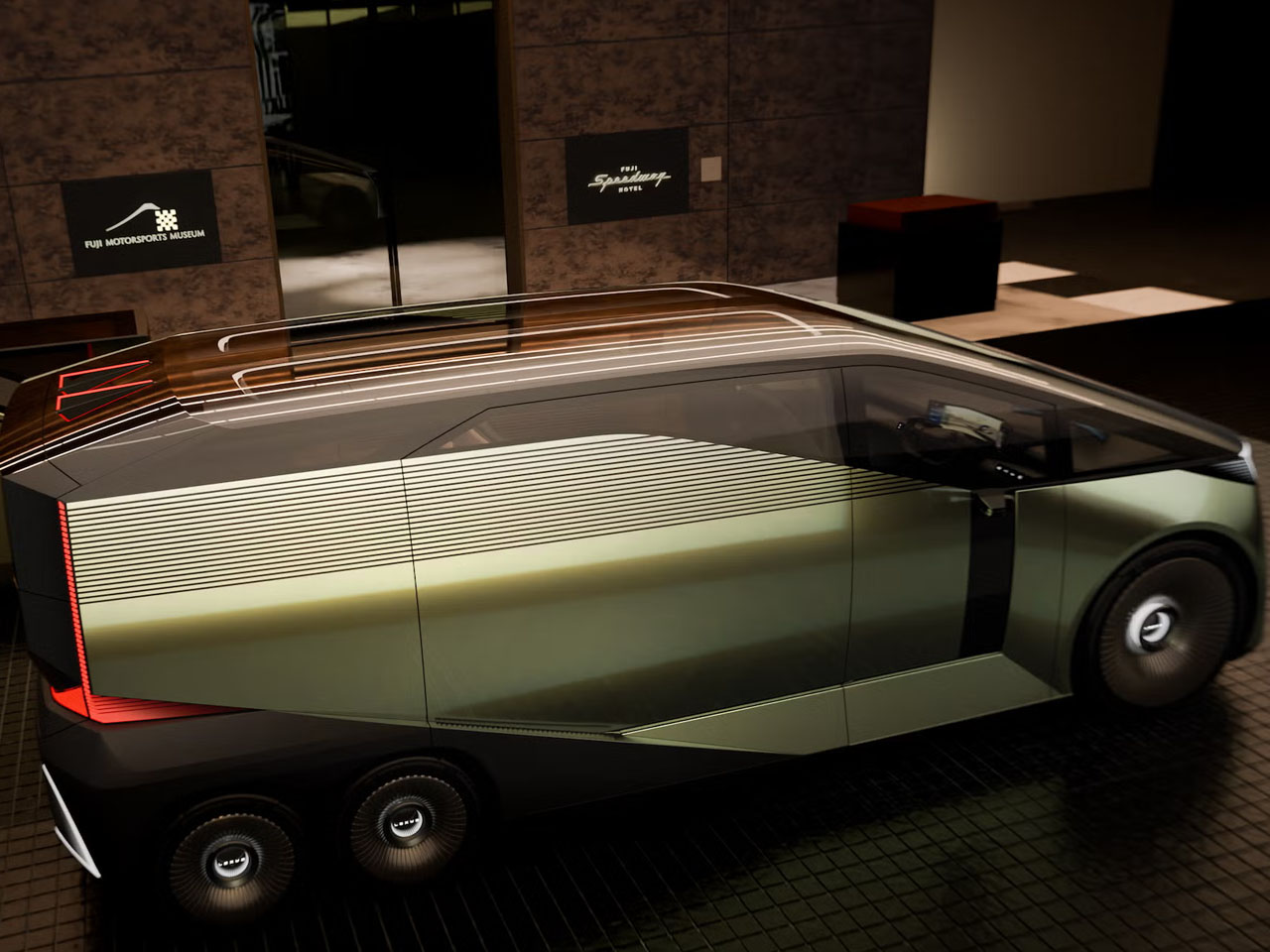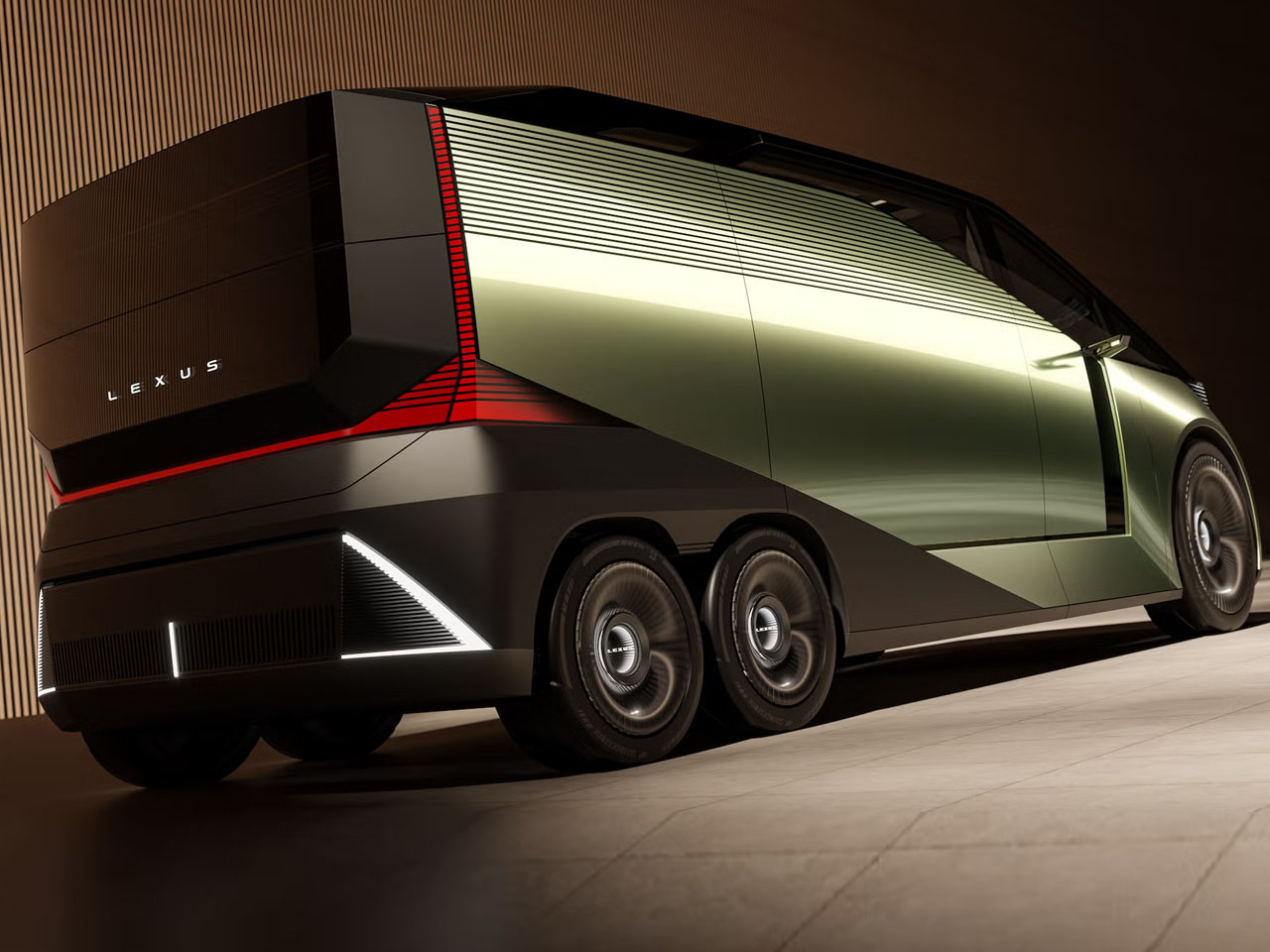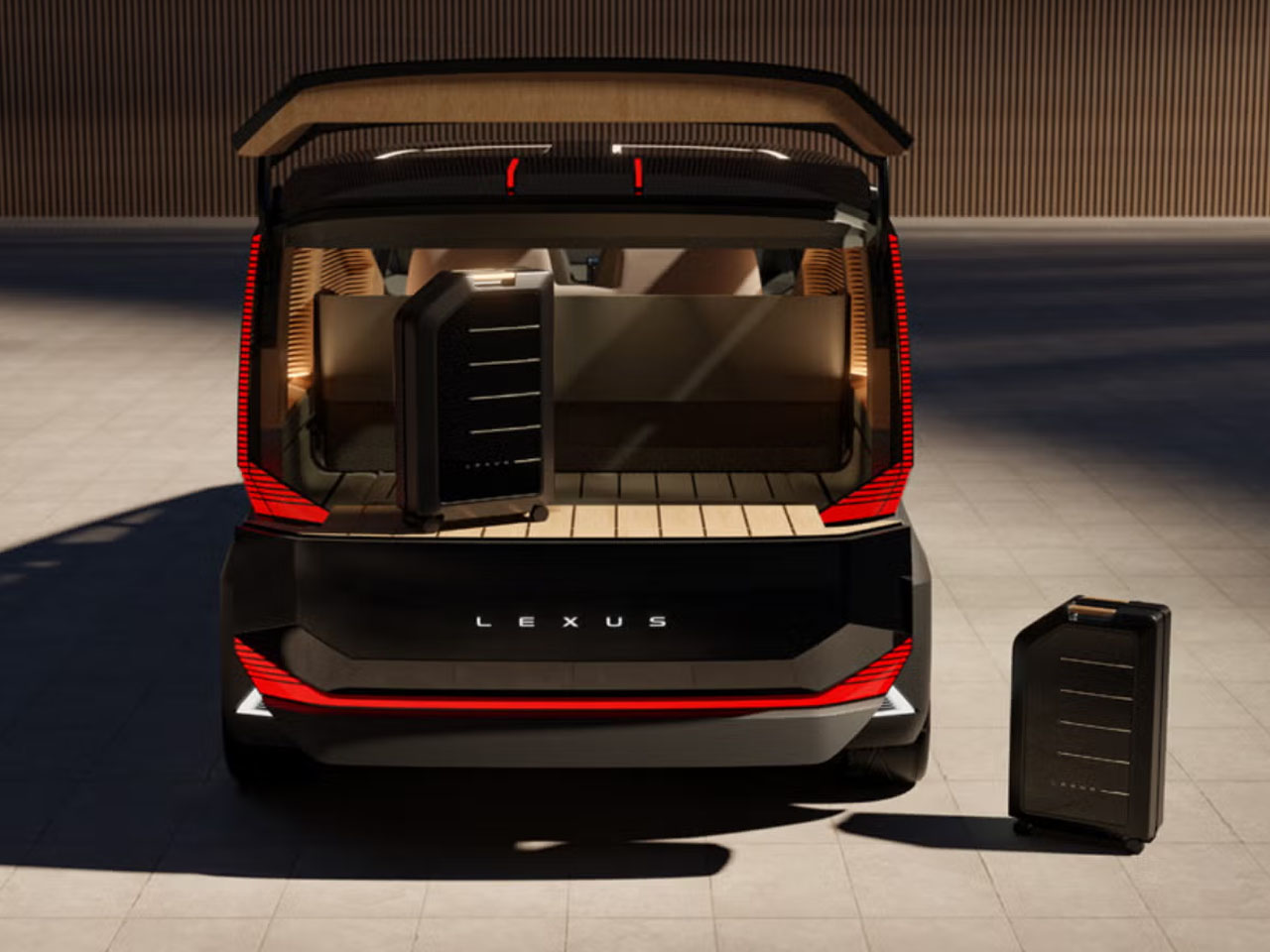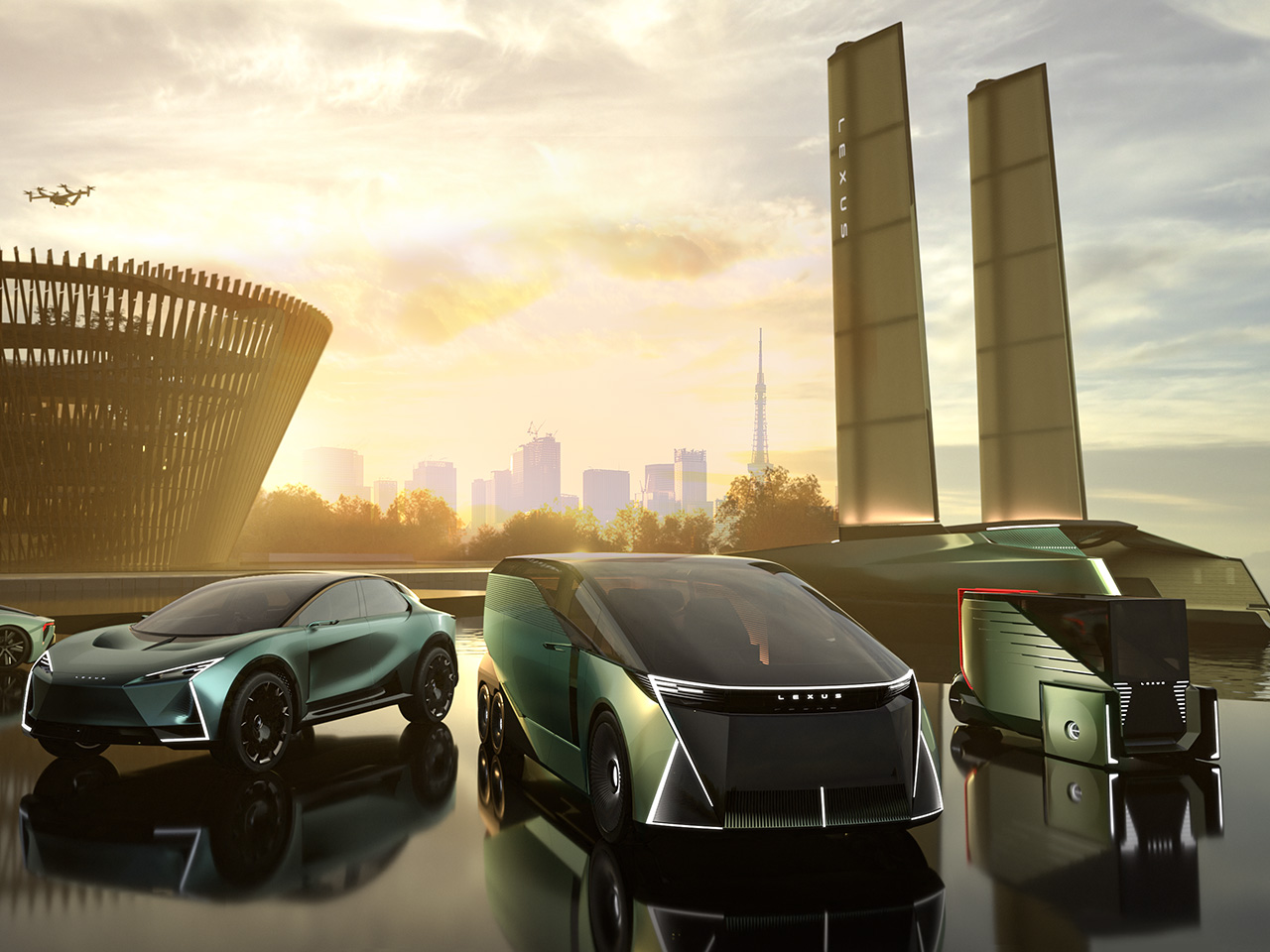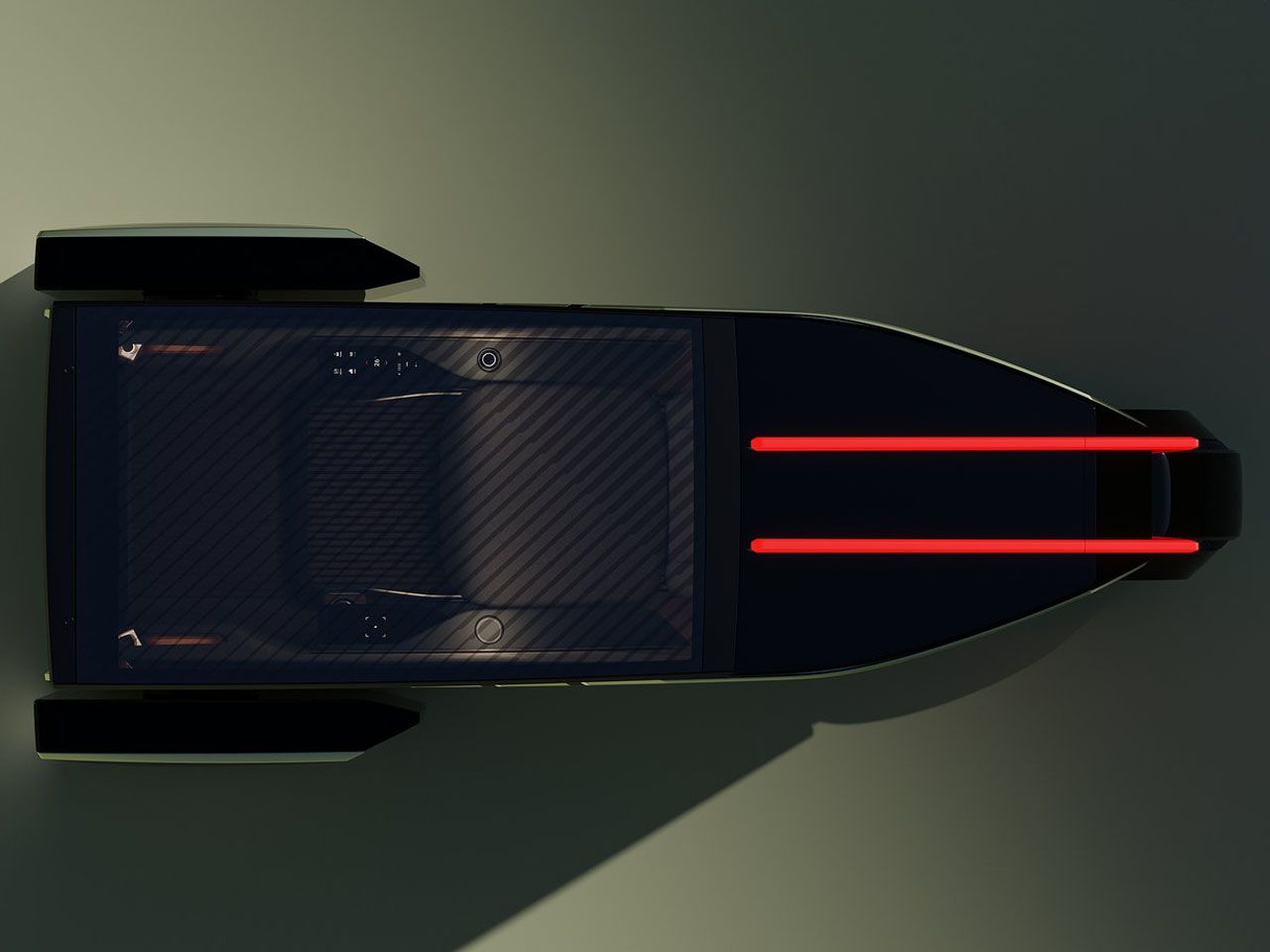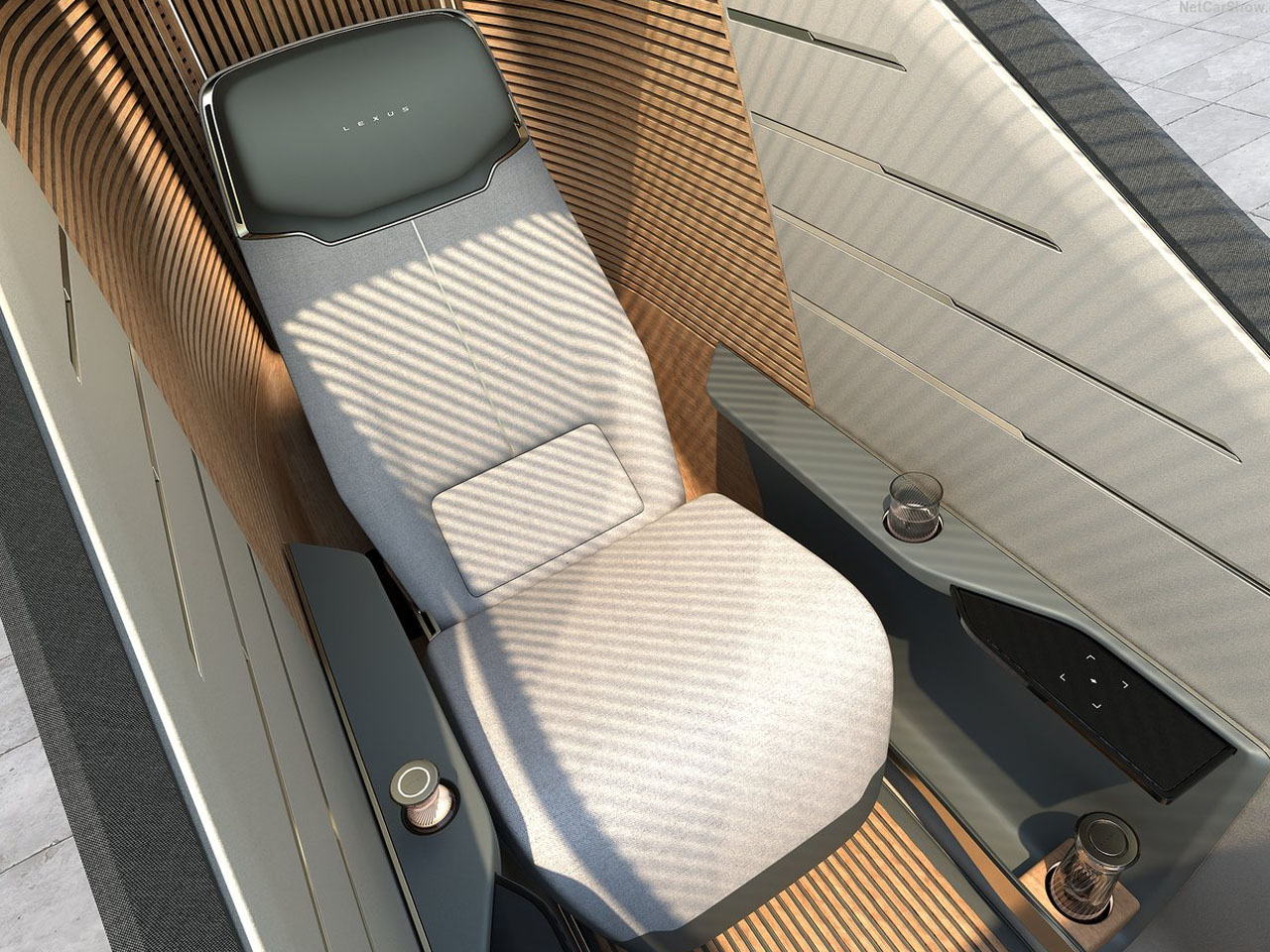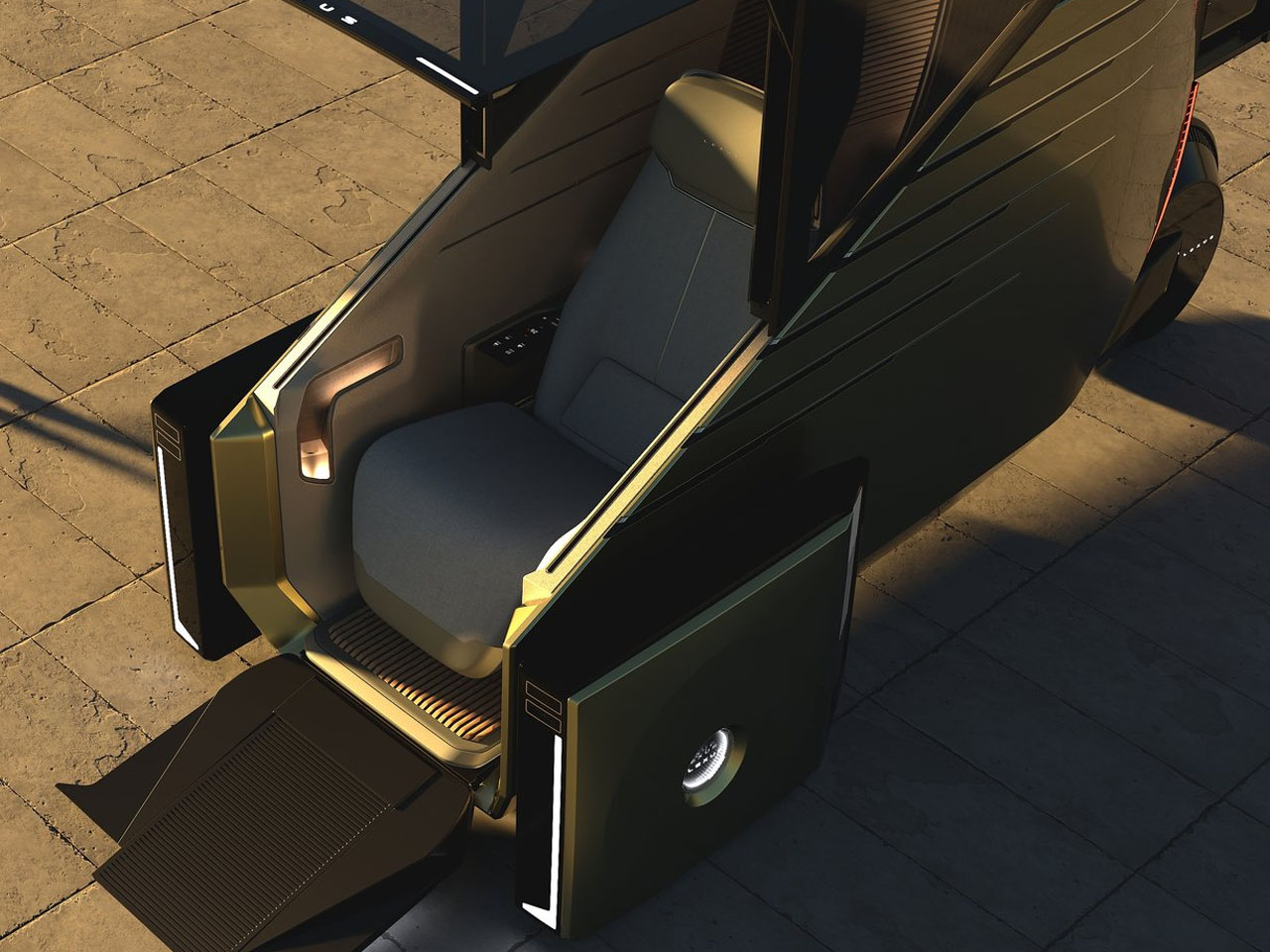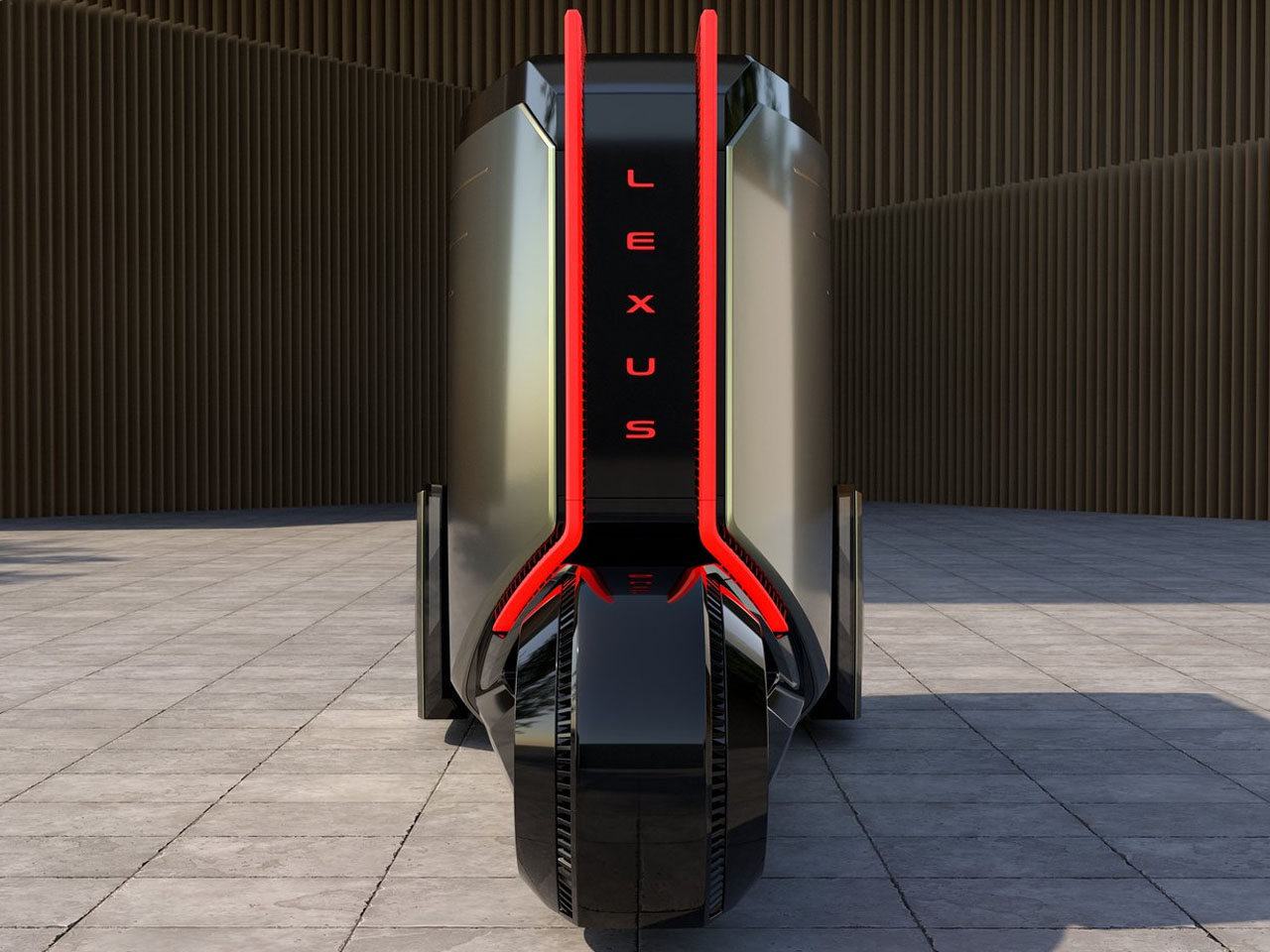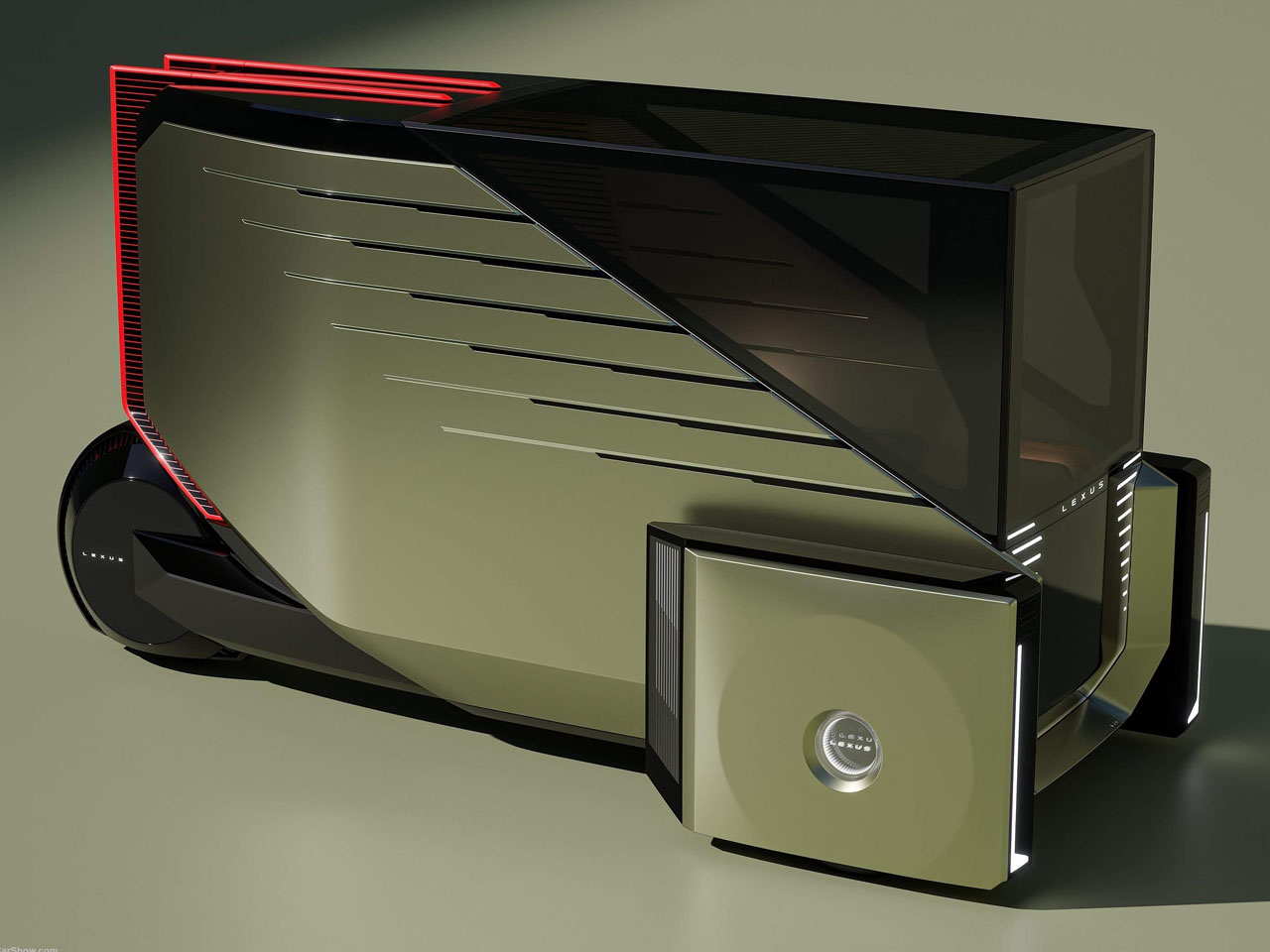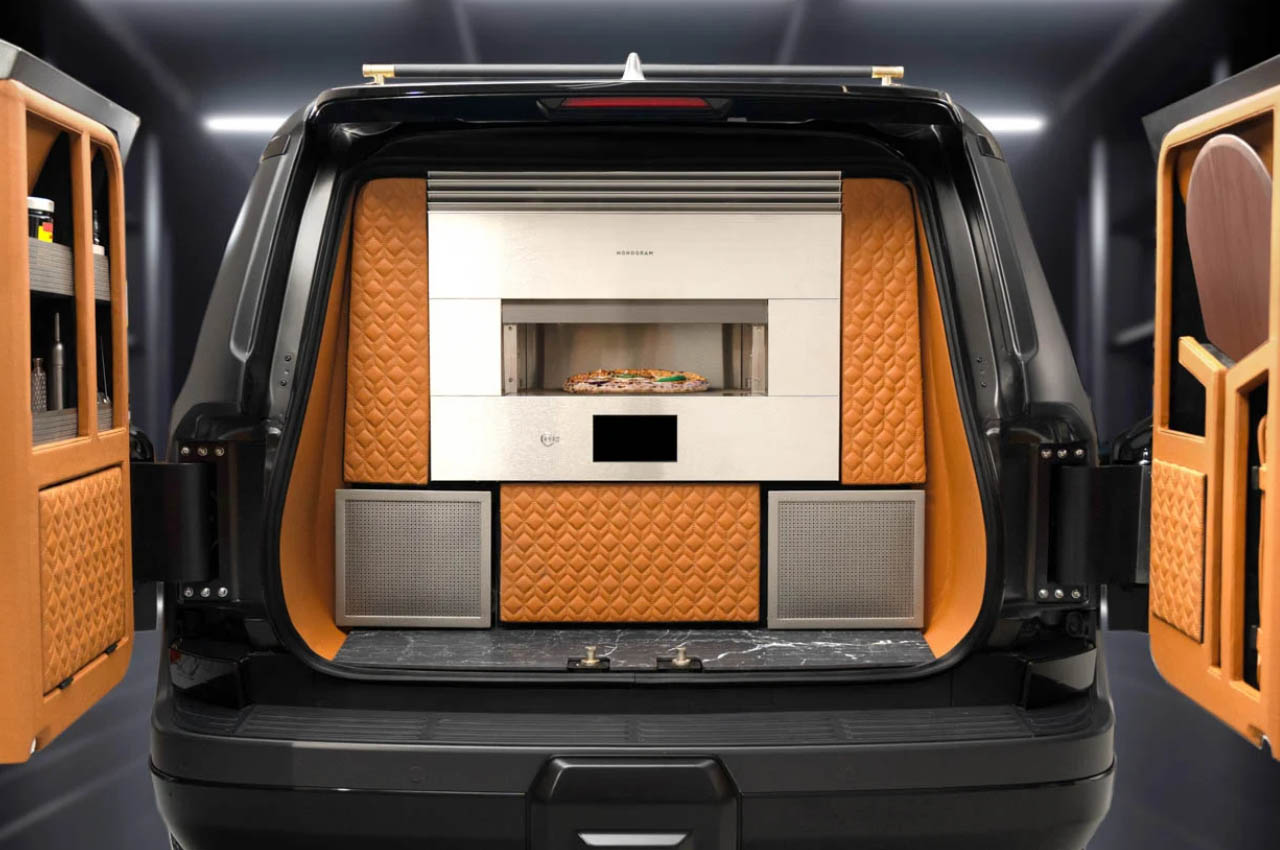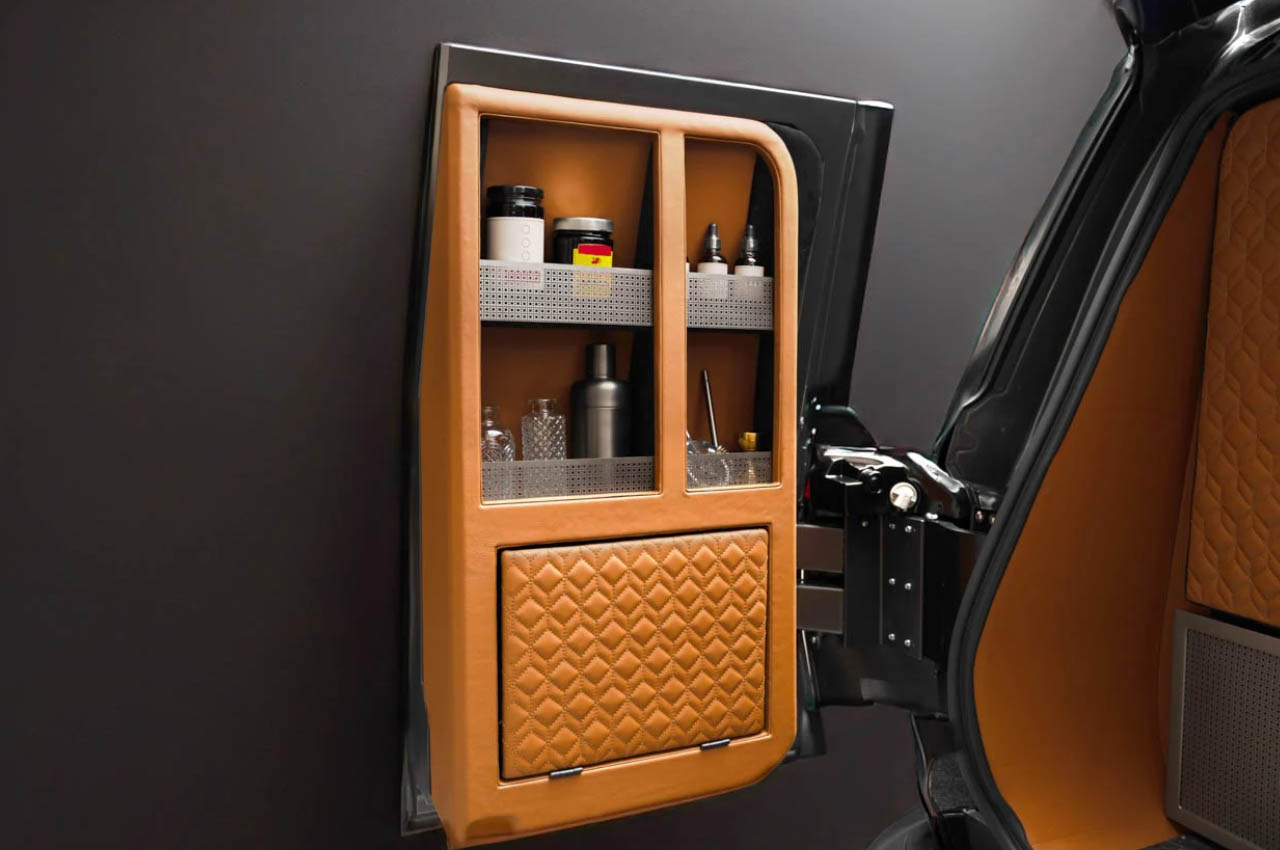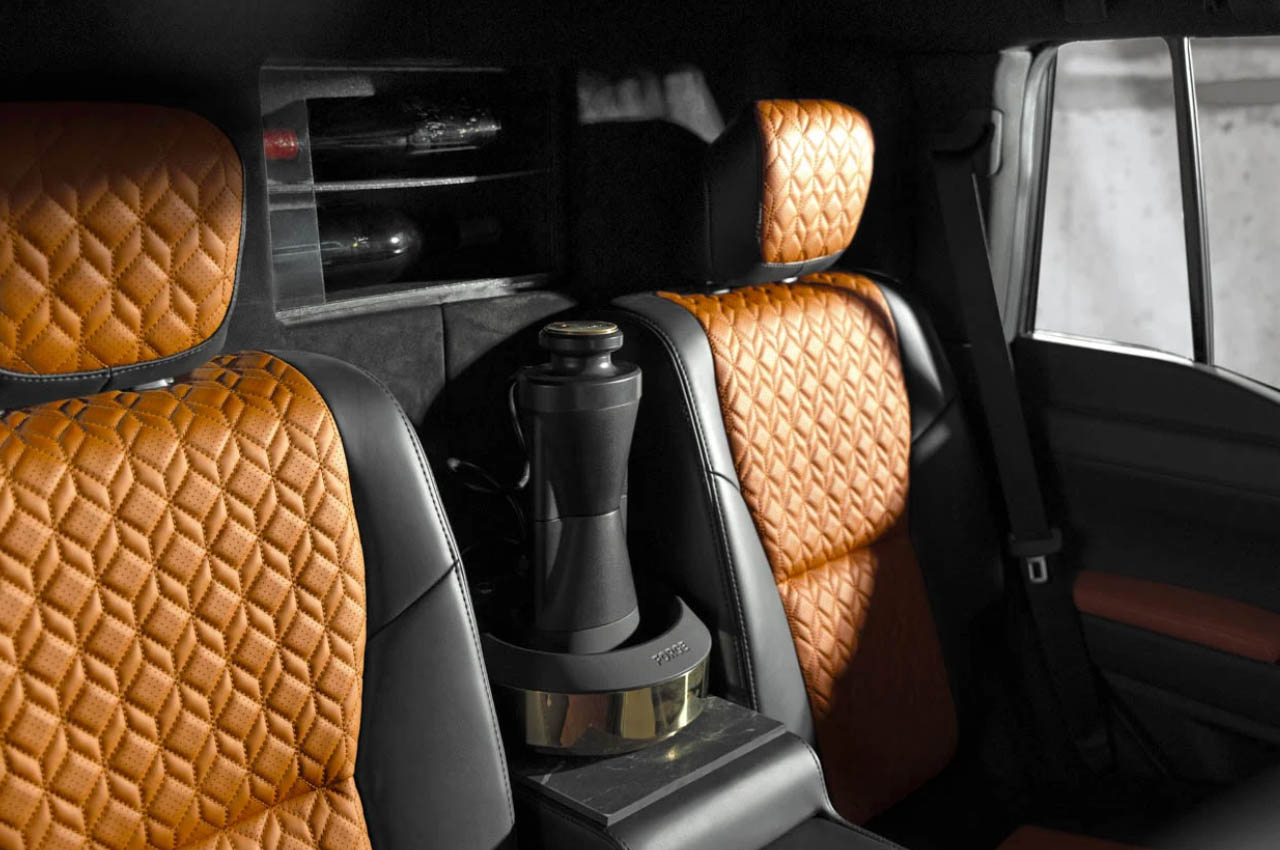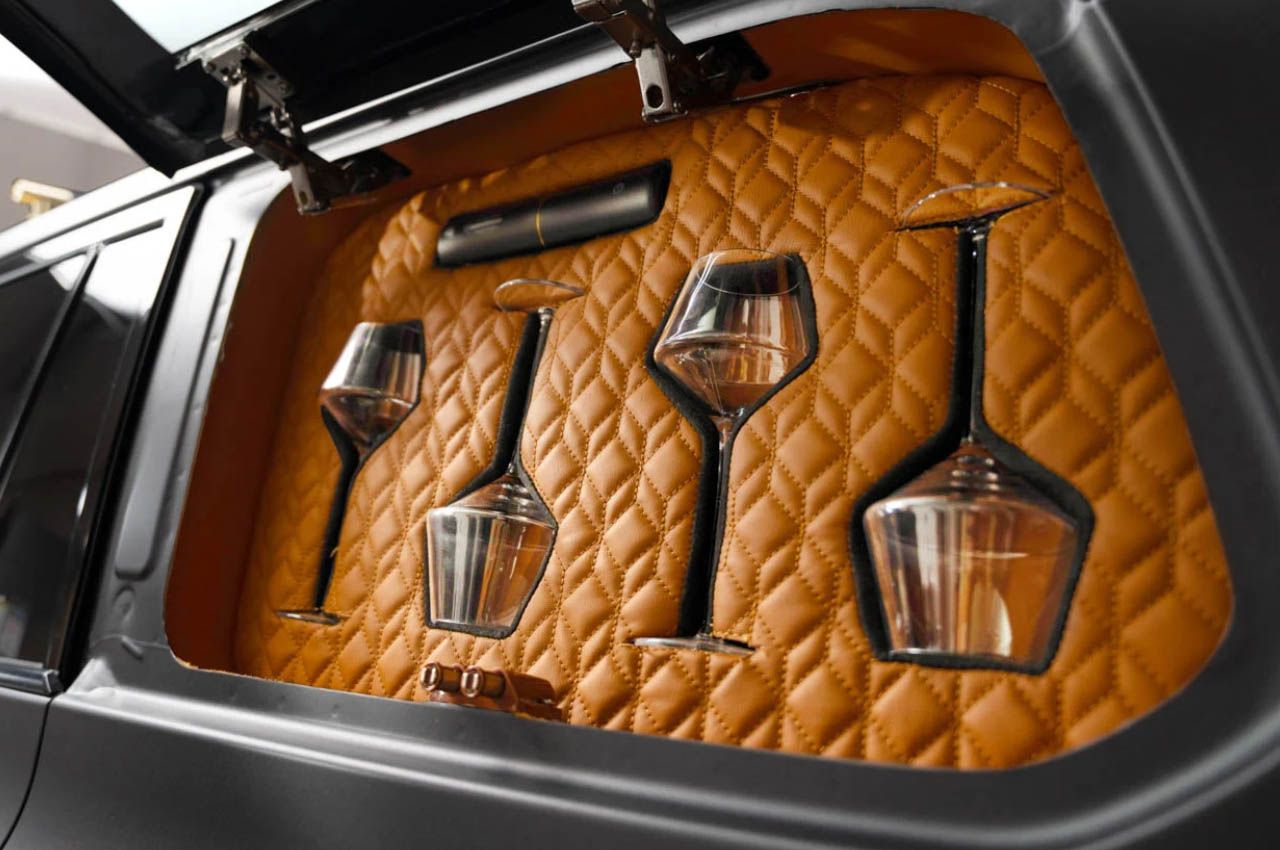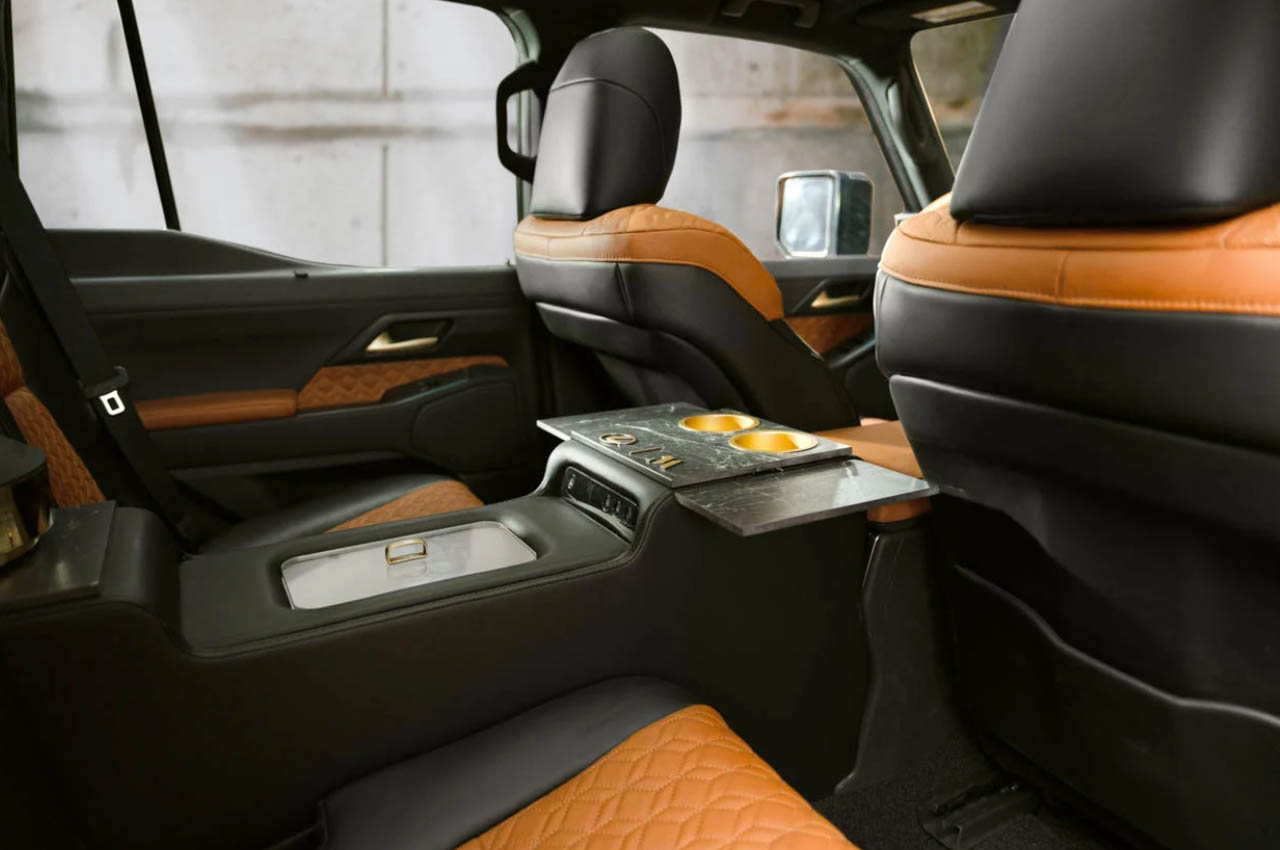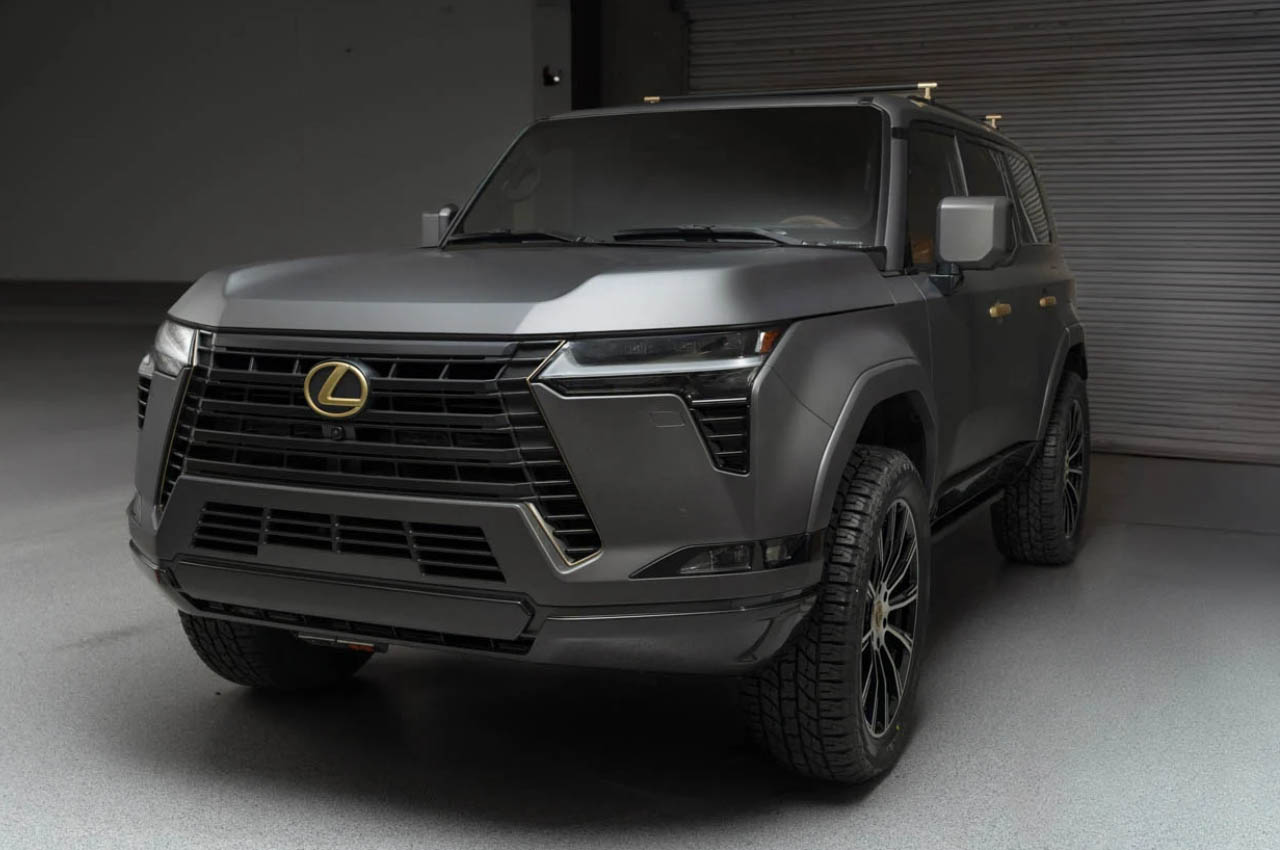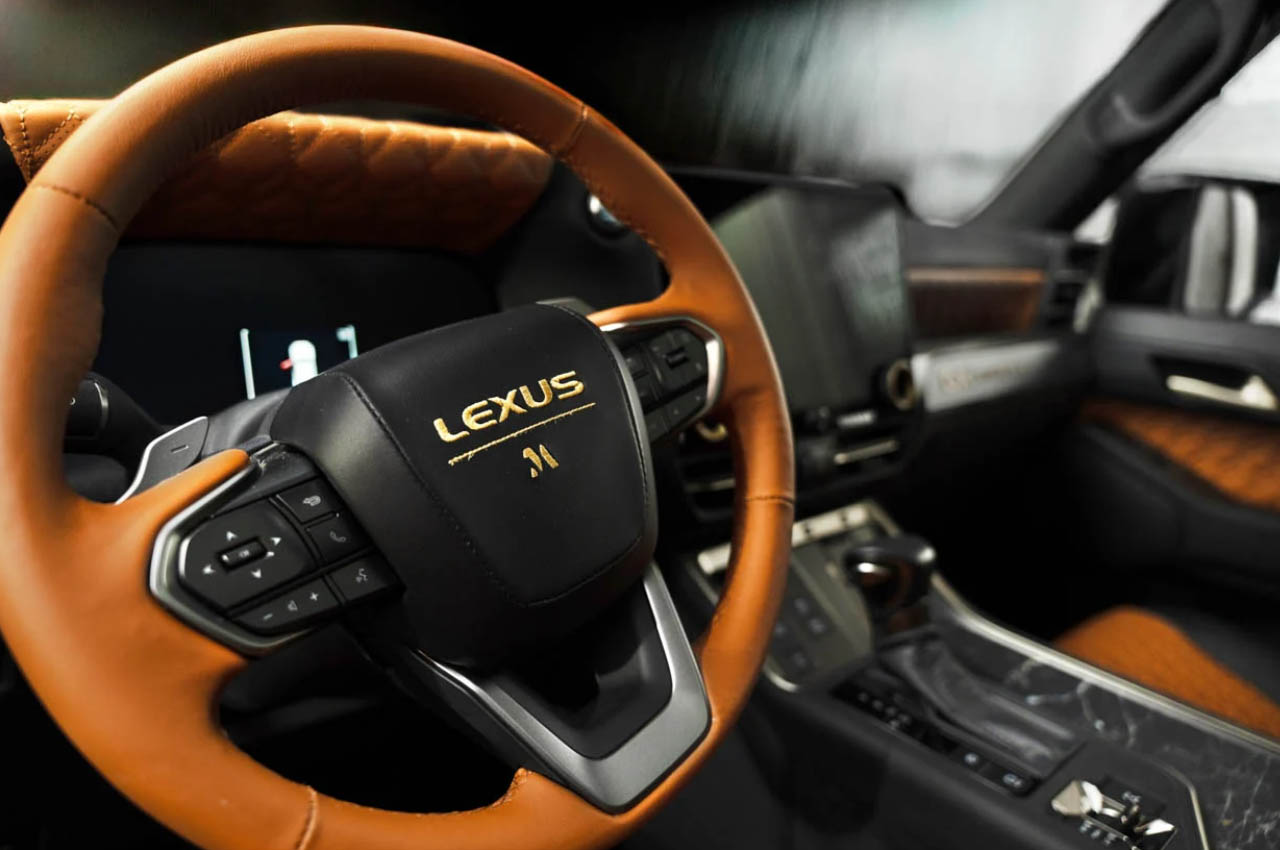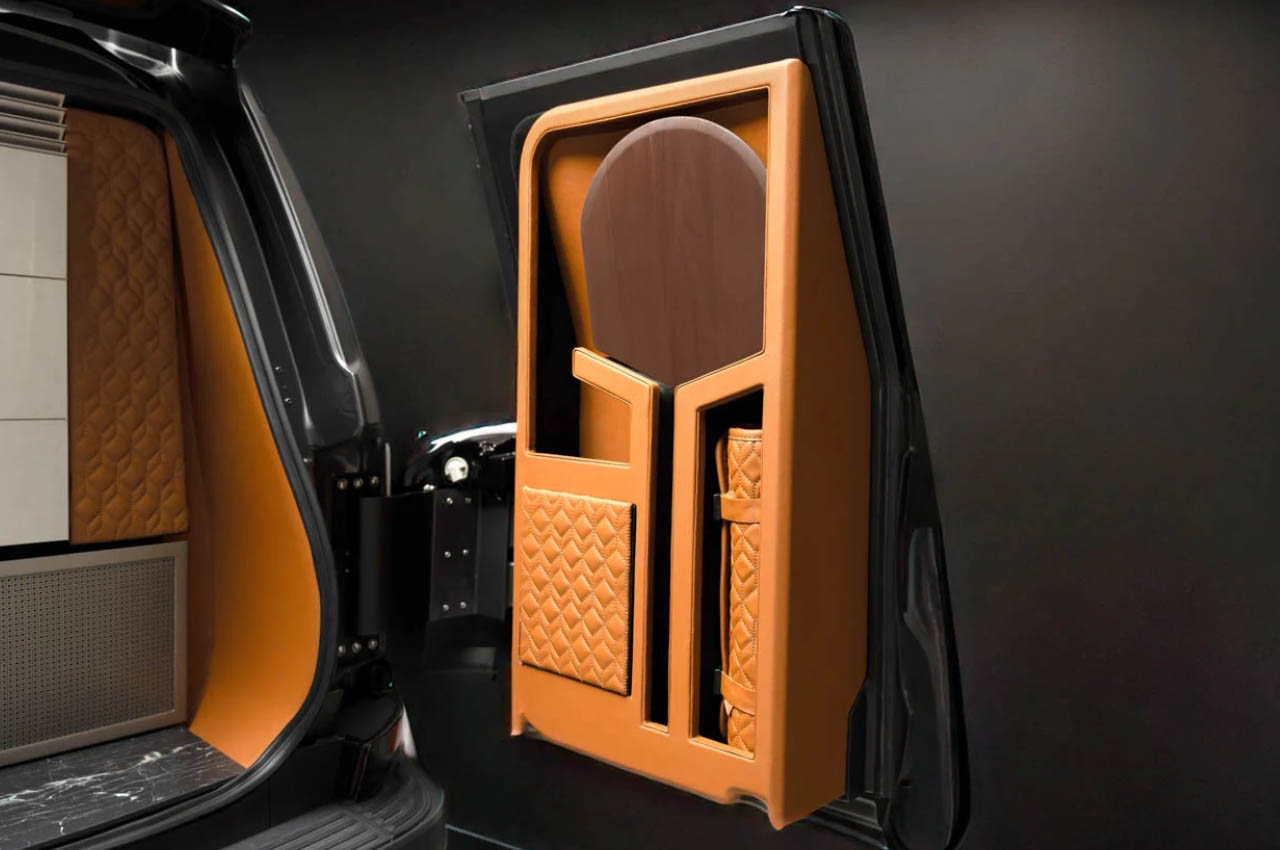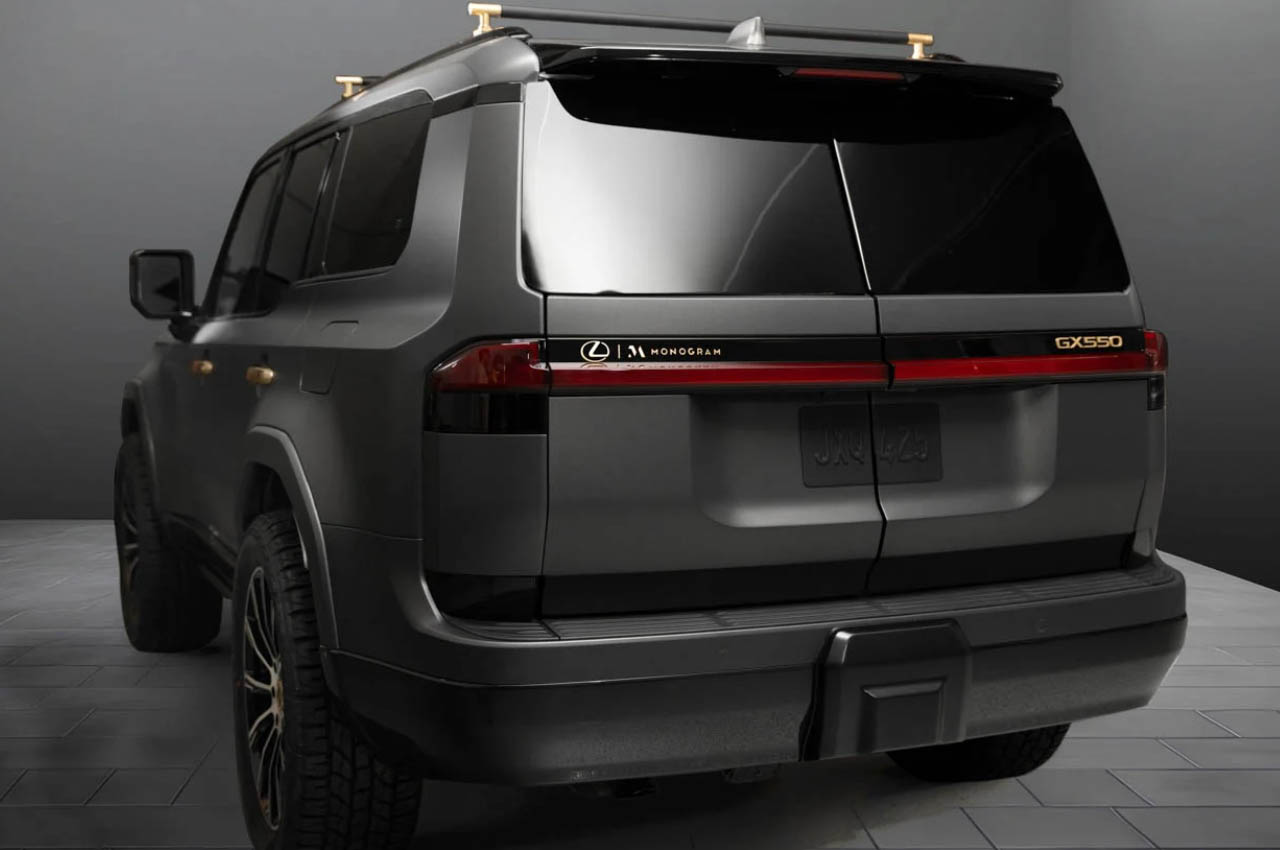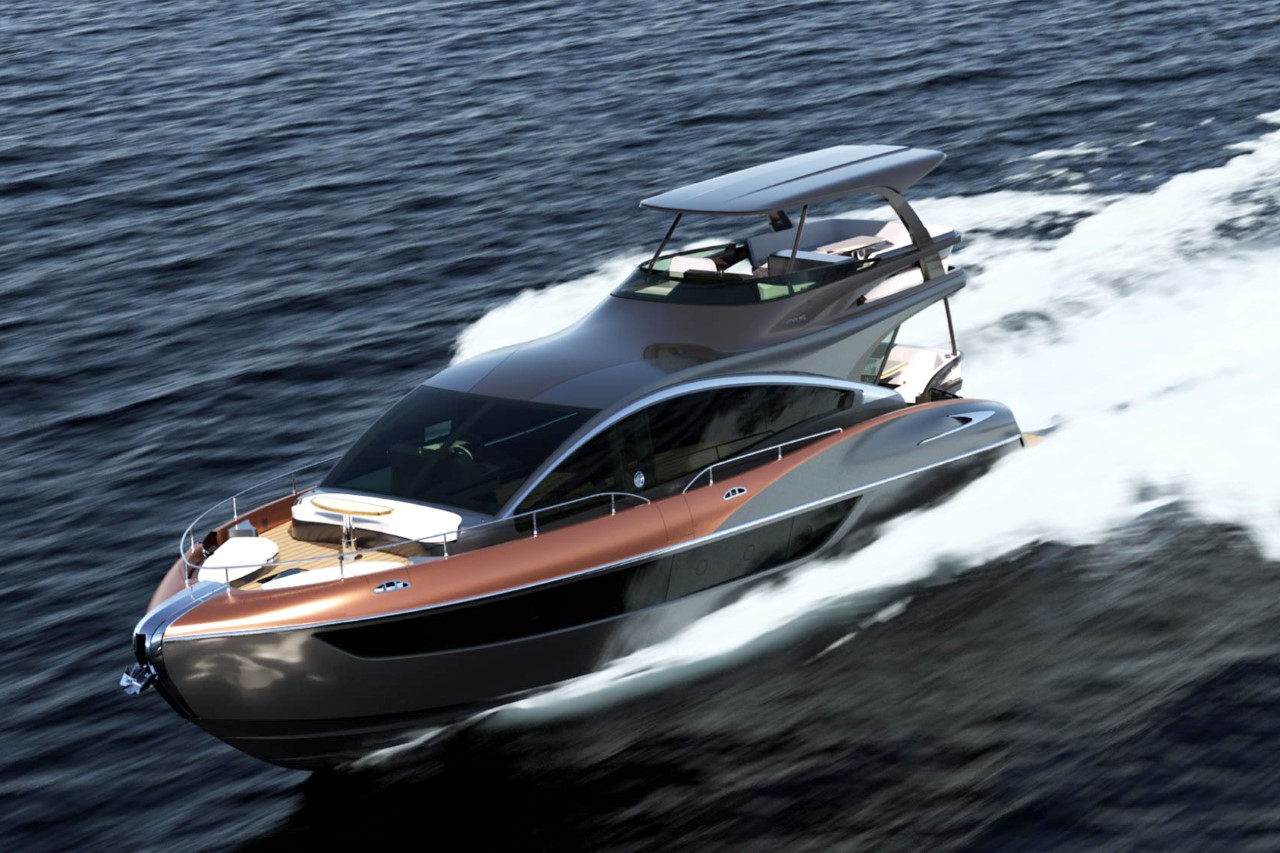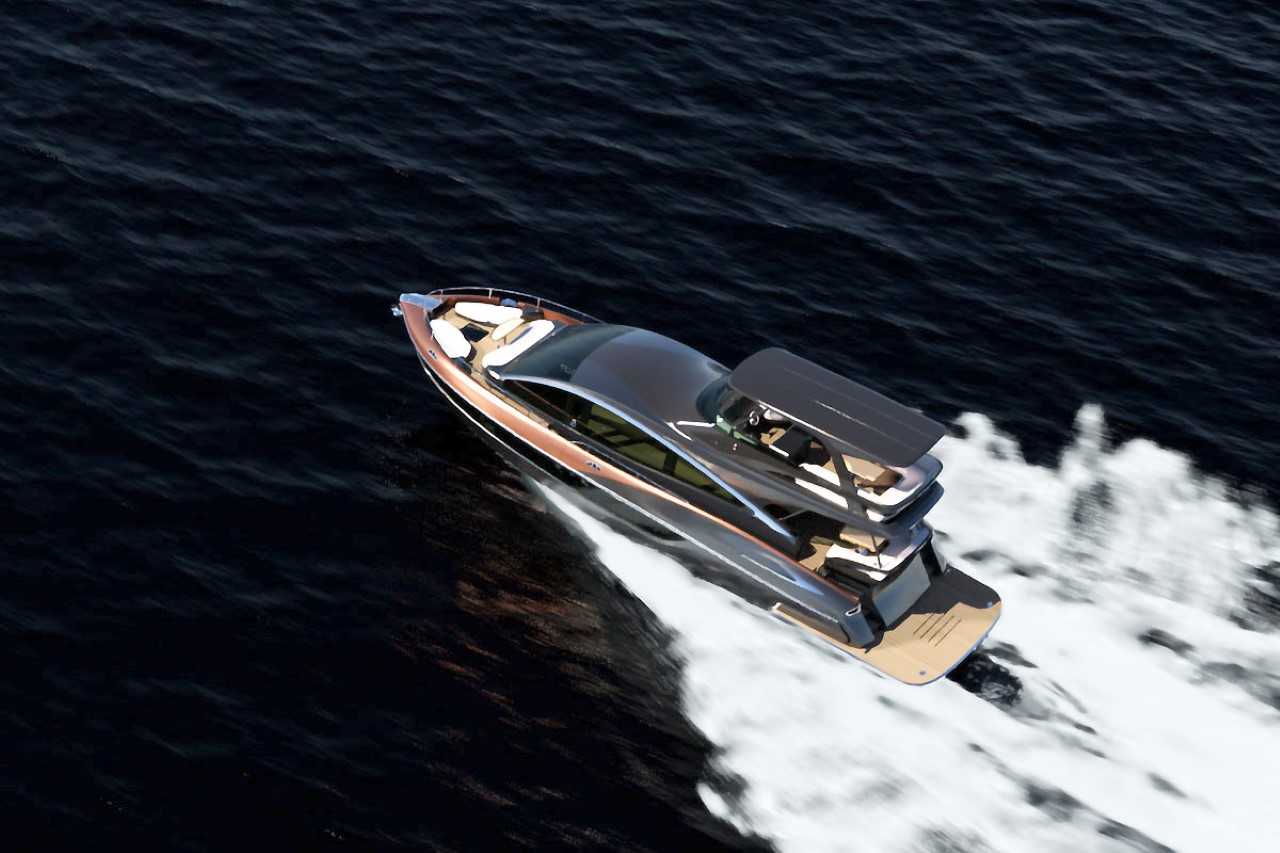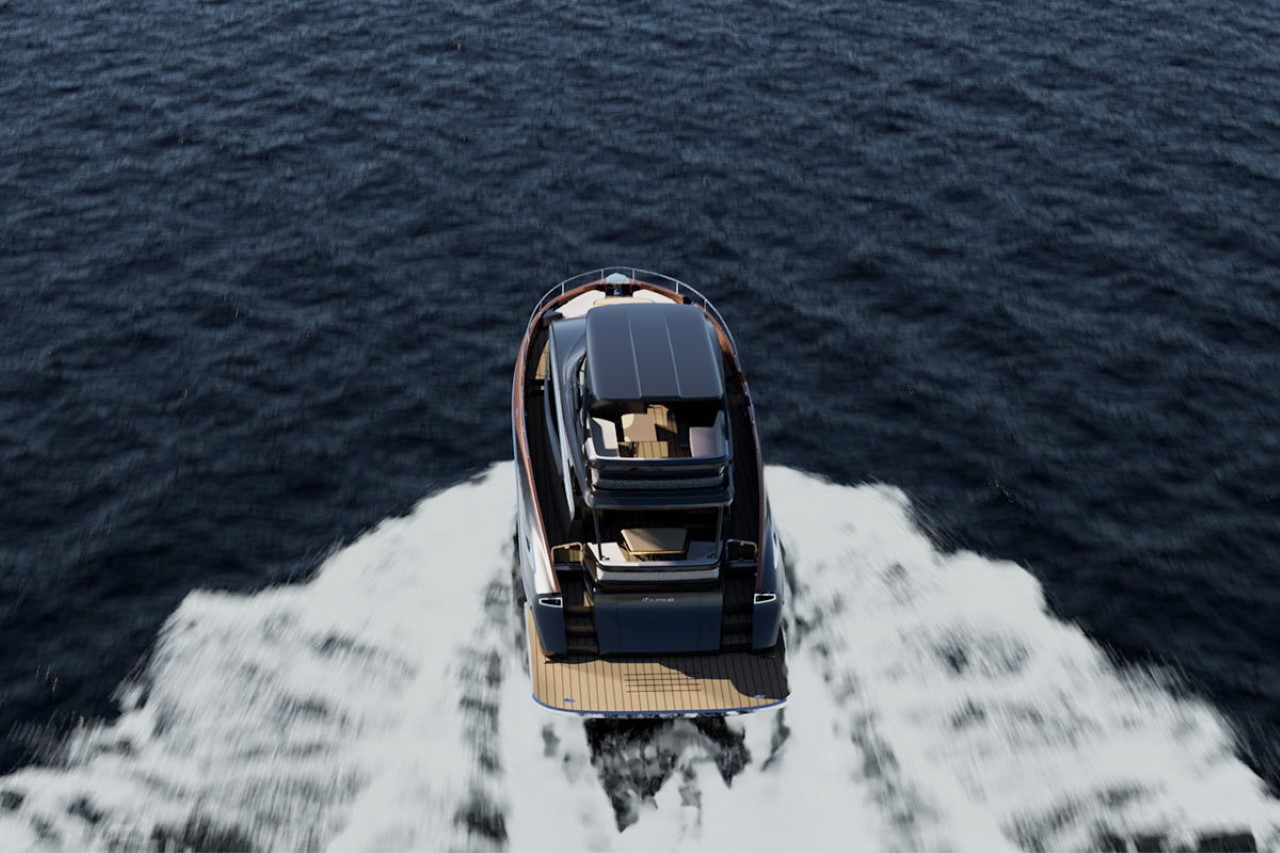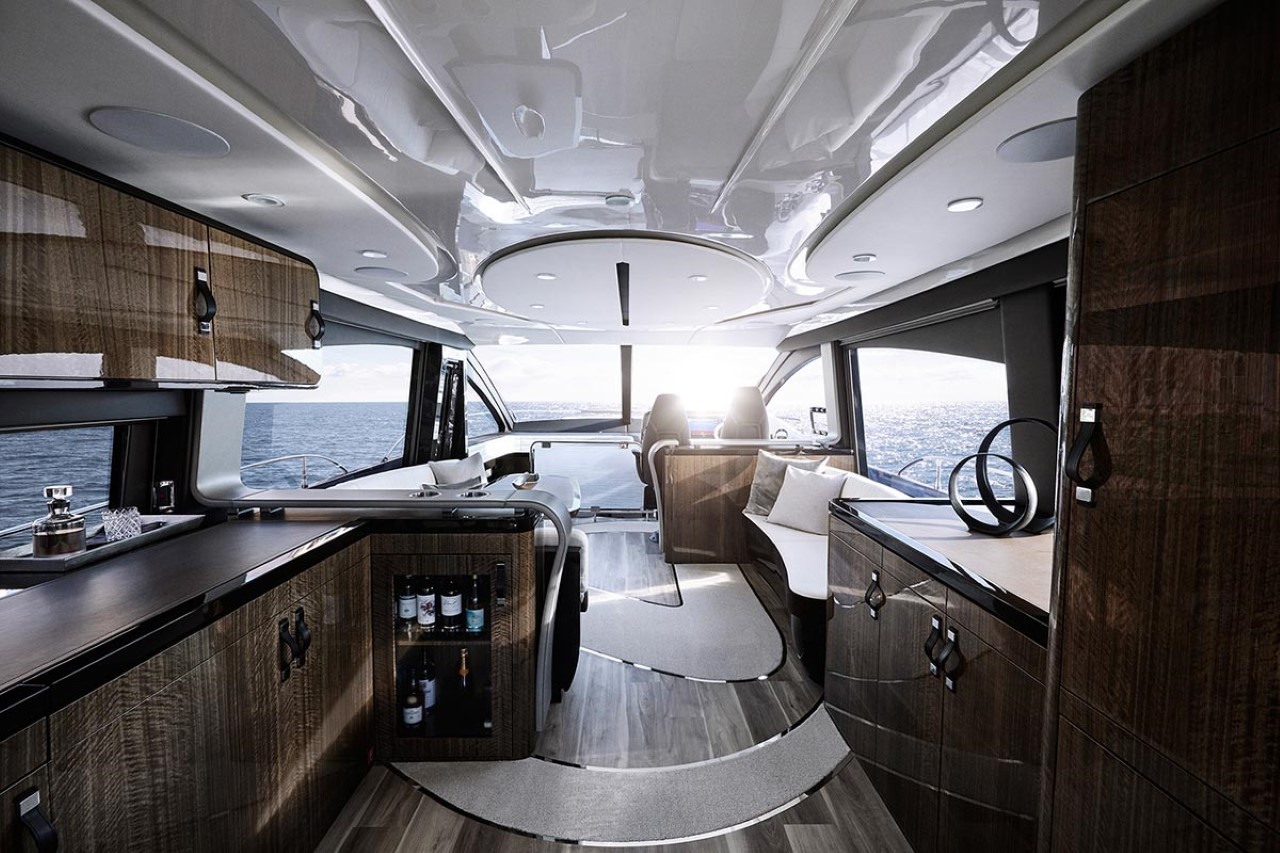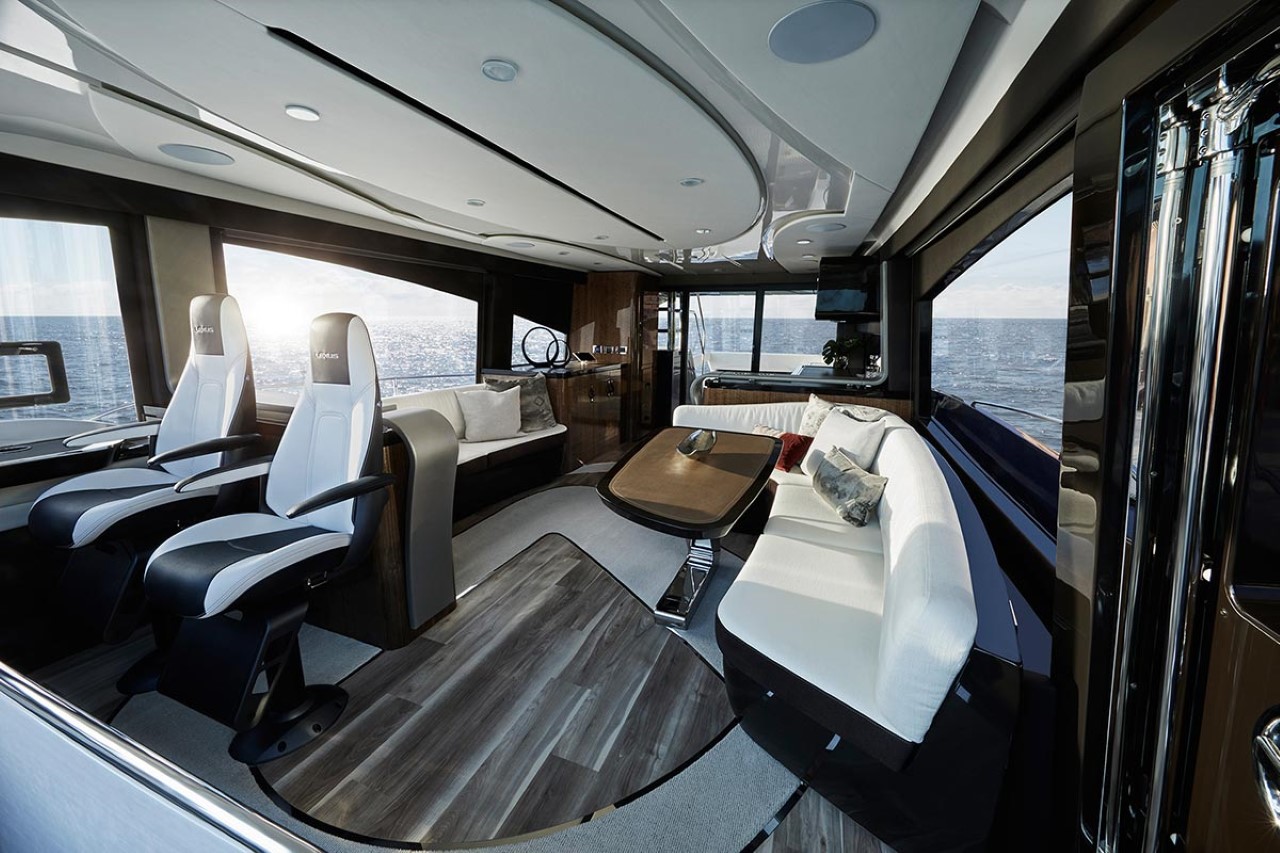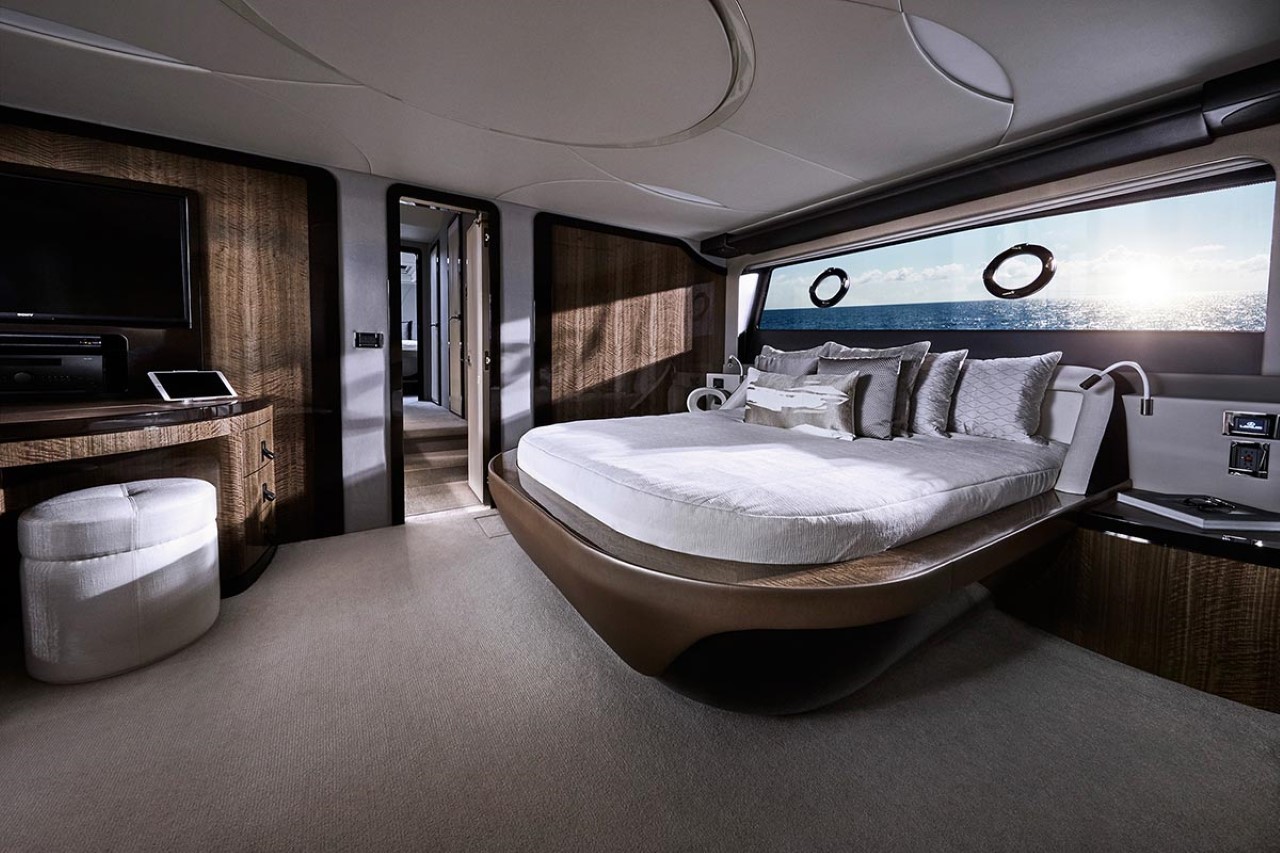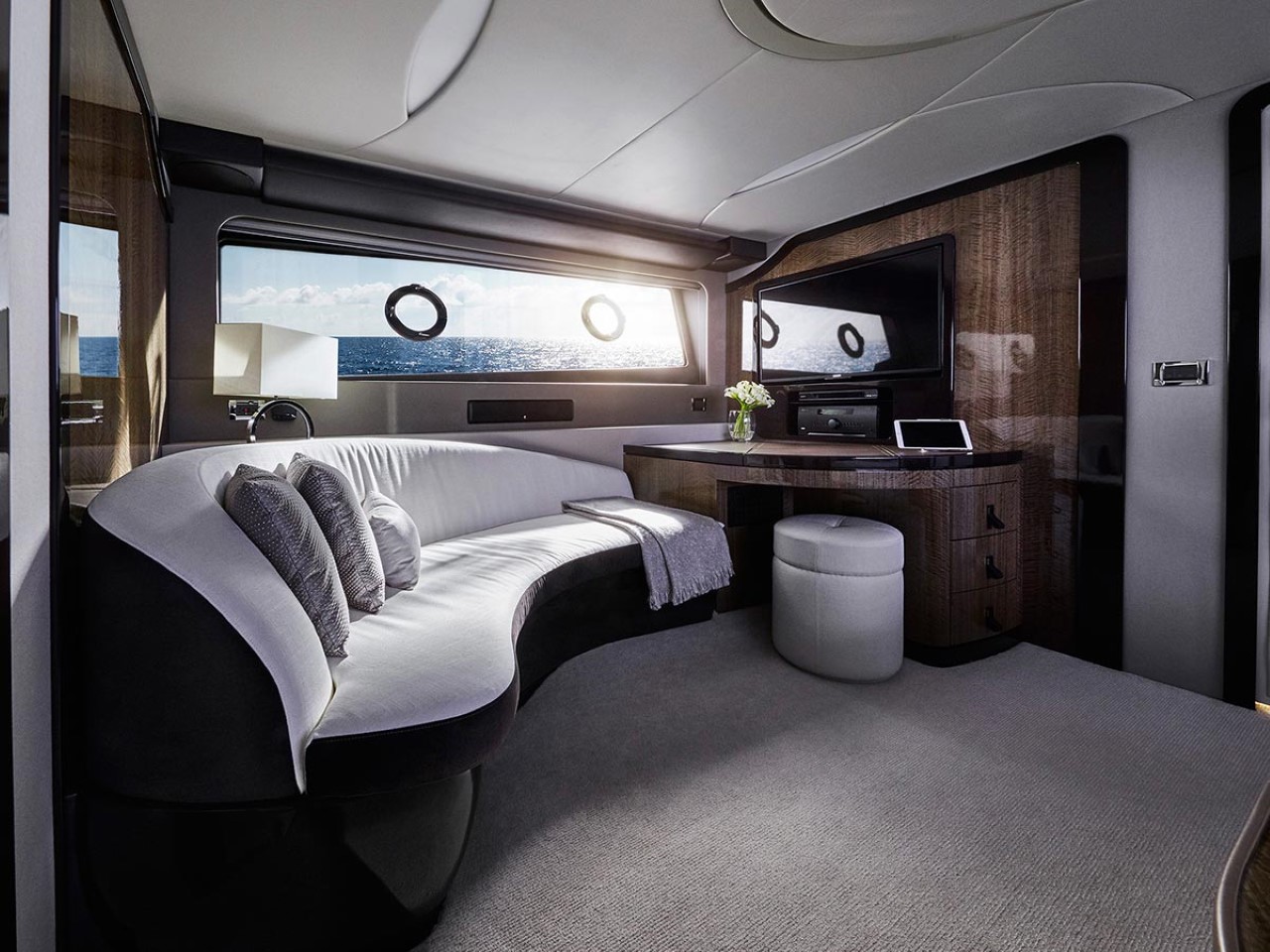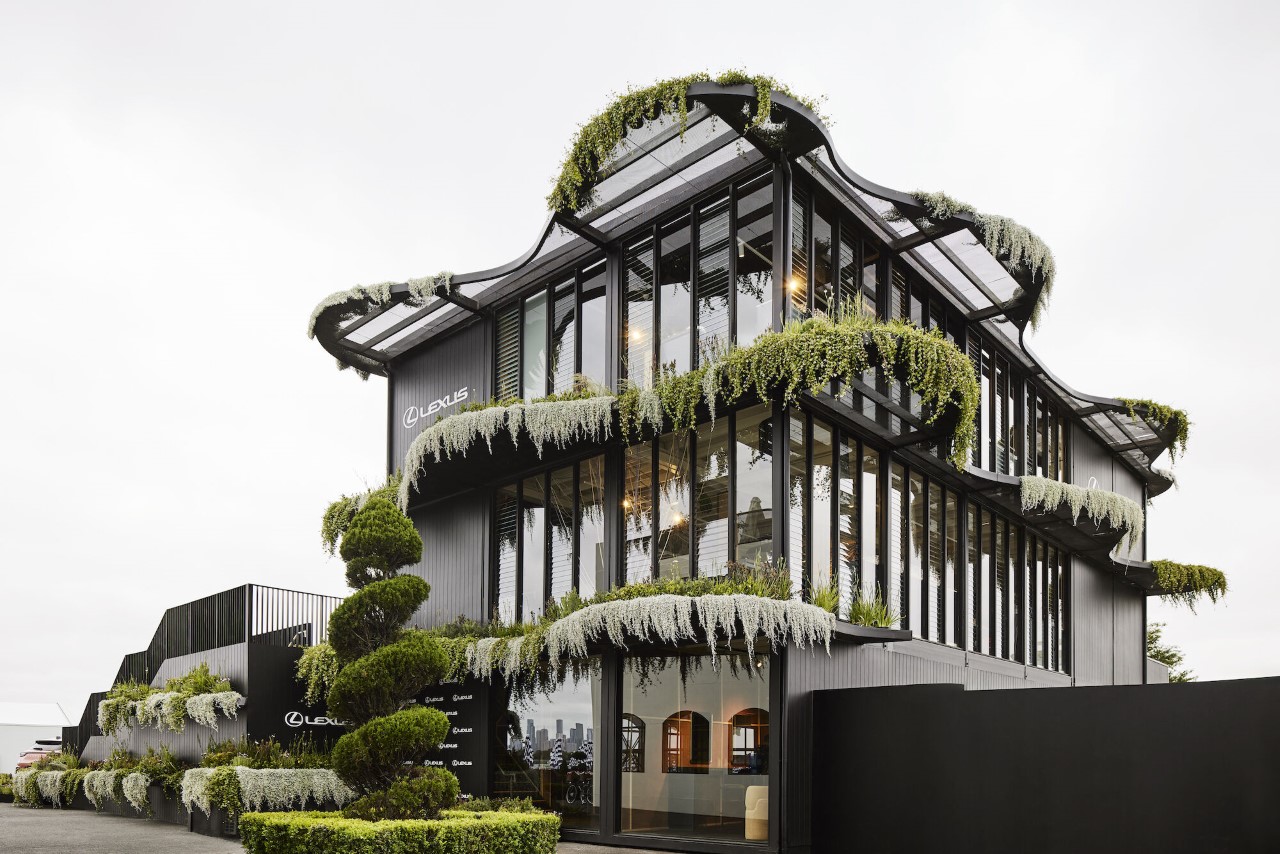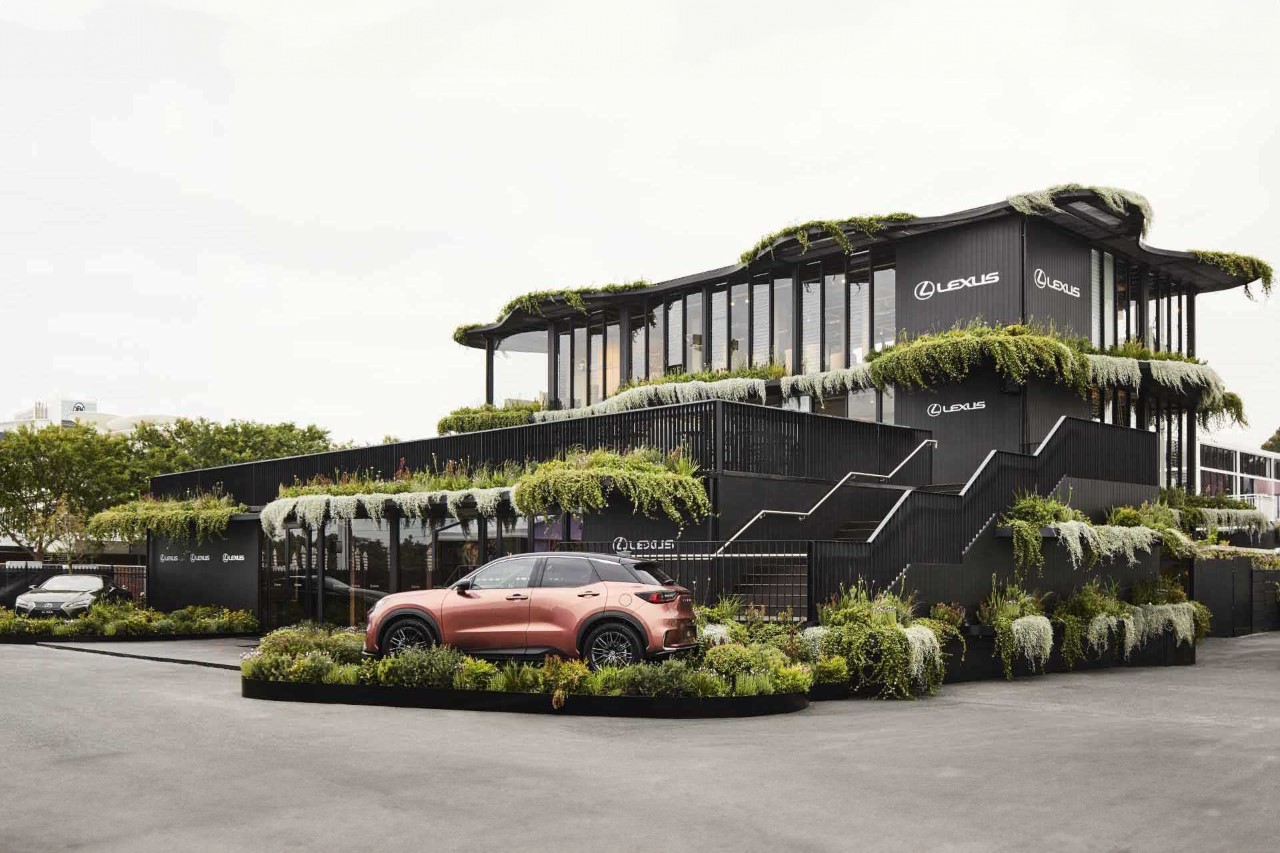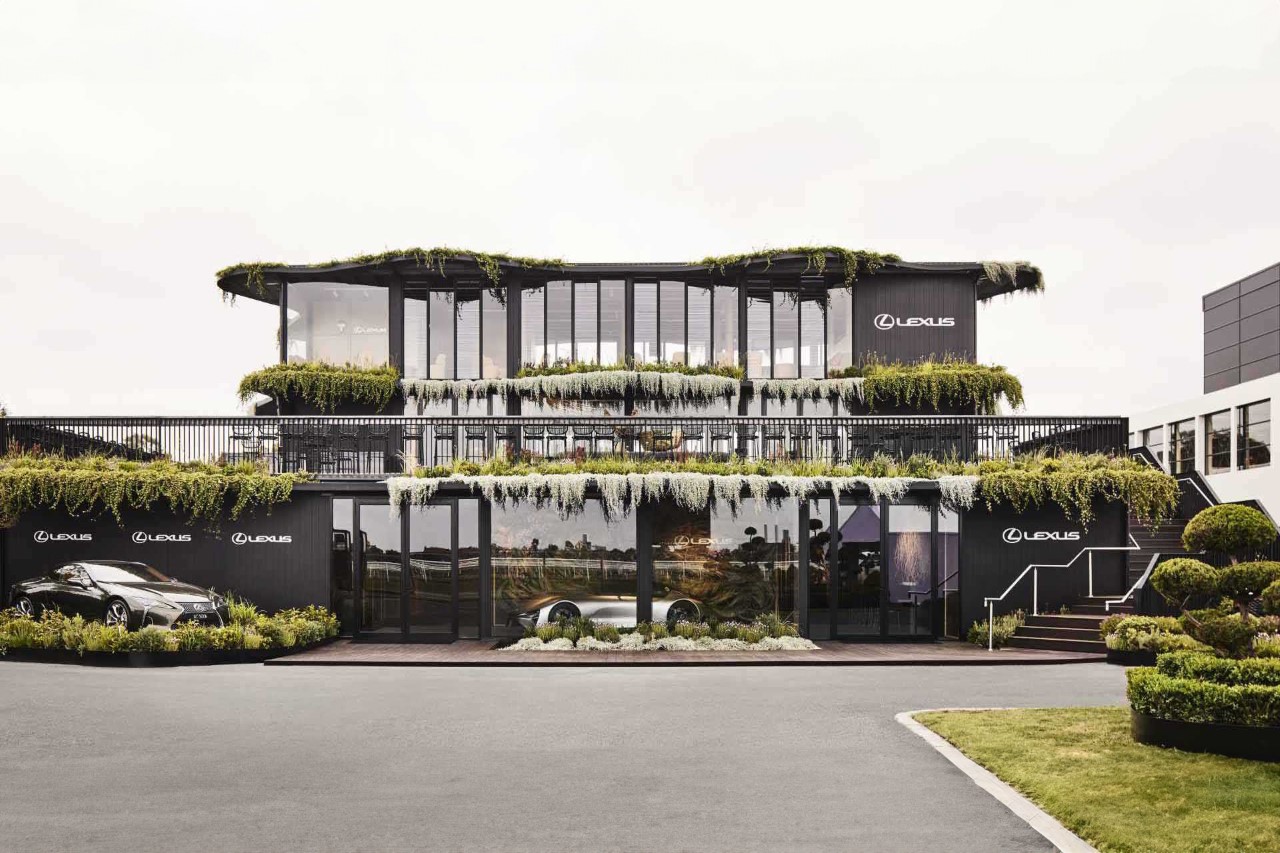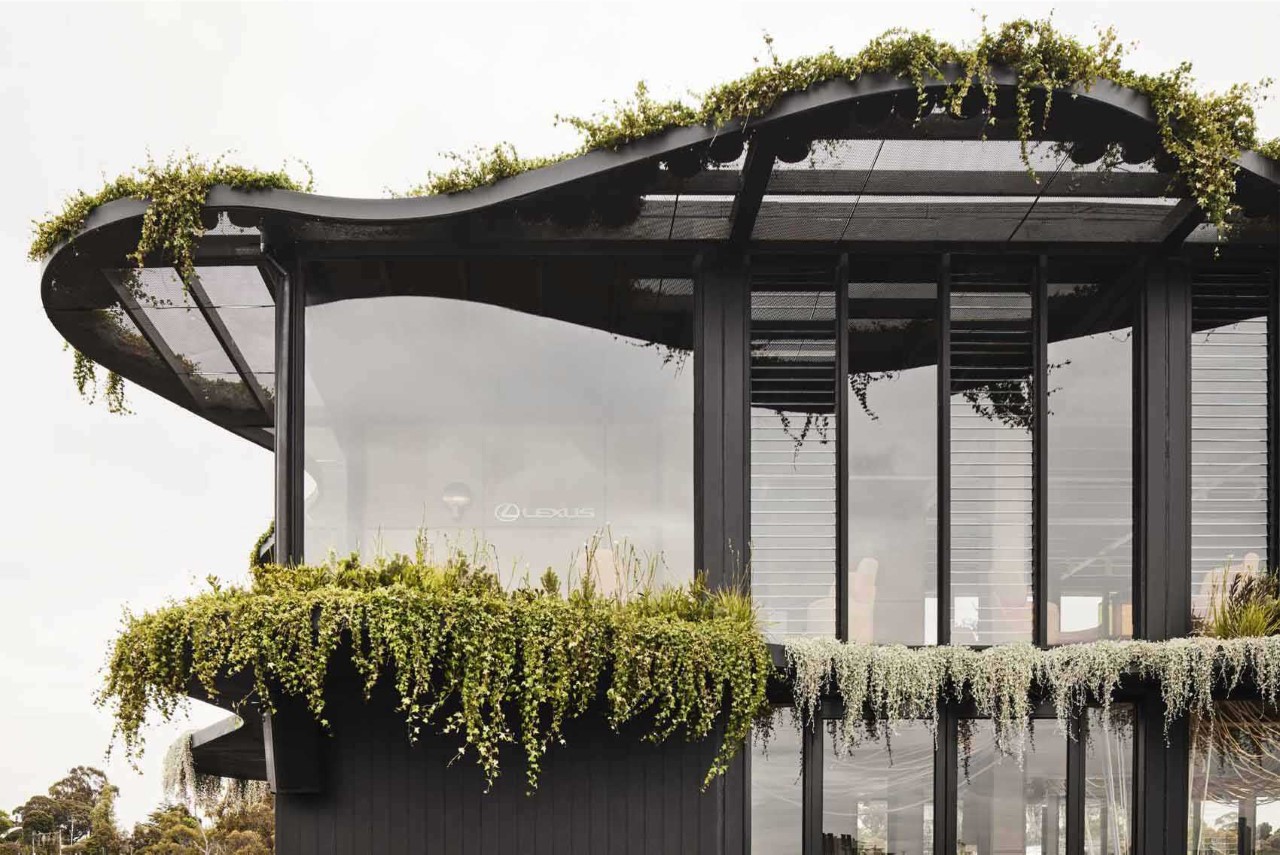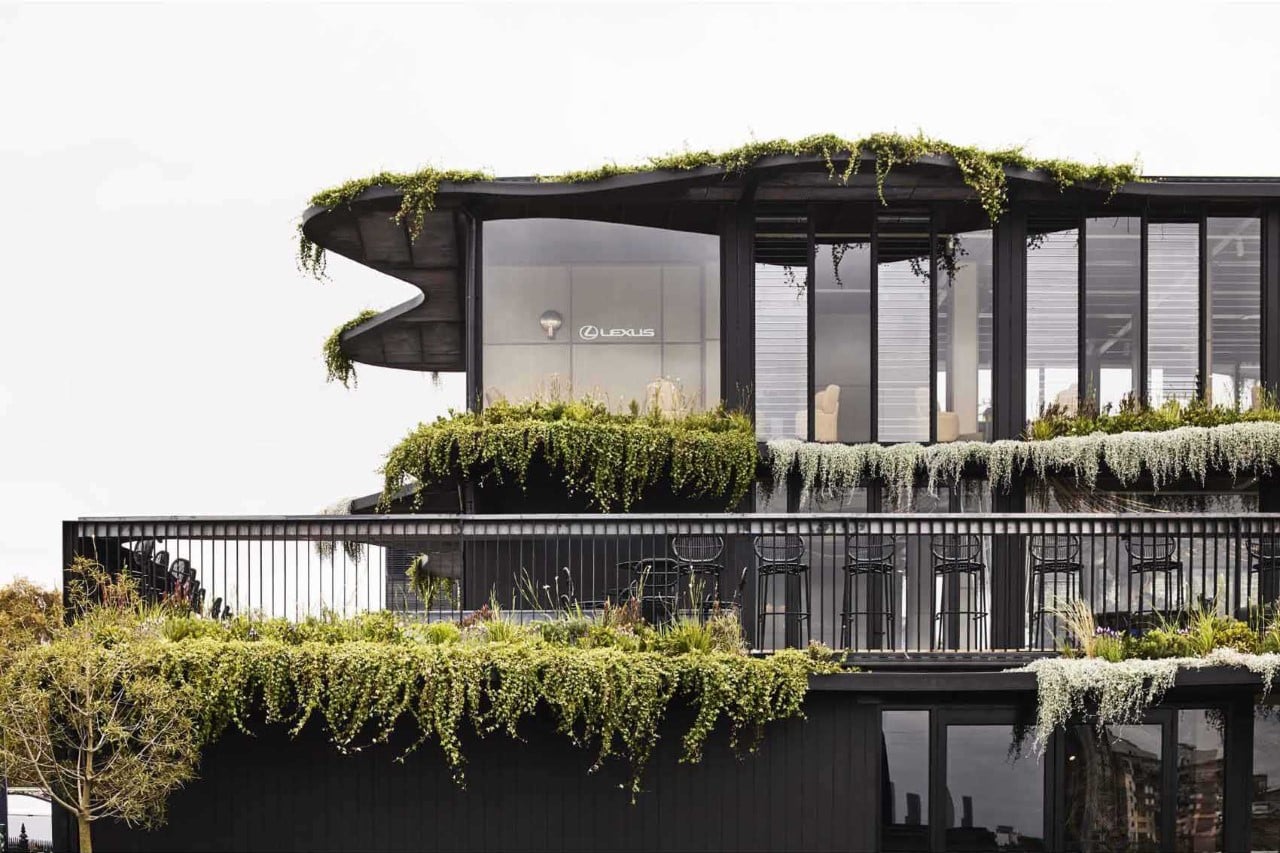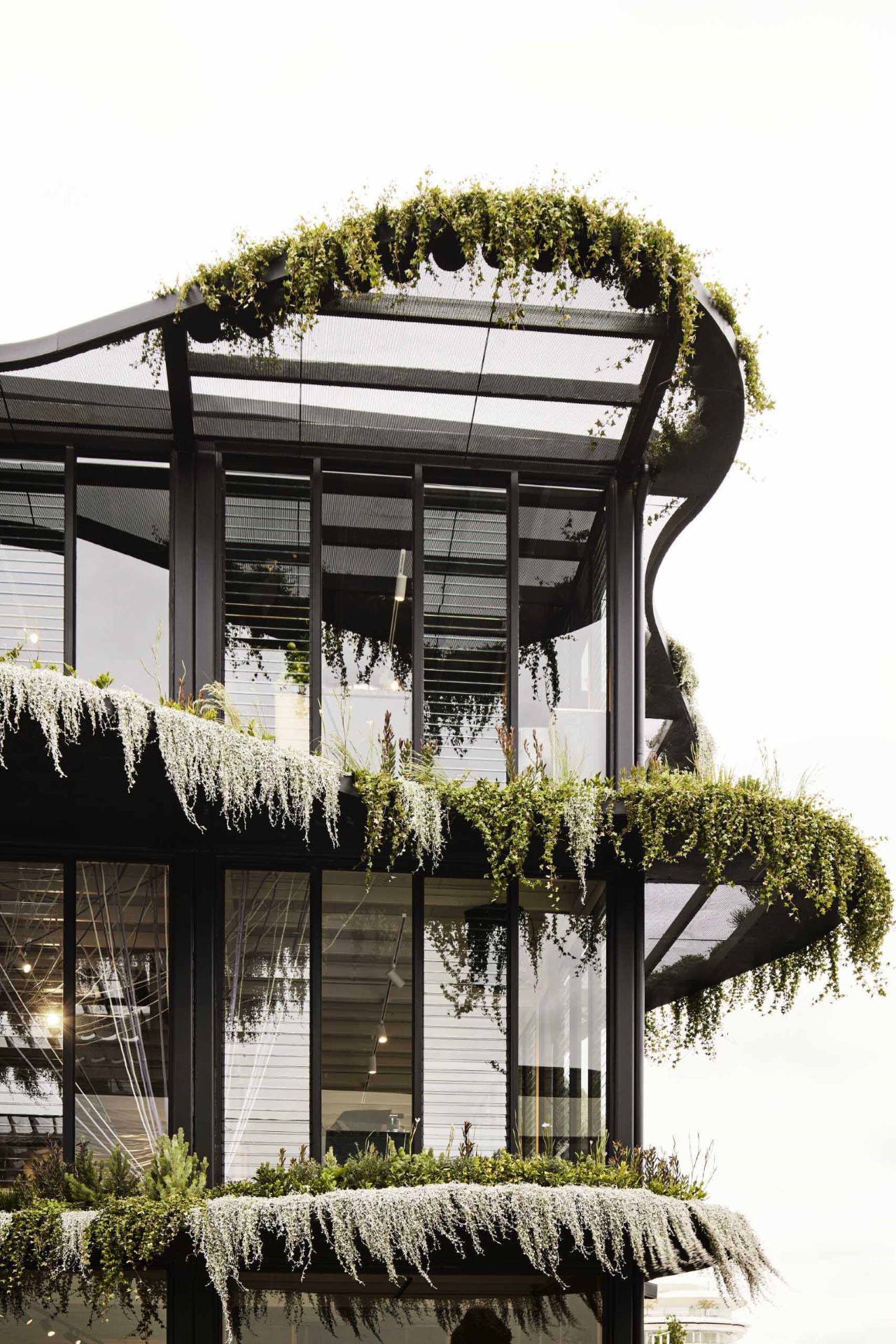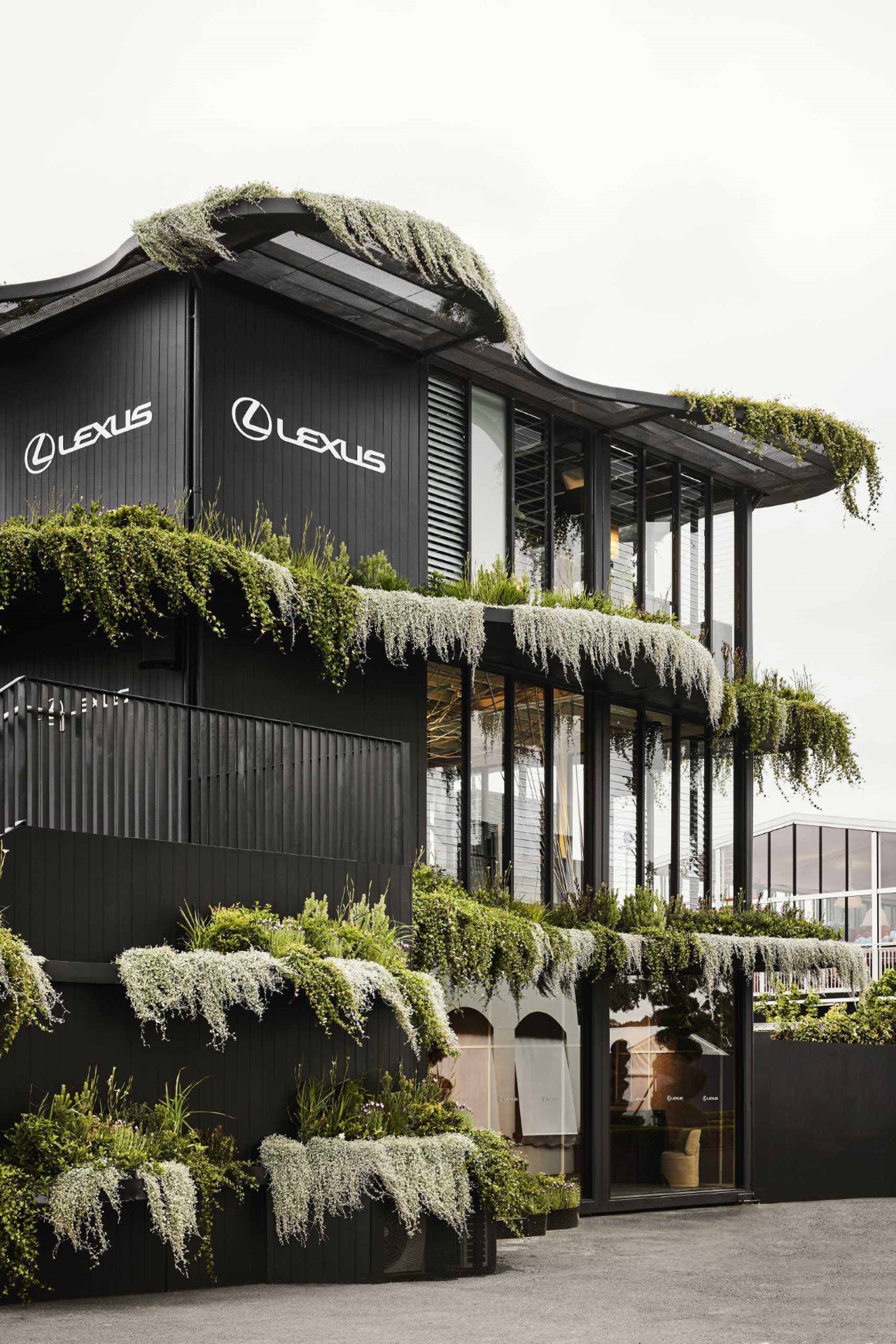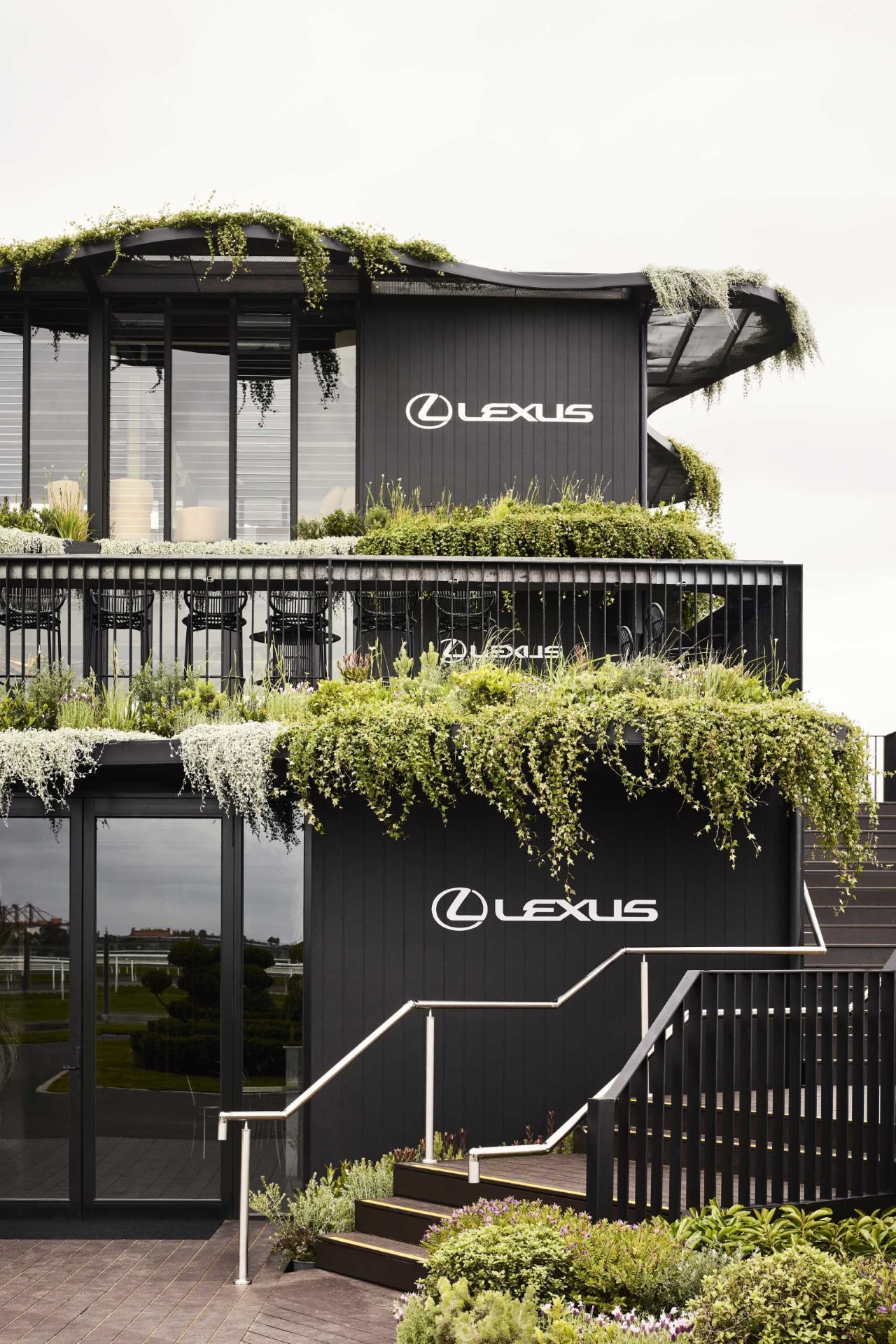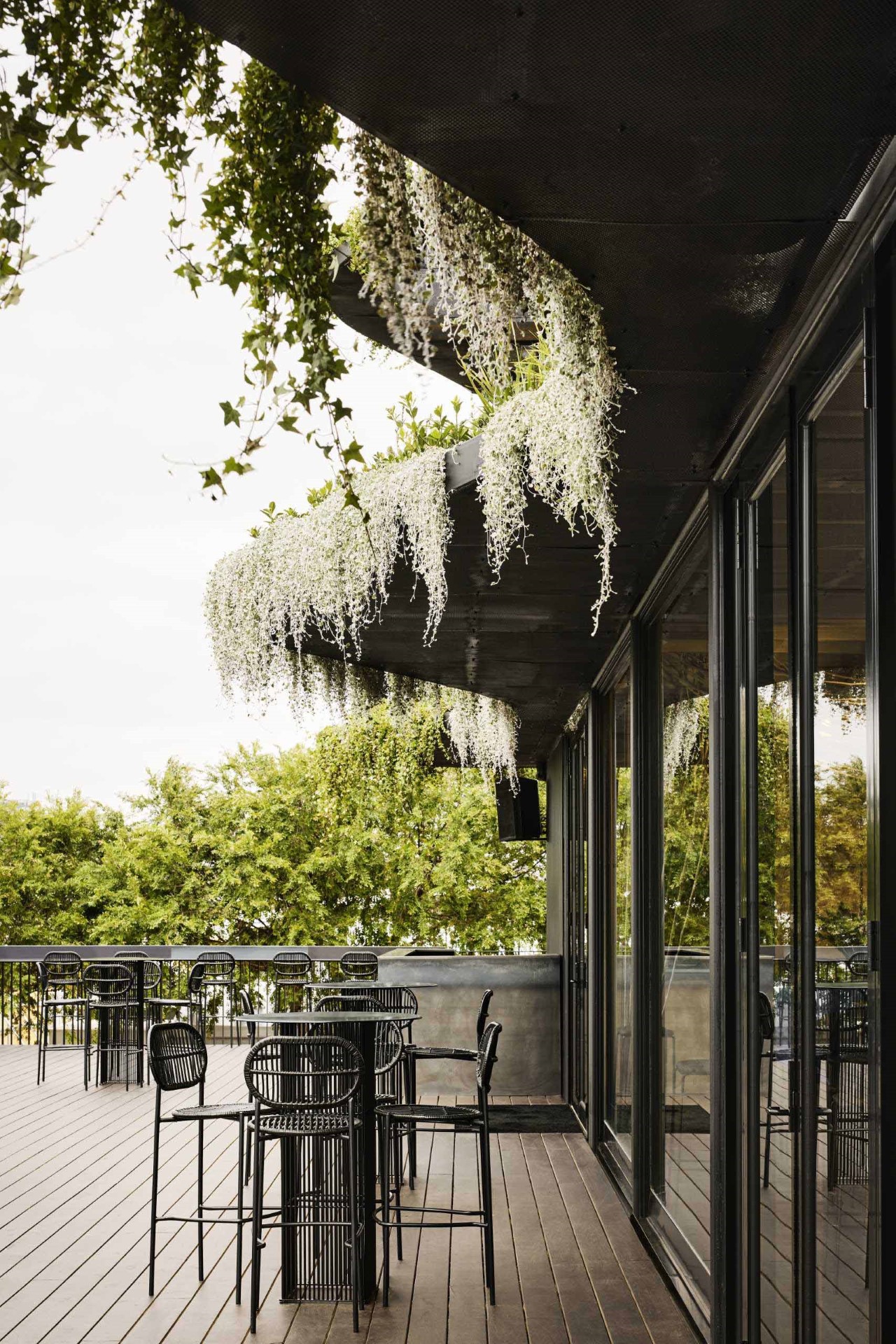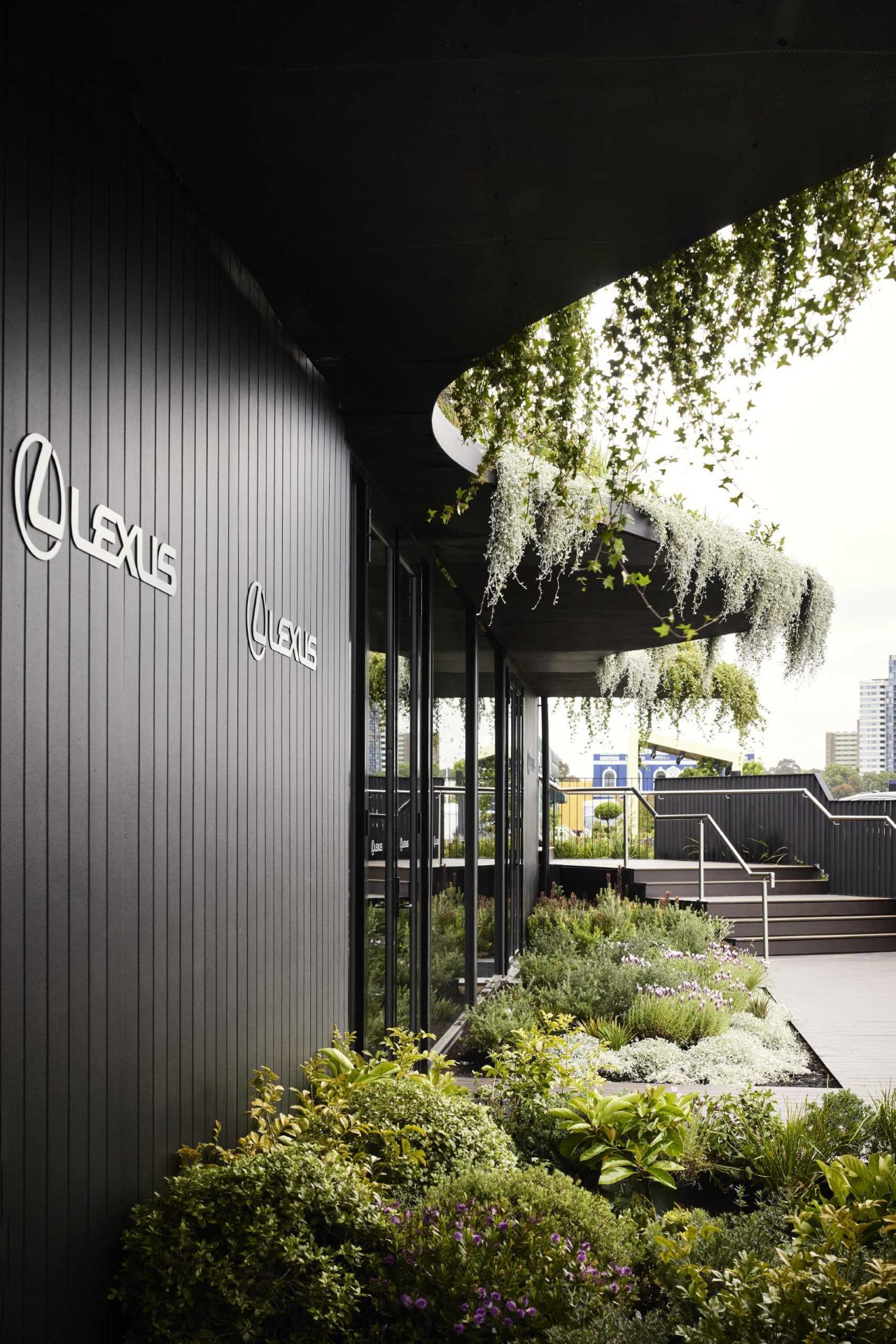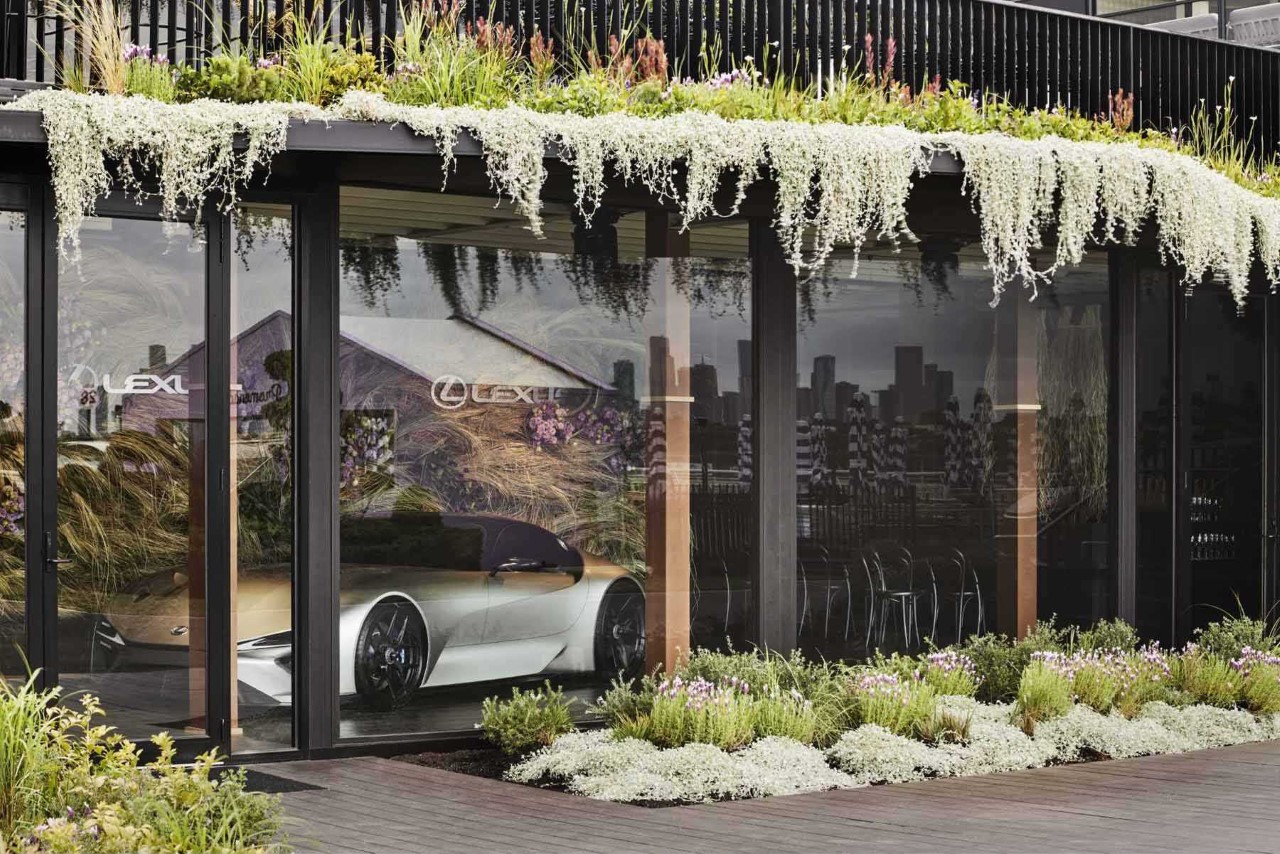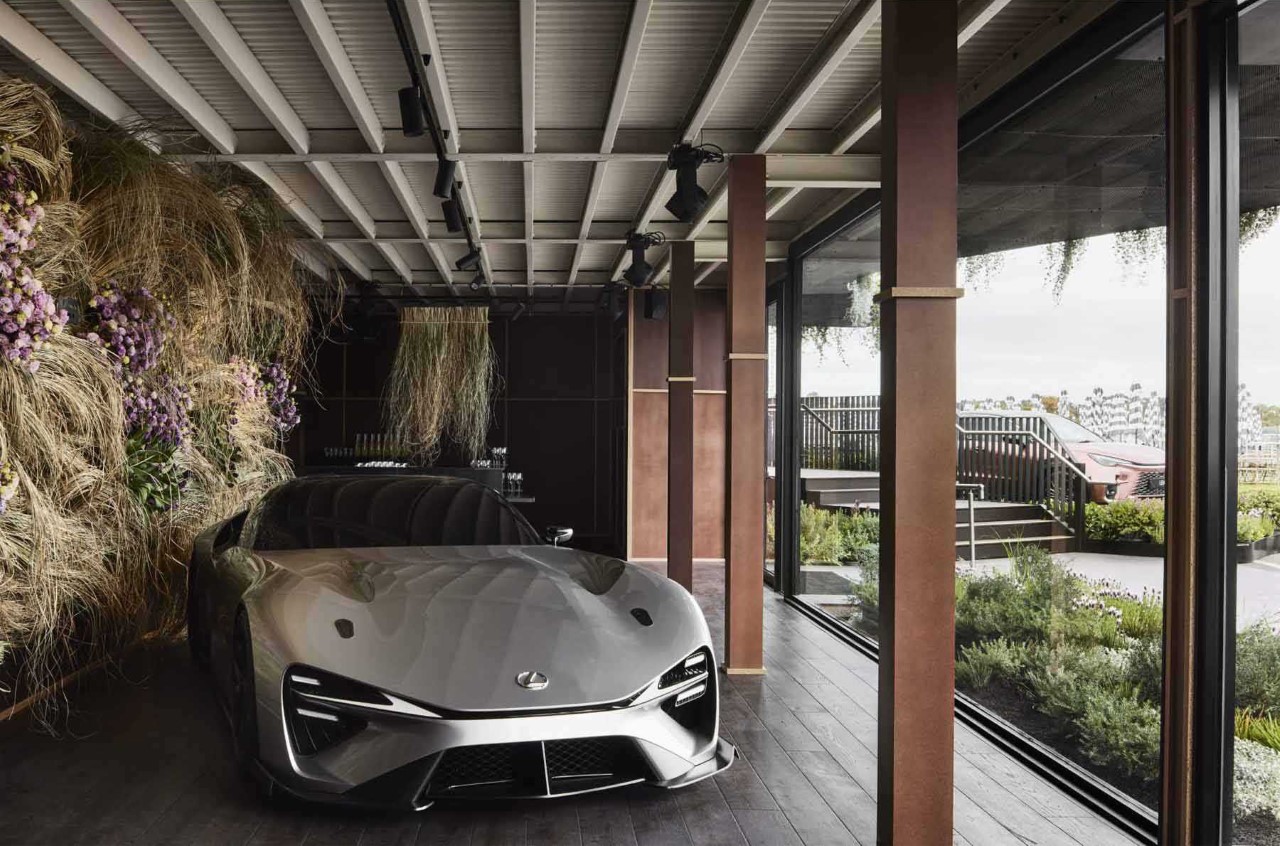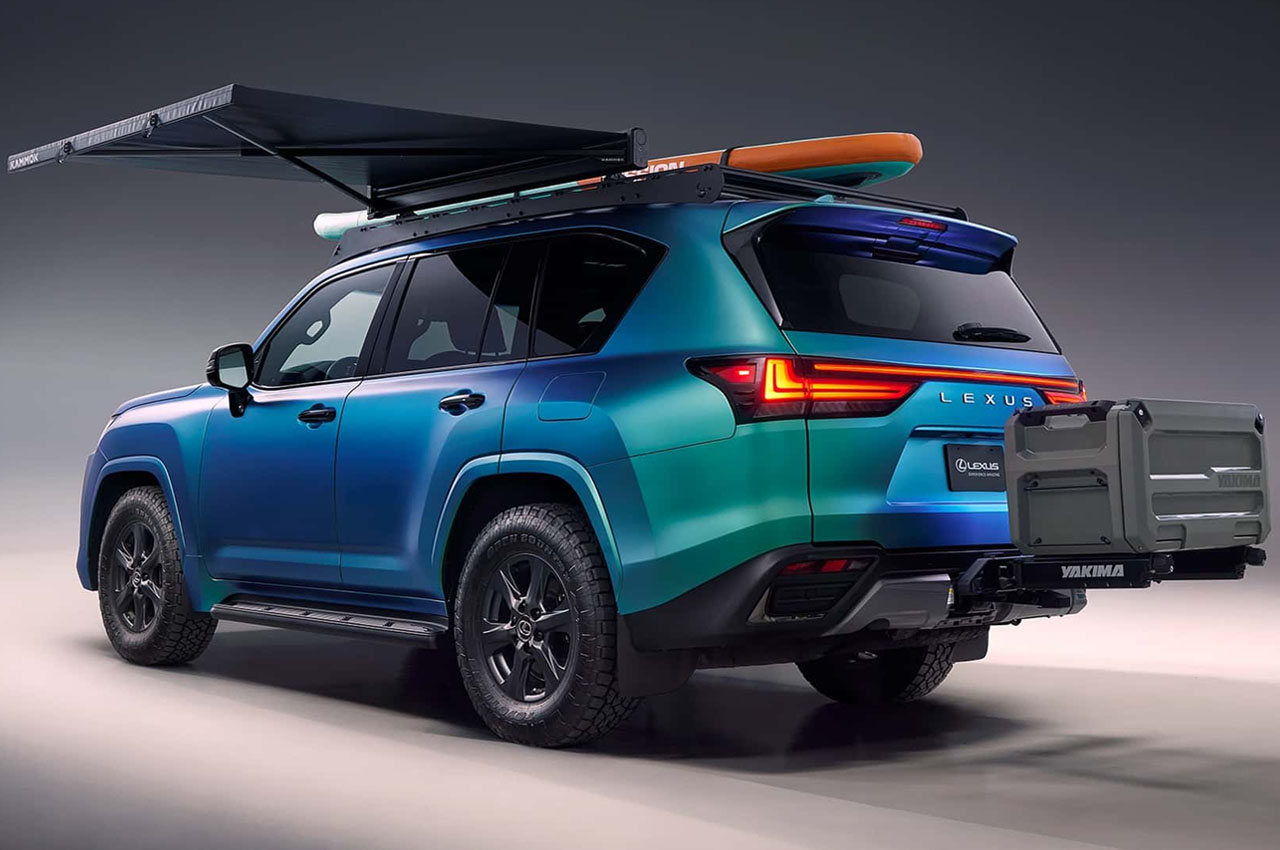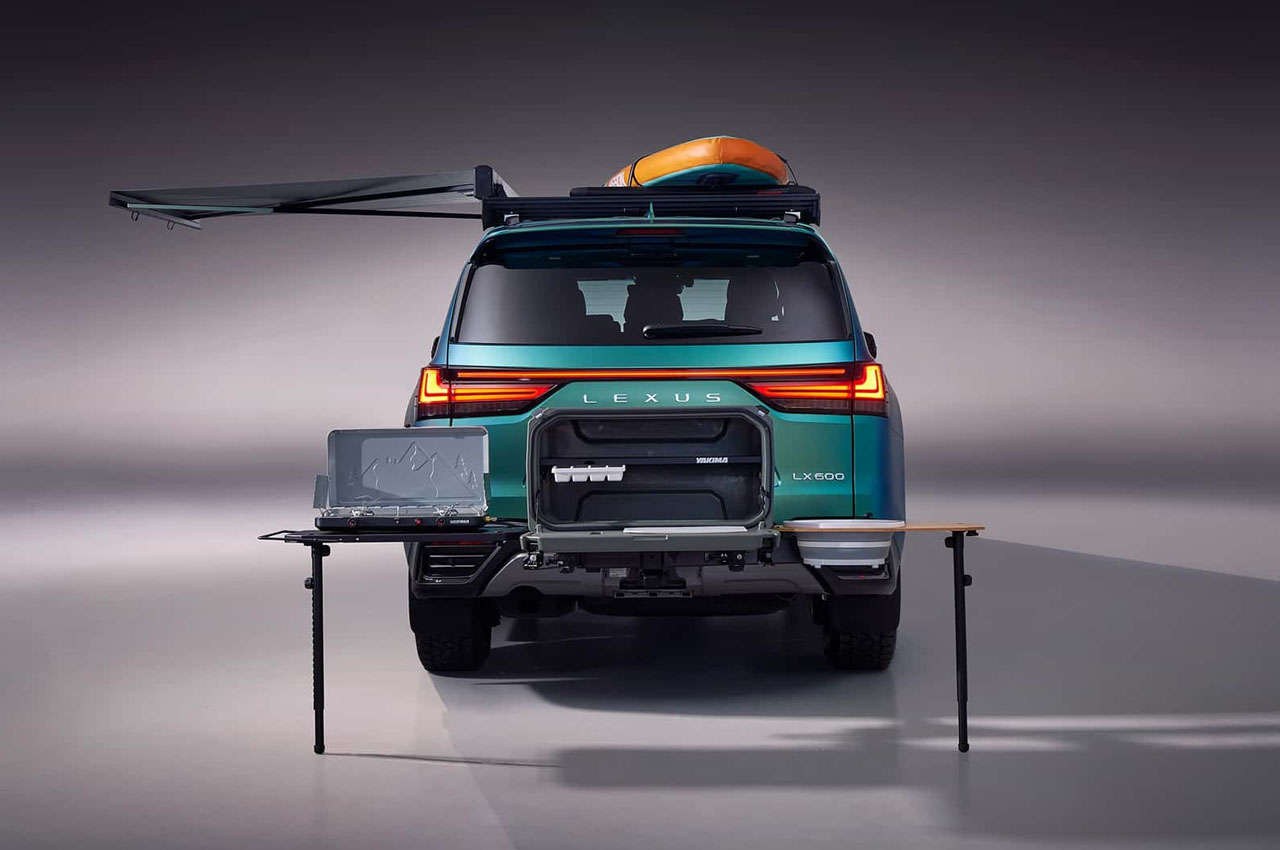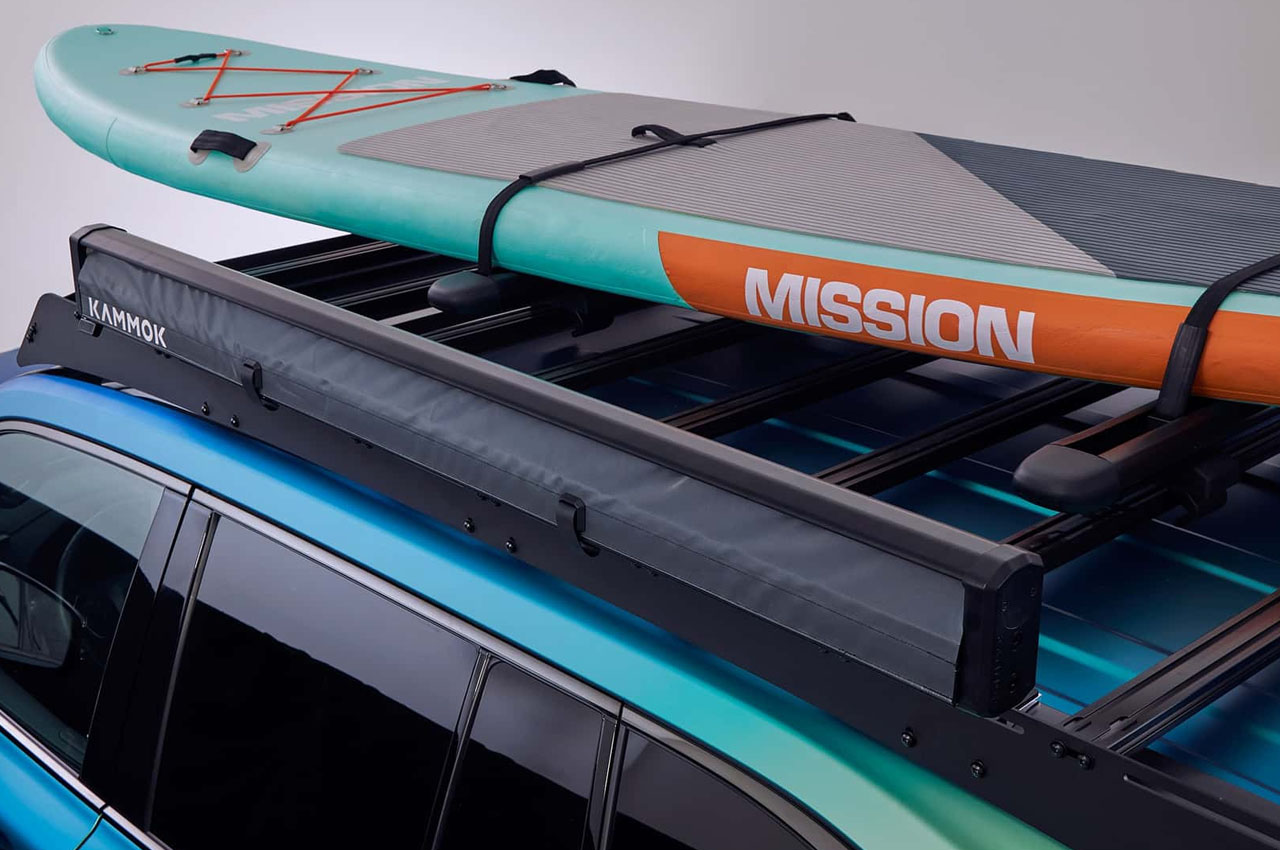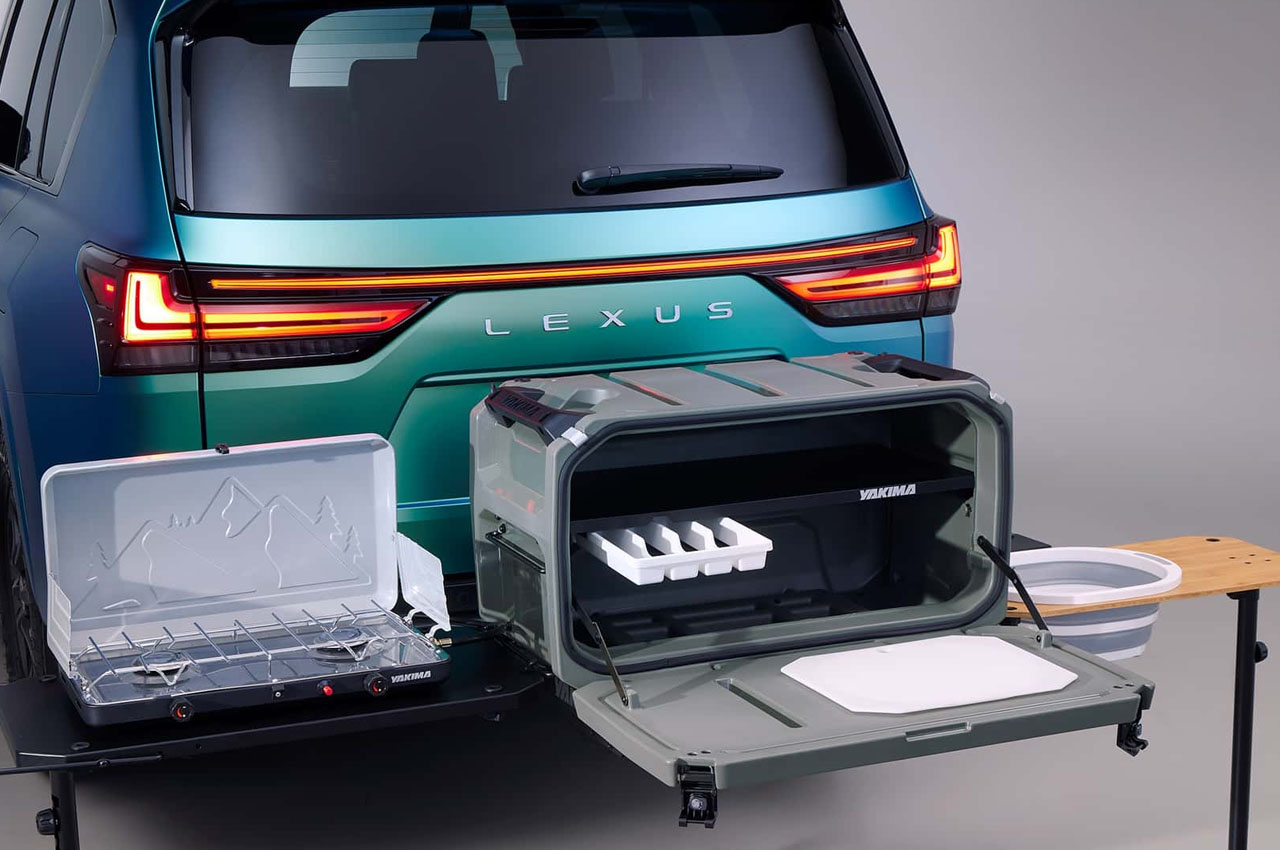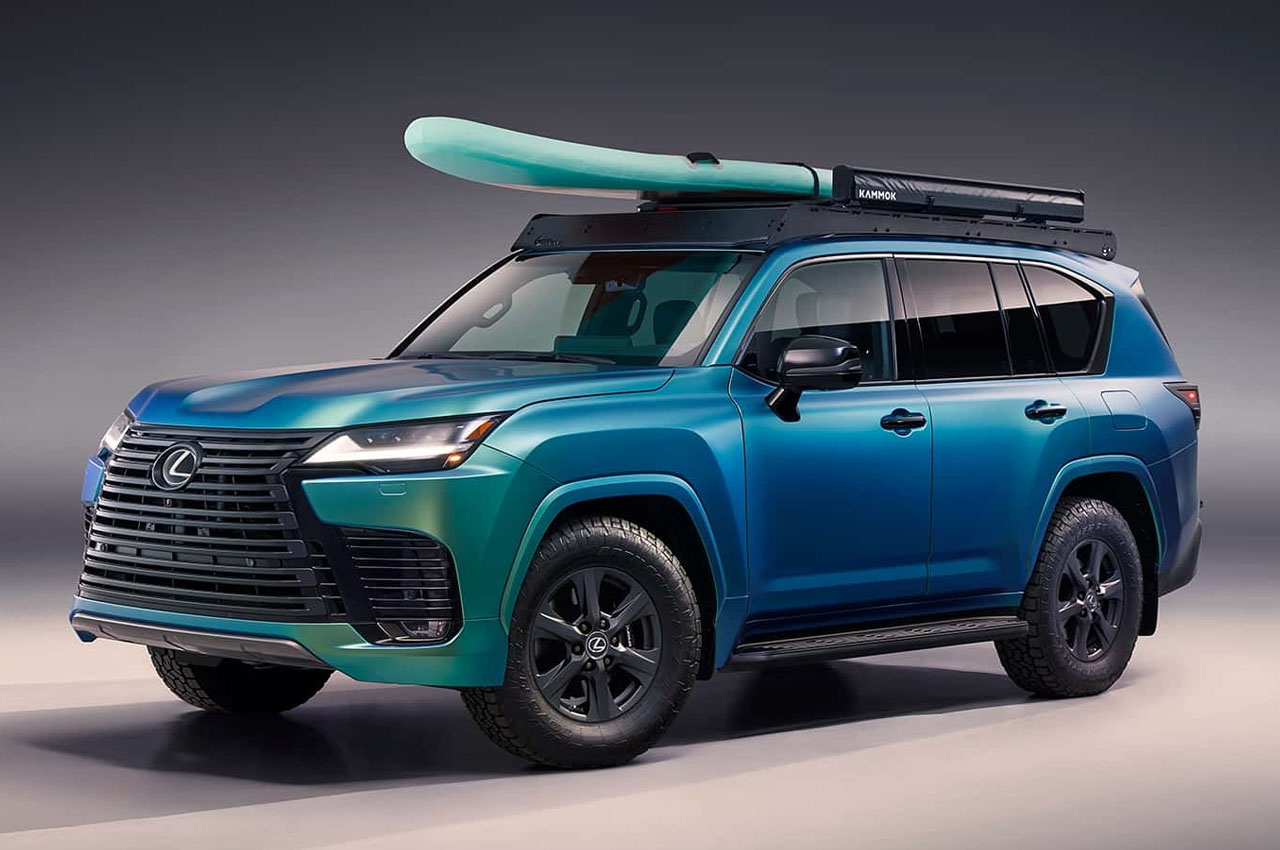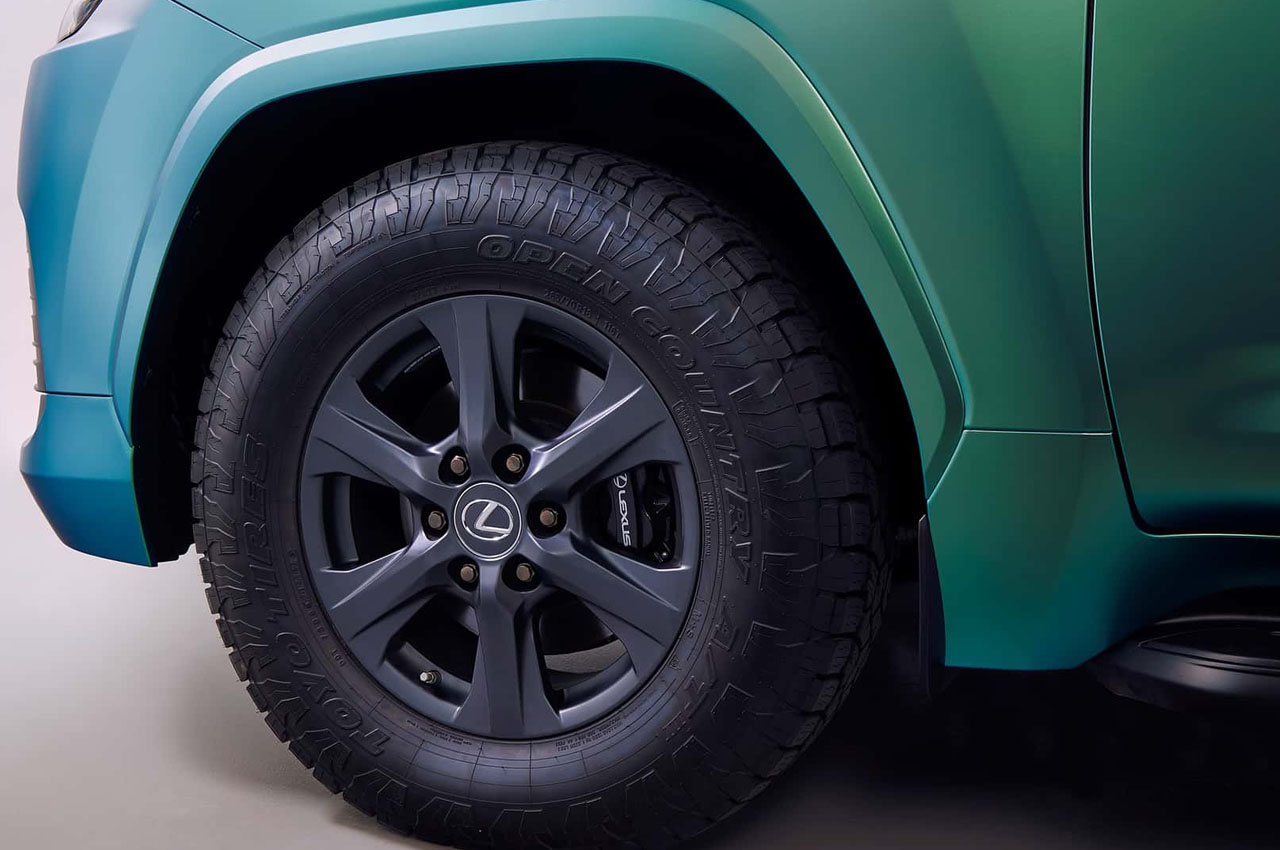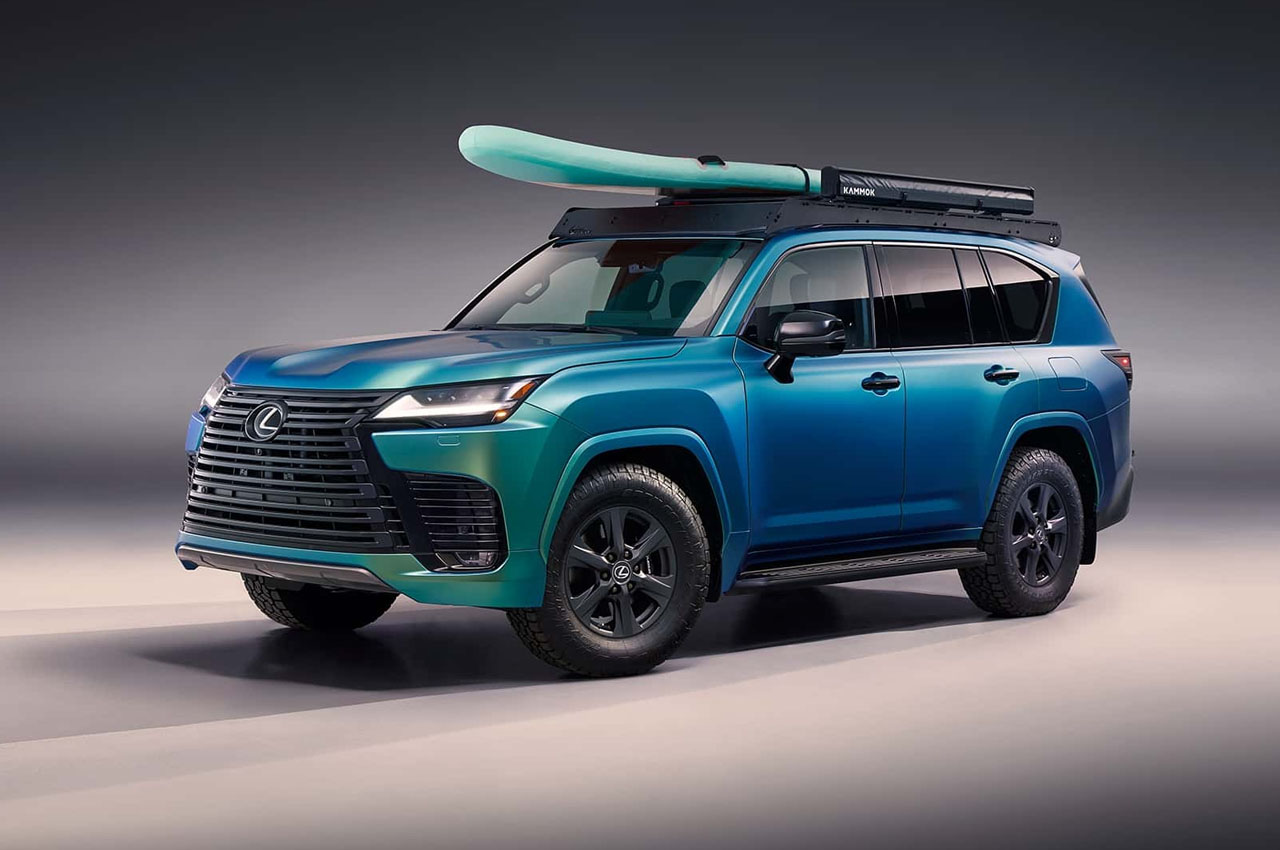
Viewed in isolation, the LF TT could easily be mistaken for a Rezvani sketch or a videogame boss vehicle: slab sides, armored arches, and a stance that looks ready to drive through a building rather than around it. Only when you start tracing the lines does the Lexus in it emerge, from the long, graceful roof arc to the layered surfacing that sits underneath all the blocky geometry.
That tension between brutality and refinement is the core of the project. It borrows the visual grammar of Cybertruck‑style faceting and Rezvani‑style intimidation, then overlays it with Lexus’ obsession with crafted surfaces and precise lighting graphics. The LF TT is not trying to be a practical pickup; it is trying to answer a different question entirely: what would a Lexus halo truck look like if it had to share a stage with the loudest, most extreme machines in the segment.
Designer: Theo Flament
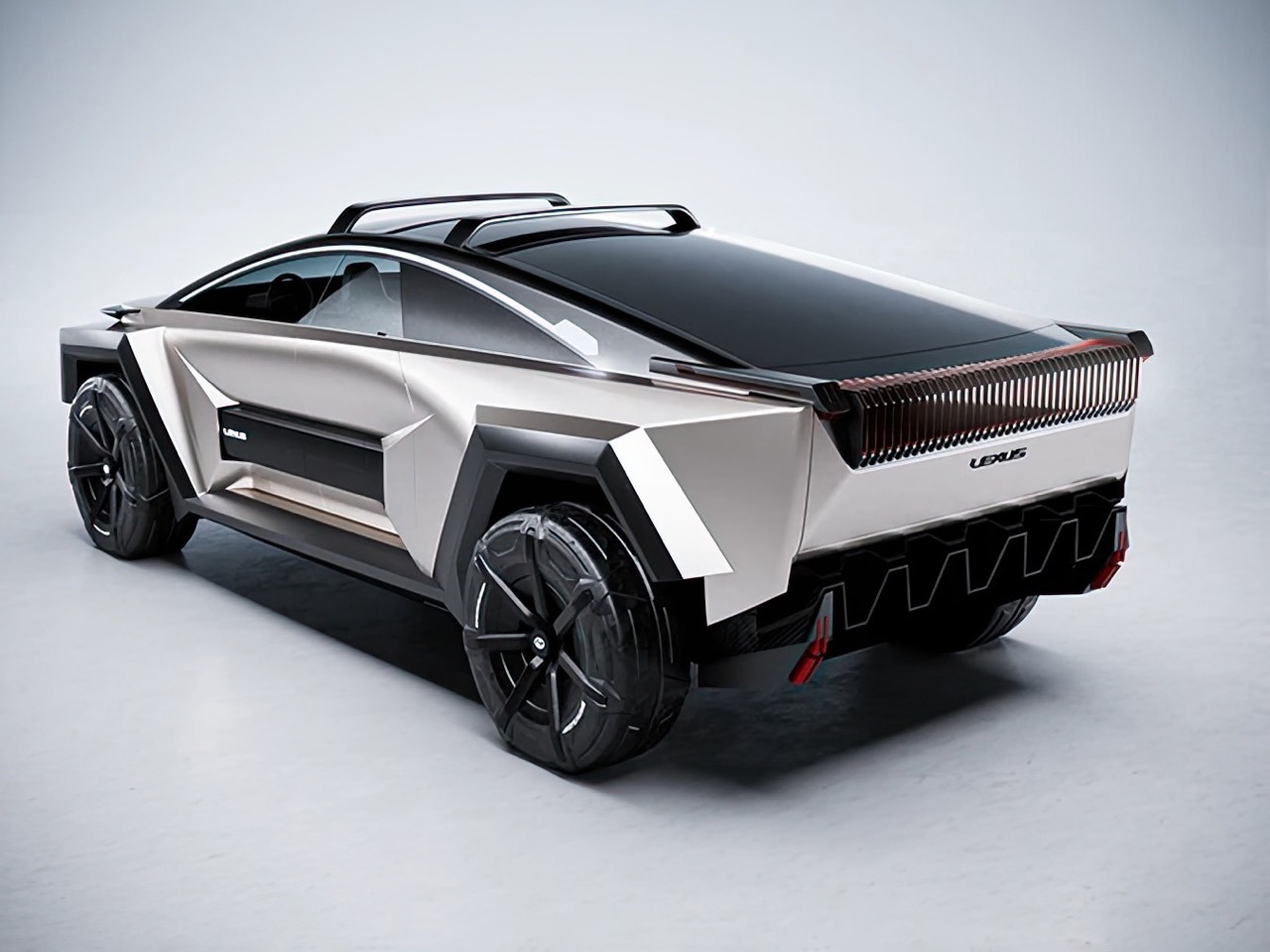
The front end is a masterclass in this translation. Instead of a literal spindle grille, the design uses a deeply recessed trapezoidal cavity to house three powerful light modules, creating the same pinched-waist effect through negative space and shadow. Above this, a razor-thin DRL stretches across the fascia, an aggressive evolution of the light blades seen on the current RX and RZ models. The hood itself features sharp, origami-like creases radiating from the central emblem, another nod to the L-Finesse philosophy of creating dynamic surfaces that catch the light. It’s a clever reinterpretation, translating a familiar brand identity into a language of hard-edged, functionalist aggression without losing the original logic or hierarchy of the face.
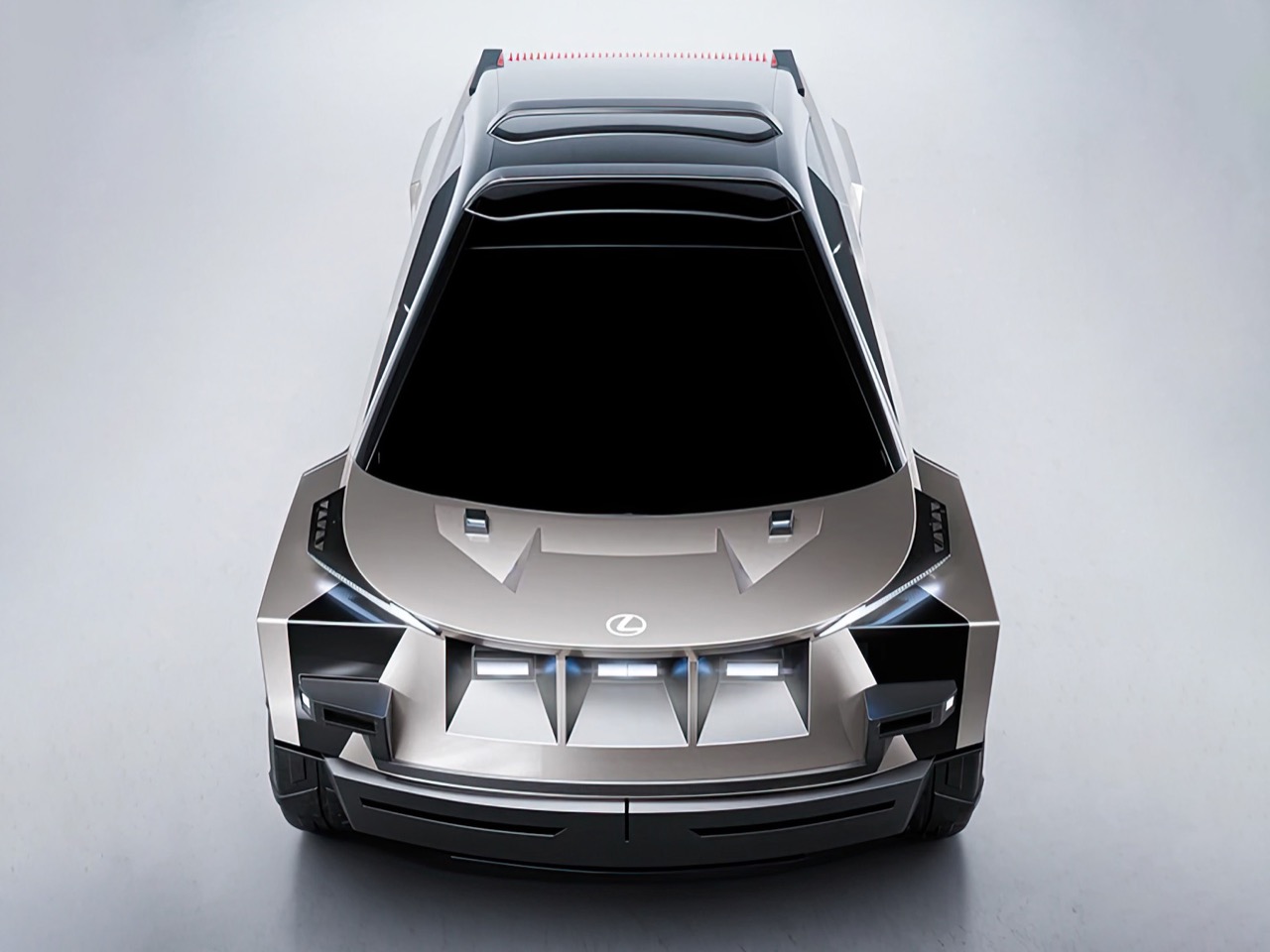
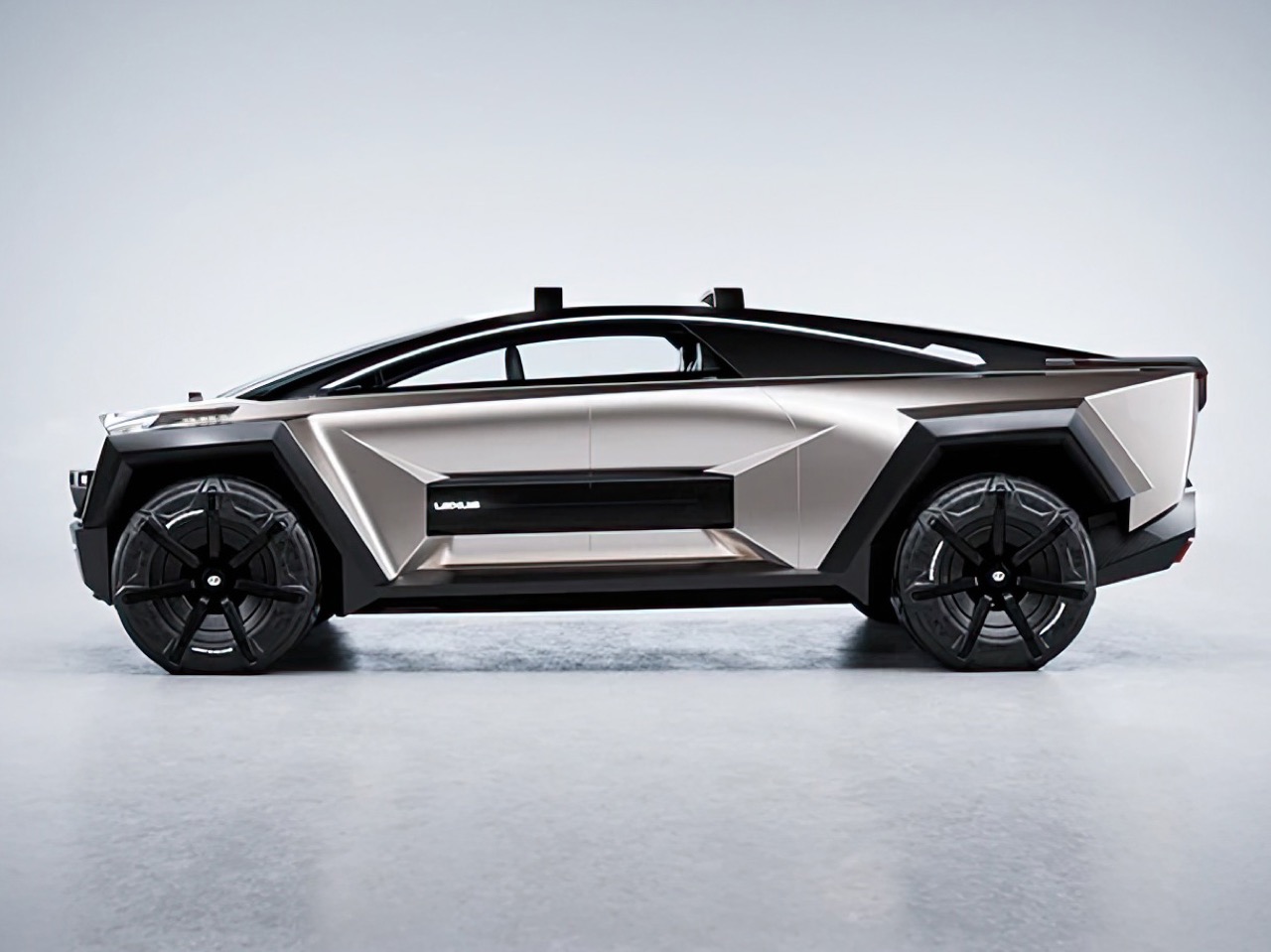
The comparison to the Cybertruck is unavoidable, but the execution of the surfacing is fundamentally different. Where Tesla’s design suggests raw, folded stainless steel, the LF TT’s body panels feel more like layered armor plating over a muscular, sculpted core. The main surfaces have subtle bulges and are broken by deep, intersecting feature lines that create a sense of tension and complexity, a hallmark of the L-Finesse language, just sharpened to a knife’s edge. Capping it all is a sleek, coupe-like glasshouse with a continuous arc from the A-pillar to the tail. This silhouette is much closer to a performance GT like the Lexus LC than any utility vehicle, reinforcing its road-biased, high-performance mission.
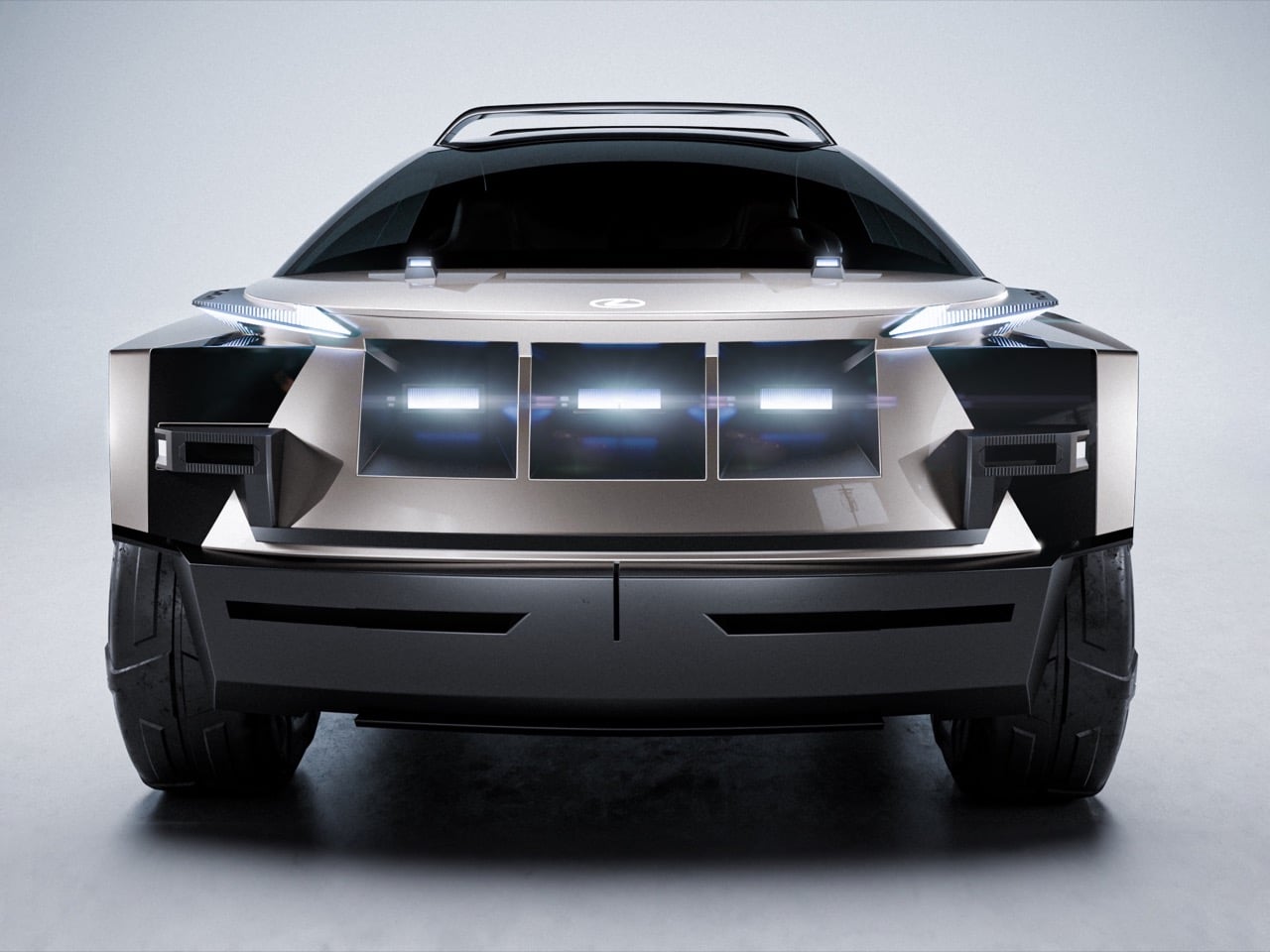
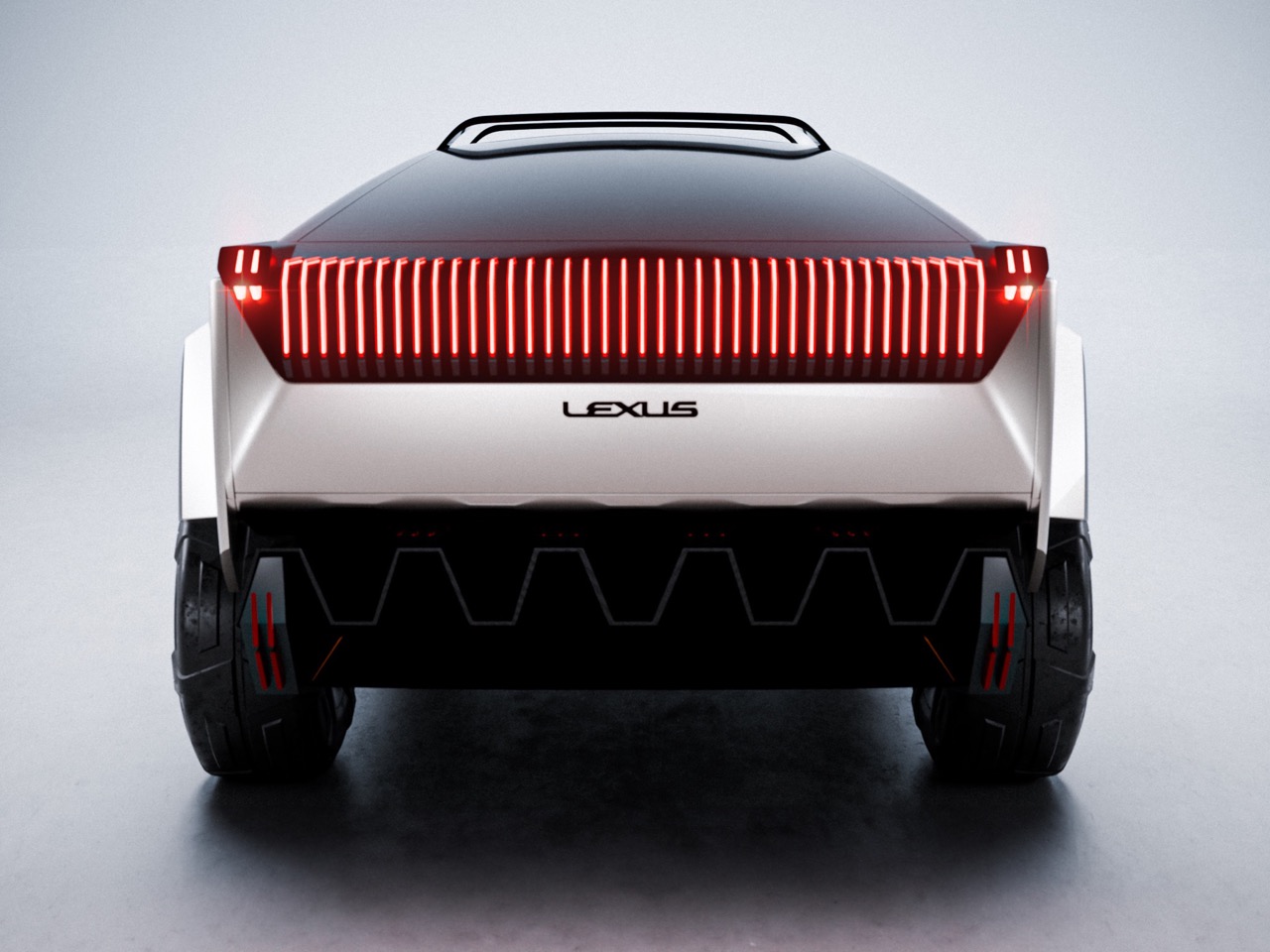
This theme of reinterpreted signatures continues at the rear. The full-width light bar, now a staple for Lexus, is rendered as a series of tightly packed vertical fins, adding a level of detail and precision that feels more like a high-end watch than a simple taillight. This intricate detail work reinforces the LF TT’s true purpose. It’s not a workhorse. The short rear overhang, fastback profile, and massive, stylized wheels on low-profile tires clearly position it as a high-performance halo product. It’s a rally-raid supercar for the road, a kind of “LF-A of trucks” meant to showcase technological prowess and design confidence rather than payload capacity or pure off-road practicality. It’s a statement piece, designed for presence above all else.
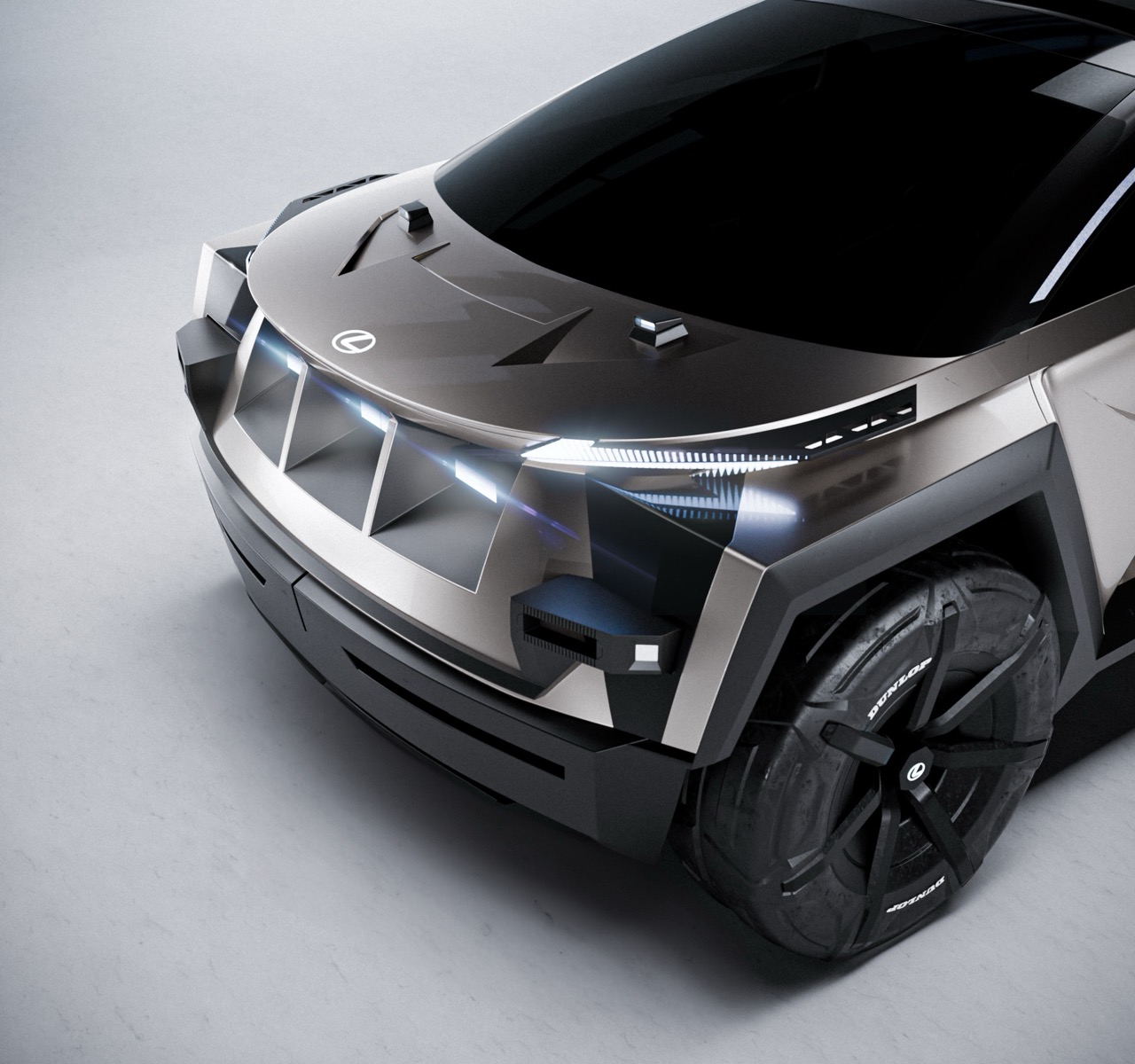
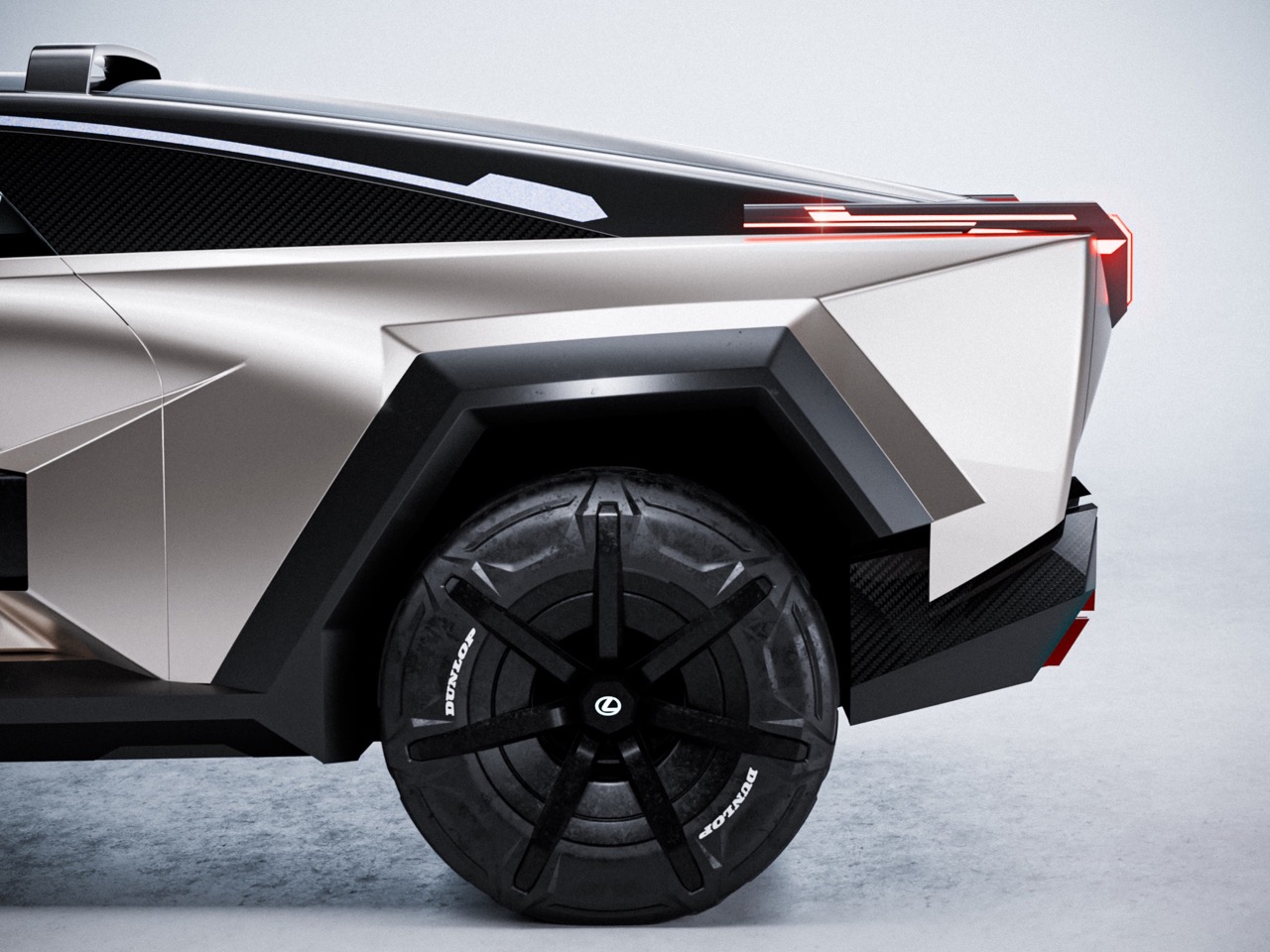
The post This Armored Lexus Concept Borrows From Cybertruck and Rezvani, But Stays Premium first appeared on Yanko Design.
